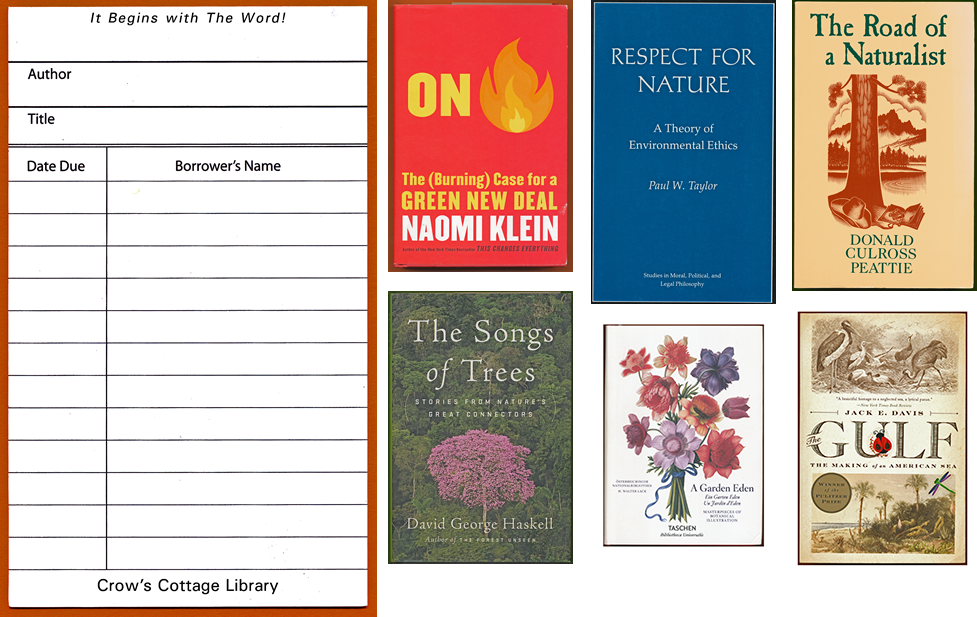
A Naturalist's Library
Ebenezer Baldwin Bowles | The Ozark Highlands
A list of books about nature … can you imagine how many printed pages you would need for the list to be comprehensive? More than we can imagine. We typed “nature books” into a Google search today and found the number 2,780,000,000. Yes, two and three-quarter billion! Imagine that.
Our list, on the other hand, tops out at a few hundred — a list of the books perched on shelves here at Crow's Cottage, books we can pick-up and hold, books for turning pages and underlining passages, books to consult, books to recommend and discuss with friends.
Well, mostly. A smattering of the books listed here are forever trapped in the ghostly cyber vaults of Audible, Kindle, and Google Books and cannot come out to play. We must enter into their Internet domicile to read and study. Compromise, I suppose, is necessary in this raging digital world. Electronic text has its place but cannot fully replace a flesh-and-blood book in hand.
In Hope of Inspiring Interest
Ours is an eclectic little library, shared here in hope of inspiring interest or confirming mutual sentiment. We also admit that, while transcribing our books into this cyber container, we see that the majority relate to the Kingdom of Plants. We pledge over coming days to expand our library to include mammals, fish, insects, and reptiles.
For some books, we've included scans of the cover jacket, or the title page, or interior illustrations. For a few others, we've included a little review or a snippet or two of informal commentary. And, as always, we'd love to hear from you. You can write to ebenezer@crowscottage.com or drop us an old-school note at PO Box 1890 in Farmington, AR 72730.
N O T E : On June 7, 2020, we are pleased to report that our Naturalist's Library is well on its way to maturity. We've listed over one hundred books, but we've got a ways to go. Maybe one day we shall finish the job. Just remember, you're welcome to visit any ole time.

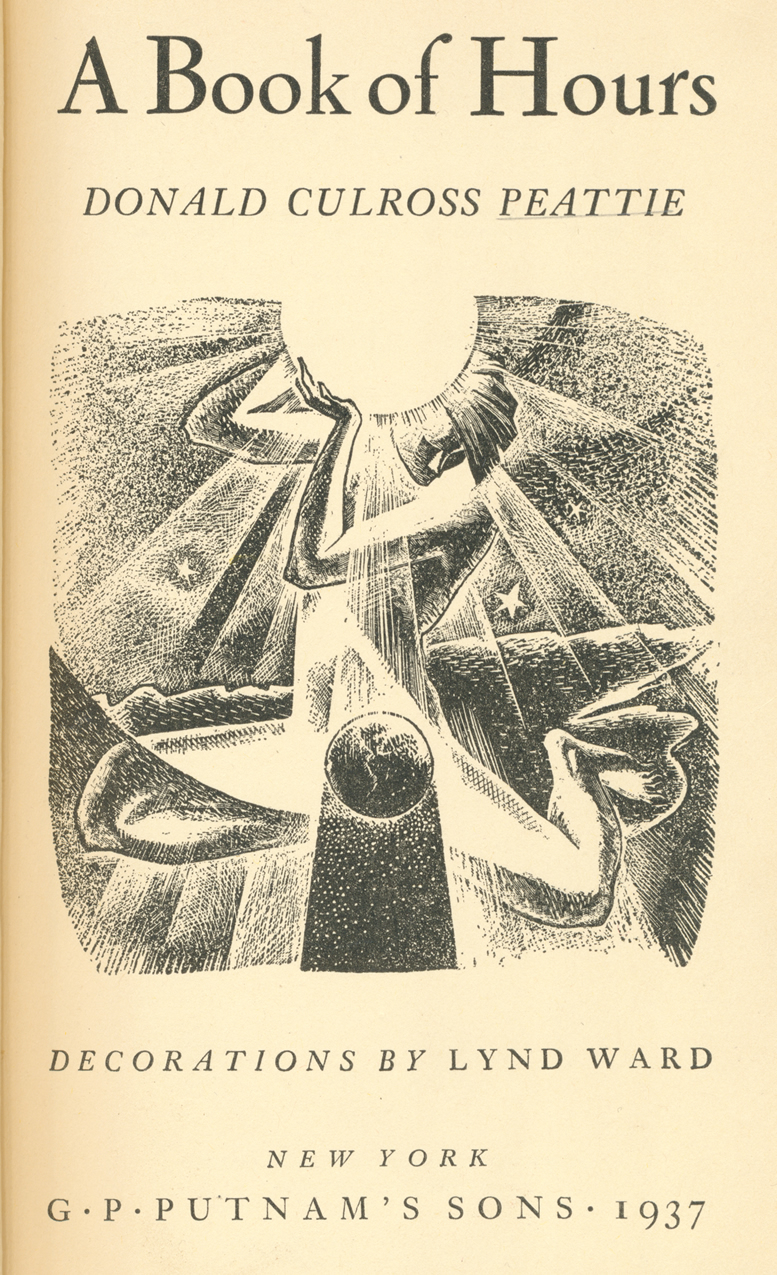
A Book of Hours
By Donald Culross Peattie
Decorations by Lynd Ward
1937 | G. P. Putnam's Sons New York | 202 pages
That one of our most textually melodious and poetic naturalists has fallen into obscurity remains a mystery here at 3 Dog Acres, though we realize the canon is a fickle reflection of generational tastes and critical whim. No matter. Here at the Cottage, Donald Culross Peattie (1898-1964) stands beside Muir, Leopold, and Burroughs at the symbolic pinnacle of our naturalist's library. Yes, it's a conceited mistake to rank writers into an artificial hierarchy, so we'll stand corrected — how could we overlook Mary Oliver and Thoreau? — and simply share some observations about Mr. Peattie and his works.
“To have something to say, one must endure, one must receive the actual input of experience upon the senses,” Mr. Peattie writes in A Book of Hours. “Field experience, the naturalists would call it.” Mr. Peattie has lots to say and a wealth of field experience — and he says it with the authority of a true outdoorsman, as a man who knows nature intimately, as if the natural realm is part of his inner being.
Speaking to naturalists was an underlying theme of most everything Mr. Peattie wrote. His Natural History of North American Trees, first published in 1948, is a masterwork of observation and research, likely the best book ever written about trees. A Book of Hours follows an entirely different course, spending much of its narrative time in the city — where the author demonstrates a special affinity for birds.
Morning Birds, Voices of Night
“There will be a last day for each of us on earth when we shall hear the morning birds, when we bridge for the last time the slender but the very deep chasm that divides their affirmation from the solemnity of the voices of night,” he writes in Chapter Four Ante Meridian. “(And of these latter note the somber names — screech owl and whippoorwill, black-crowned night heron, nighthawk, vesper sparrow and black-billed cuckoo.) On that day, when the gorge of silence is encountered, it will be a brink without further shore.”
A Book of Hours is organized in twenty-four chapters, one each for the hours of the day and night. In Chapter Four Ante Meridian, Mr. Peattie creates one of the most observant and powerful portraits of a bird one will ever read. We quote (in part): “It is the way of swifts, it seems, each hour before dawn to arise in darkness and, describing fantastic evolutions, spiral up and up to salute the morning where the radial lines of light, overshooting the mark of the city, attain unthinkable altitudes in upper space.”
He continues: “Though they lead crepuscular lives, and by preference inhabit darkness, the swifts none the less have a particular name of honor for the day. They have business with the dawn. They take one bath of glory and, if you like to think of it that way, dance before the Lord.” Mr. Peattie tells us the swifts “rouse in the darkness of their chimney pits,” seeking a light we cannot see “and glory in it while it is pure, in realms — aviators find them at six thousand feet altitude, flying at one hundred miles an hour — above our dust and our understanding.”
A Naturalist's Life in the City
The swift passage is our favorite in a narrative of favorites. Mr. Peattie manages time and again to open the naturalist's eye to life in the city. Though the city is never identified, it must be either Chicago, where he grew up and studied at the University of Chicago, or Washington D.C., where he worked as nature columnist for the Washington Star from 1924 to 1935. Some critics consider him to be the most influential nature writer of the twentieth century. Joseph Wood Krutch, whose natural history The Great Chain of Life is included in our library, opined that at the peak of his career, Mr. Peattie was “perhaps the most widely read of all contemporary American nature writers.”
We arrive, then, at Two Post Meridian to find a menagerie of critters, both city and country, greeting the afternoon. “Now, then, we have the North American continent in the celestial spotlight,” Mr. Peattie wrote. “It has the stage, its rattlesnakes and mocking-birds and prairie dogs uniquely performing, somewhere perhaps a brood of its seventeen-year cicadas emerging with a roar. Now its swallowtails, mandarin exquisites of the insect world, too beautiful for toil, energe in their splendor. Its many unique families of birds are at their curious and various nidulation; its flowers, appertaining to strange, ancient clans, exhale sex chilly and purely.”
Nidulation? Now that's an arcane and interesting word, one I couldn't find verbatim in the dictionary, though the American Heritage lists nidus, a nest constructed for the laying of fertile eggs. Mr. Peattie is constantly stretching the boundaries of the language, flying high like the swift in a style uniquely his own.
A New Edition from Trinity University Press
It's time to tamp down our enthusiasm and bring this review to a conclusion. We were fortunate to corral a first edition of A Book of Hours, which was discarded from the Chicago Public Library and eventually ended up on the shelves of Wood Thrush Books, our favorite source for used nature books. Fortunately, a new edition of A Book of Hours was published by Trinity University Press in 2013 and sells for less than twenty bucks.
Let's close with another passage from the master naturalist:
The business of the naturalist is not simply discovery of the obviously new; neither is it merely census-taking; his concern is with the great flow and ebb of the primarily motivating forces. He is absorbed by the complexity of life, and it is not his business, as those who profess the mathematical sciences have sometimes thought, to reduce all phenomena to a few simple explanations. Complexity is itself one of the fundamental facts of life; as soon as you try to reduce a May morning to a few chemical laws and physical stresses, you have nothing but those laws and stresses. Life has taken wing. The naturalist knows this just as well as an artist would know it, looking at the same long, slant shafts of vaporous and holy light.
For the origin of the naturalist's science is (though he may have forgotten it) emotional; it rises from appreciation. I am not saying that the naturalist is engaged with esthetics, for they are the science of beauty. The naturalist rather perceives the beauty in science.
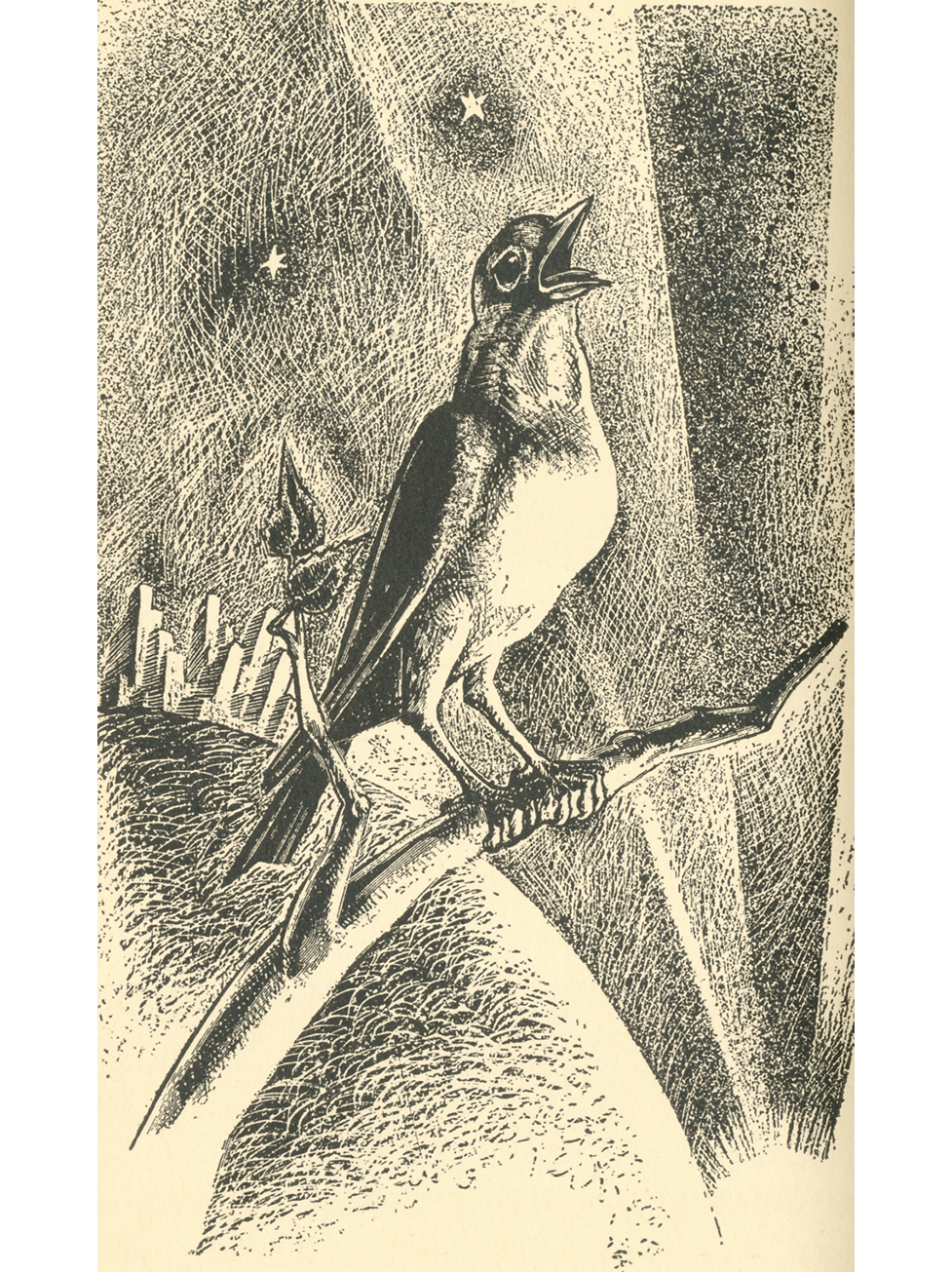
Environmental Ethics
A Very Short Introduction
By Robin Attfield
2018
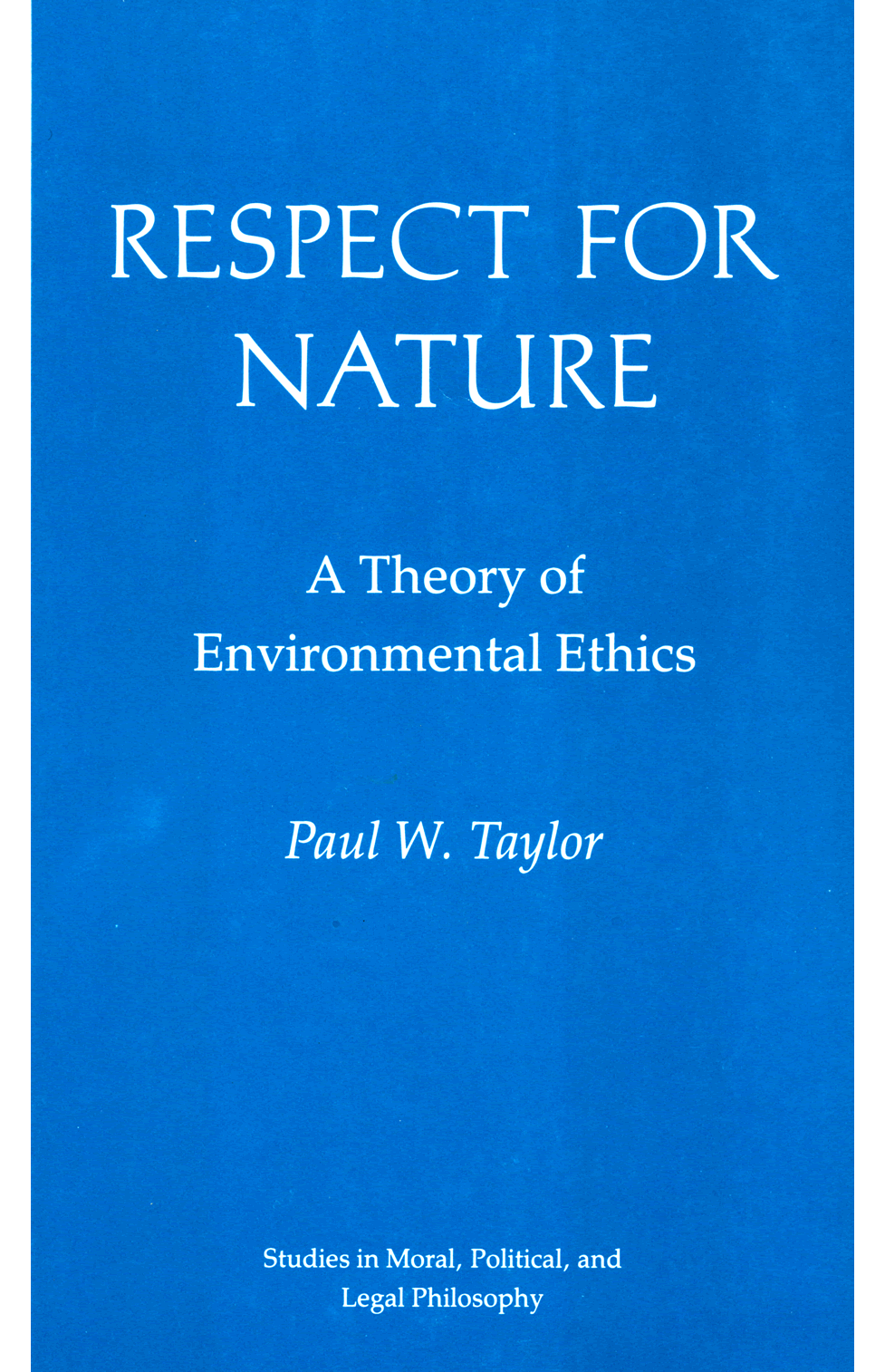
Respect for Nature
A Theory of Environmental Ethics
By Paul W. Taylor
1986
“In the domain of environmental ethics we may find that as we pursue our thoughts as far as reason can take us, our presently held beliefs and attitudes will come to appear inadequate. Indeed, our whole outlook on the natural world and the place of humans in it may be radically transformed. The moral concerns we now feel may expand and take new directions, and the awareness of our own responsibilities in relation to our planet's natural environment and its wild communities of life may be subject to profound and far-reaching changes. Only the most careful and critical reflection, carried through with total openness and honesty, can bring us nearer to whatever truth the human mind can attain in this domain of thought.” —Paul W. Taylor in Respect for Nature
Professor Taylor maintains that all living things are “ecological centers of life” and as such have a good of their own. He argues that every being with a good of its own possesses equal inherent worth and deserves equal moral consideration.

Urban Forests
A Natural History of Trees
and People in the American Cityscape
By Jill Jonnes
2016 | Viking New York | 394 pages
The Songs of Trees
Stories from Nature's Great Connectors
By David George Haskell
2017 | Viking New York | 191 pages
These are the trees that sing to Mr. Haskell: Ceibo, Balsam Fir, Sabal Palm, Green Ash, Mitsumata, Hazel, Redwood, Ponderosa Pine, Maple, Cottonwood, Callery Pear, Olive, and Japanese White Pine. Each is featured in this poetic narrative.
Under the Sea Wind
By Rachel L. Carson
1941
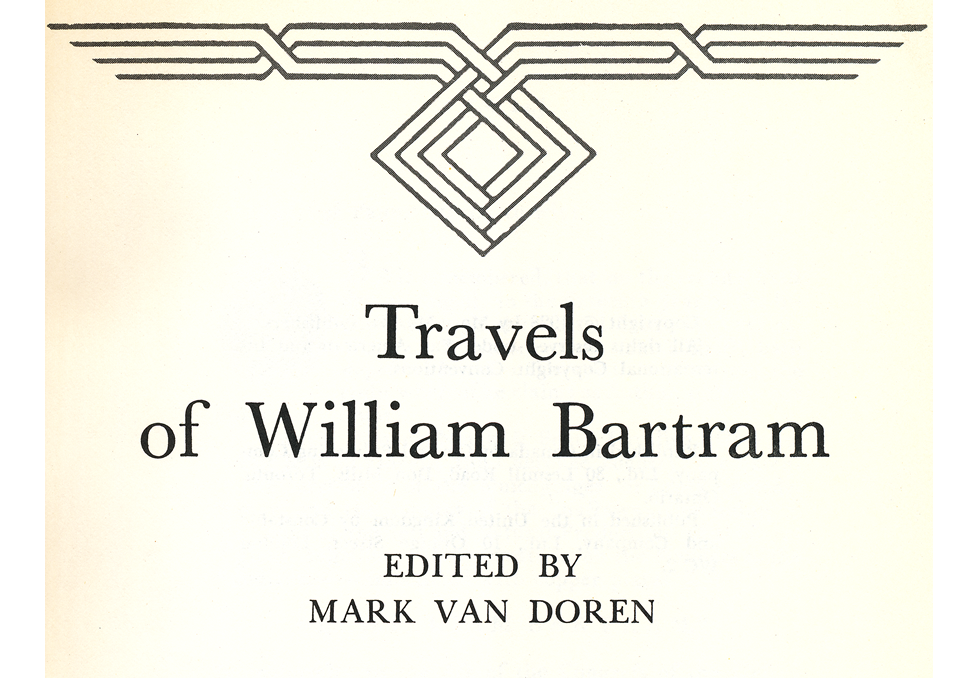
Travels of William Bartram
By William Bartram
Edited by Mark Van Doren
1791 1928 1955 | Dover Publications New York | 414 pages
An historic travelogue, rich in detail and personality, William Bartram's Travels carries us back to the Eighteenth Century with vivid descriptions of a New World in North America. “A major source work in American geography, anthropology, and natural history, it contains accurate and entertaining descriptions of the area of the New World now embraced by Florida, Georgia, and the Carolinas,” the back cover states.
Editor Van Doren tells us that poets Coleridge and Wordsworth were major fans of Travels, finding Mr. Bartram's text a valuable source of inspiration and imagery. Mr. Bartram (1739-1823) gained his appreciation for nature early when he played in his father's botanical garden in Philadelphia, the first of its kind in the United States.
We've gotta admit, Travels is one special book. Mr. Bartram's descriptive power and his eye for detail breathe life into the narrative, introducing us to the people, places, animals, plants, and adventures he encountered on his travels. He was also a gifted artist — a baker's dozen of his drawings are included in the Dover edition. Three are reproduced below.
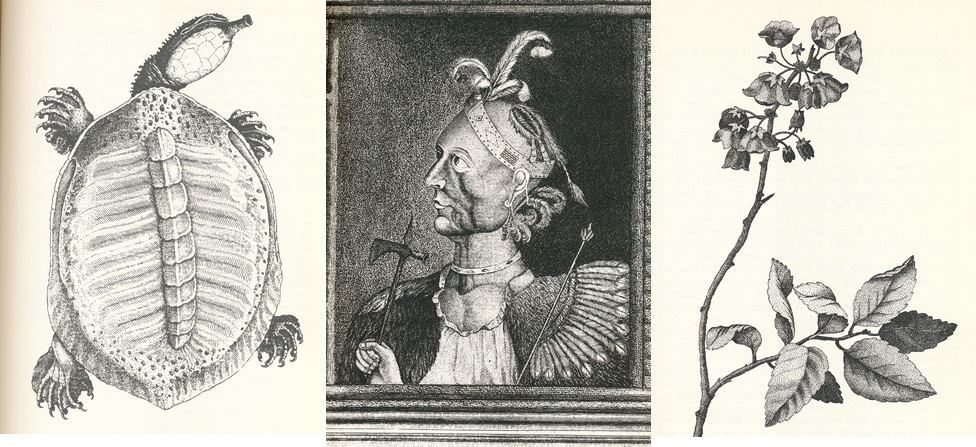
Frightful Chaos in a Tempest
What better way to illustrate an author's skill than through a typical passage. Here we find Mr. Bartram navigating a lake in Florida on the way to a friend's house when the force of a tempest bears down upon him. He is searching for a safe place to ride out the storm.
What a dreadful rushing and roaring there was every where around me! .… And to my utter confusion and astonishment, I could not find from what particular quarter its strongest current or direction came.… The high forests behind me bent to the blasts; and the sturdy limbs of the trees cracked.… Soon floods of rain fell during the space of half or three quarters on an hour, that my boat was filled, and I expected every moment when I should see her sink to the bottom of the lake.… For a great part of the time the rain came down with such rapidity, and fell in such quantities, that every object was totally obscured, excepting the continual streams or rivers of lightning, pouring from the clouds. All seemed a frightful chaos. When the wind and rain abated, I was overjoyed to see the face of nature again appear.
Mr. Bartram arrived safely at his friend's plantation, only to witness a scene of irreparable damages. His vivid description of the devastation captures the sense of loss both great and small. We invite you to read about the tempest on page 133 after you secure your copy. You also may find a scanned copy of the 1791 edition by searching Google Books or the Hathi Trust Digital Library.
Climate Change
A Very Short Introduction
Third Edition
By Mark Maslin
2014 | Oxford University Press Oxford | 187 pages

On Fire
The (Burning) Case
for a Green New Deal
By Naomi Klein
2019 | Simon & Schuster New York | 309 pages
The Green New Deal is much mentioned and much misunderstood in the arena of cultural warfare — partly because of sustained counterattacks from the right, and partly because its champions have fallen into squabbling about specifics and timetables.
The “official” Green New Deal rests in limbo as H.Res.109 in the United States House of Representatives. The Resolution was filed by Alexandria Ocasio-Cortez on February 7, 2019, under the title “Recognizing the duty of the Federal Government to create a Green New Deal.” H.Res.109 has gone nowhere forward since that day.
Trapped in a Fractured Space
Naomi Klein serves as the Green New Deal’s most potent champion in the arena of public opinion. In her book On Fire, Ms. Klein stands squarely in Representative Ocasio-Cortez’s corner. We say corner because too many adherents have painted away their optimism, through gloom and doom, and find themselves trapped in a fractured space with no obvious way out. Increasingly unable to believe in a future better than the present, these once determined adherents give up and fall silent.
Propaganda and free-floating fear from conservatives, clinging tightly to their fossil-fuel comfort zone, coupled with the left's failure to clearly identify the nuts and bolts of the Green New Deal, work against the implementation of action plans and policies intended to … let's be blunt … save Earth from humanity. “By far the biggest obstacle we are up against is hopelessness, a feeling that it's all too late, we've left it too long, and we'll never get the job done on such a short timeline.”
A Sense of Common Purpose?
The idea of a Green New Deal has been floating 'round political and social discourse for over a decade now, but the movement has never gained sufficient traction to escape the imagery of a dystopian future. Optimism does remain, however. Ms. Klein hasn't given up in the quest for collective action to confront difficult truths. “Delivering that sense of common purpose is perhaps the Green New Deal's greatest promise,” she writes. “Because it isn't only the planet's life support systems that are unraveling before our eyes. So too is our social fabric, on so many fronts at once.” She writes:
(The Green New Deal) is not a magic cure for racism or misogyny or homophobia or transphobia — we still have to confront those evils head on. But if it became law, despite all the powers arrayed against it, it would give a great many of us a sense of working together toward something bigger than ourselves. Something we are all a part of creating. And it would give us a shared destination — somewhere distinctly better than where we are now. That kind of shared mission is something our late capitalist culture badly needs right now.
A Robust Introduction
On Fire: The Burning Case for a Green New Deal bookends the main body of work with a robust Introduction of new material and three chapters at the end devoted to recent developments with The Green New Deal. In between is a collection of essays and speeches on the themes of environmentalism and climate change — the BP Deepwater Horizon disaster; the arch-conservative Heartland Institute and its bombastic climate deniers; the Vatican and Pope Francis’ climate change encyclical Laudato si; speeches delivered to the American Geophysical Union and the United Kingdom's Labor Party Conference; the 2017 “Summer of Fire” in British Columbia and California; and Hurricane Maria in Puerto Rico.
Ms. Klein's character study and biographical portrait of youthful activist Greta Thunberg in the Introduction is worth the price of admission alone. And the concluding chapters highlighting the opposition to and the support for The Green New Deal raise the book to a higher level of intellectual power. But intellect alone won't get the job done. Action is needed and needed now.
Here is Ms. Klein's nine-point action plan — nine reasons why, she contends, the Green New Deal “has a fighting chance:”
1. It will be a massive job creator
2. Paying for it will create a fairer economy
3. It taps the power of emergency
4. It is procrastination-proof
5. It is recession-proof
6. It is a backlash buster
7. It can raise an army of supporters
8. It will build new alliances – and undercut the right
9. We were born for this moment
“A new vision of what humanity can be is emerging,” Ms. Klein writes in the Epilogue. “It is coming from the streets, from the schools, from workplaces, and even from inside houses of government. It's a vision that says that all of us, combined, make up the fabric of society. And when the future of life is at stake, there is nothing we cannot achieve.”
Ask the Beasts
Darwin and the God of Love
By Elizabeth A. Johnson
2014
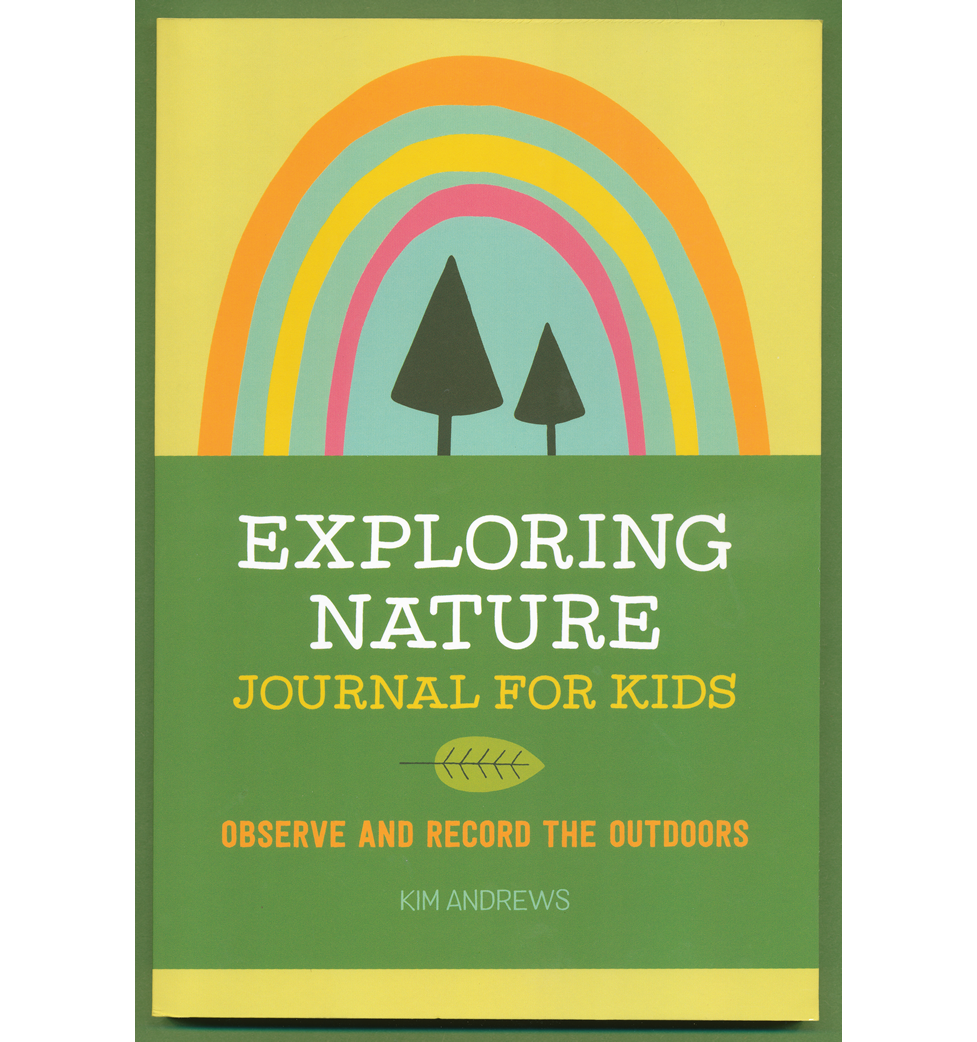
Exploring Nature
Journal for Kids
By Kim Andrews
2019 | Rockridge Press Emoryville, California | 102 pages
Bright and accessible, the Journal for Kids is a delightful creation for youngsters with a budding passion for the outdoors. The author lists an age range of five to twelve years, but fourth grade and up is our best guess for the intended audience. Truthfully, I wouldn't be embarrassed to take this sweet little book to the field — the older I get, the younger I see the world. I wonder if that's common for elders like me.
“Observe and Record the Outdoors,” Ms. Andrews urges on the cover. About two-thirds of the booklet provides space for the young naturalist to make field sketches on one side of facing pages and record pertinent data on the other: Date and Time, Location, Weather, My Field Notes, and Looking Back. The space for sketches is large enough to hold a 3x5 print from a home printer or a Walgreens photo printer.
The other third of Exploring Nature is designed to educate kids about the natural world: how to see, sketch, write, and discover. Brief tutorials include “The Explorer's Toolkit,” “What's a Nature Journal?” and examples of how to log data on the observation page and create “My Field Sketches” on the facing page. Little stories with answer blanks show kids how to observe and record information in their own words. Kids can learn from several exercises designed to get them ready for their journaling, including “The Sky Above,” “The Earth Below,” “Wild Creatures,” and “Things that Grow.”
Here at the cottage, we keep a copy or two at the ready for visiting youngsters. Gift giving is always fun! The journals don't cost much. When we checked on May 20, Amazon listed a price of $12.41. We award 5 stars for excellence.
Walden
or, Life in the Woods
By Henry David Thoreau
1854
The Ocean of Life
The Fate of Man and the Sea
By Callum Roberts
2012
A Passion for Nature
The Life of John Muir
By Donald Worster
2008
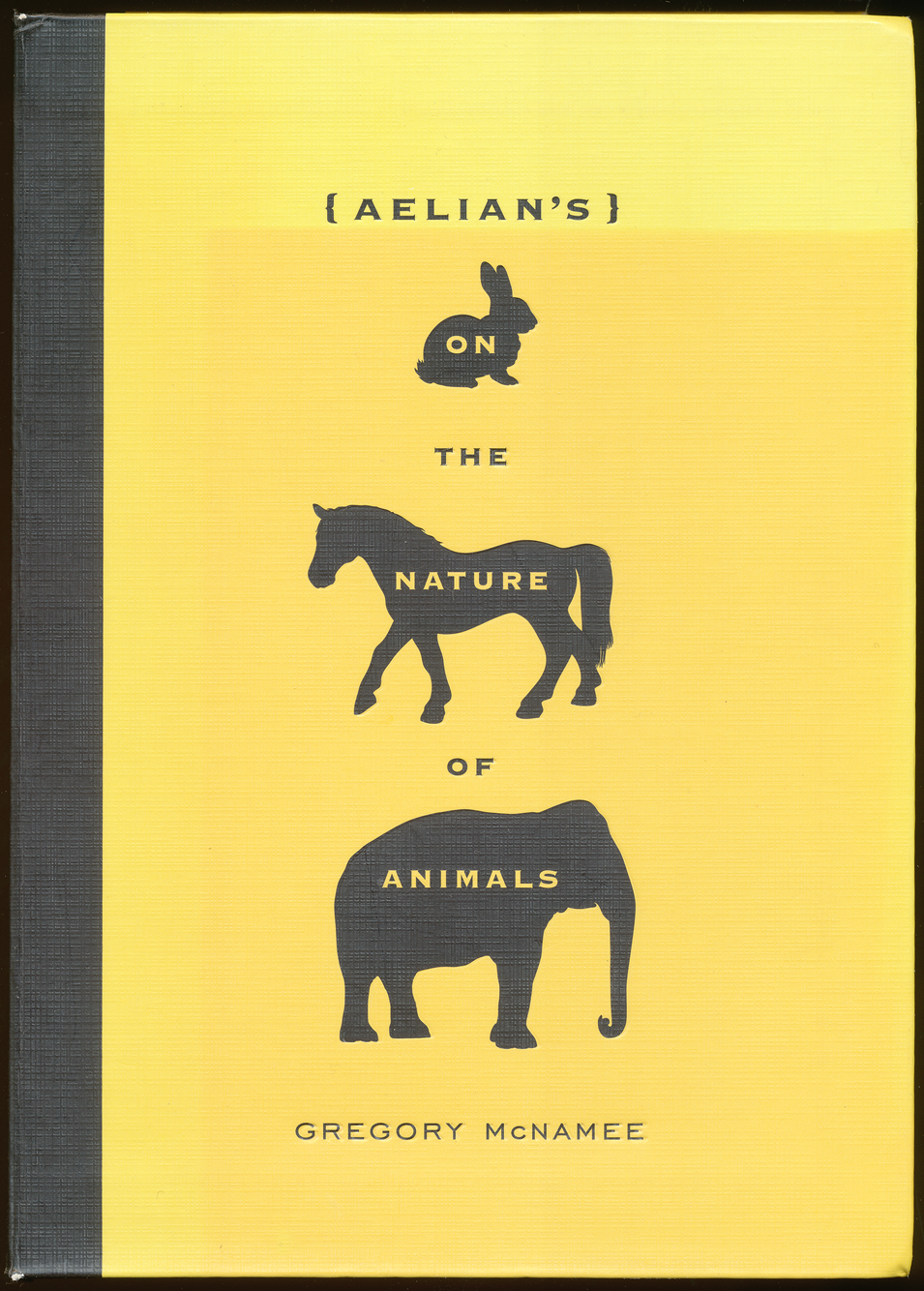
[AELIAN'S]
On the Nature of Animals
By Gregory McNamee
2011 | Trinity University Press San Antonio | 180 pages
A quirky, delightful little book, the magnum opus of a Roman storyteller born sometime between 165 and 170 CE, arrived on our desk compliments of editor/translator/scholar Gregory McNamee. Zoologists and animal aficionados among us will enjoy the non-scientific text as we glide through a long-ago menagerie of birds, fish, insects, and mammals — truly a trip to another universe.
We began our reading by searching for the crow — it's the kind of book you can enter into on any page and be satisfied. We learned of a crow from Crocodile City in Egypt who was entombed with honor by King Mares, who, the text tells us, “had a tame crow that he used as a messenger. Whenever he needed to send a dispatch, the crow, which was the fastest of messengers, would fly off, having been told the destination and already having figured out where it needed to go and where it would find food and take rest along the way. Mares rewarded the crow for its good service when it died by building that tomb.”
Aelian didn't pretend to have created a tome of pure science, but rather a compendium of known ‘facts,’ many of them fanciful and anthropomorphic, interwoven with the traditional legends of the ancients and the deities of Imperial Rome. Mr. McNamee tells us that Aelian crafted an early encyclopedia of animal behavior, and that his translations are selected pieces of the greater work.
We'd never heard of Aelian until we began to dive deeper into nature literature and its spreading branches. On the Nature of Animals is a pleasant discovery indeed. We can read about the supple and mighty stallion, the snake-eating deer, sex-crazed mice, the stone-eating sand partridge, perch who serve as proxy to the gods, the hawk who upon death sends prophetic dreams to sleeping humans, the fox who puts its ear to the ice to search for sounds of flowing water and thus determine if it's safe for humans to cross, ants who work tirelessly on the night of the full moon because they can see what they're doing, and pigs who are set on fire and then sent into squealing battle against warrior elephants, driving them to frenzy. These well-crafted examples point to a scholarly work of the utmost quality — a little book designed with the greatest of care by Trinity University Press.
Anthropocene
A Very Short Introduction
By Erle C. Ellis
2018 | Oxford University Press | 183 pages
The Vegetarian Myth
Food, Justice, Sustainability
By Lierre Keith
2009
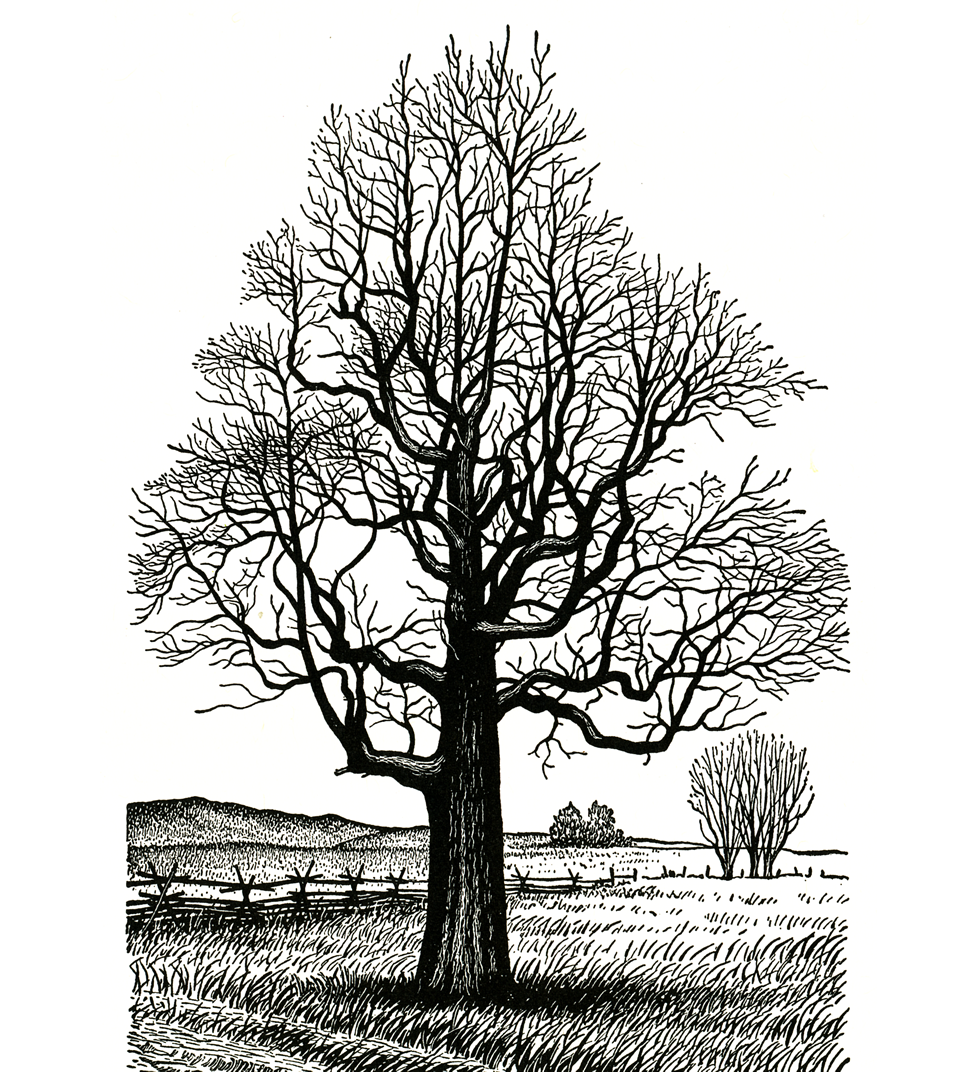
A Natural History
of North American Trees
By Donald Culross Peattie
1948
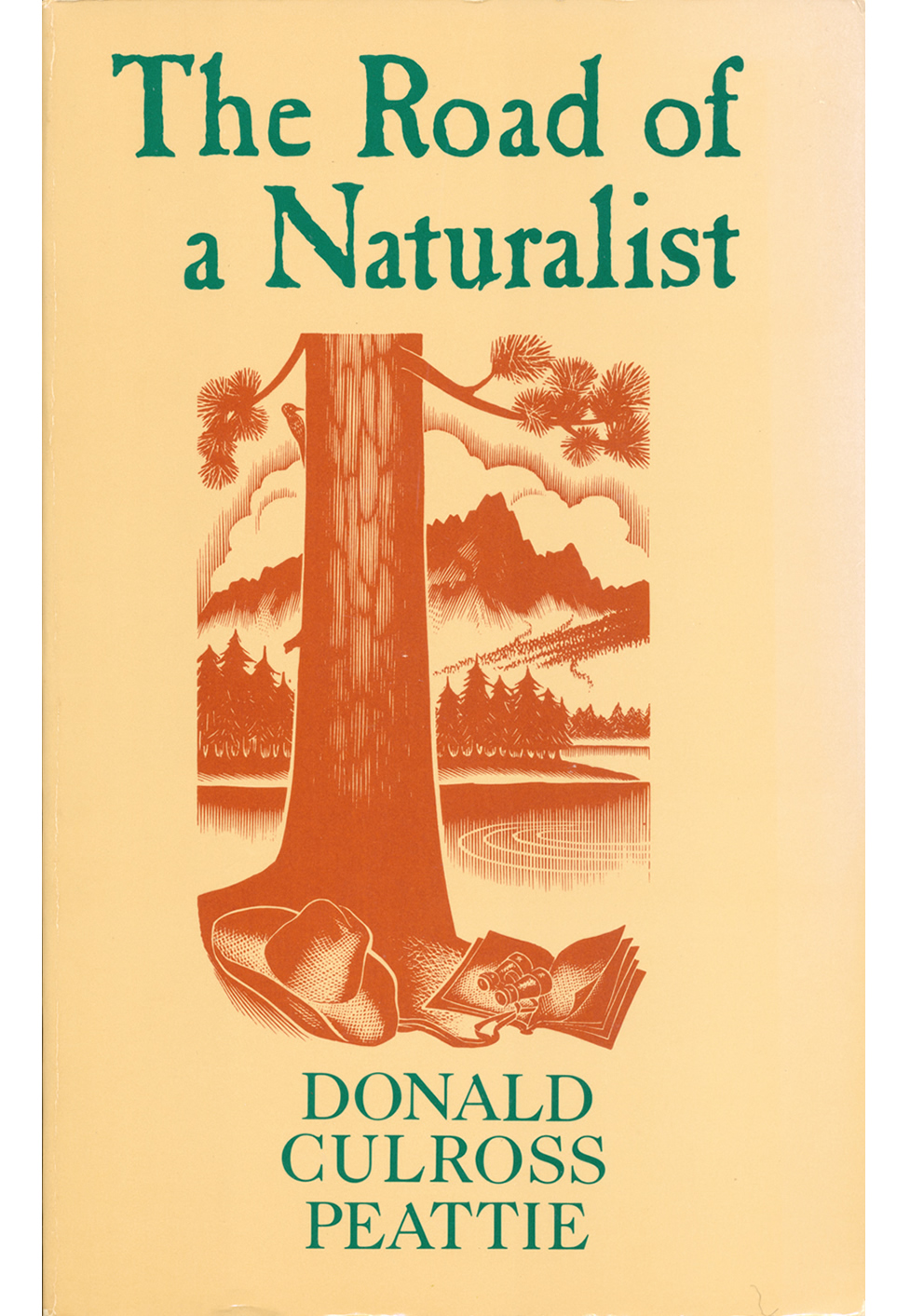
The Road of a Naturalist
By Donald Culross Peattie
1941 1986 | G.K. Hall & Co. Boston | 315 pages
The Tree Doctor
The Care of Trees and Plants
By John Davey
1907
The Human Planet
How We Created the Anthropocene
By Simon L. Lewis & Mark A. Maslin
2018 | Yale University Press Hew Haven | 465 pages
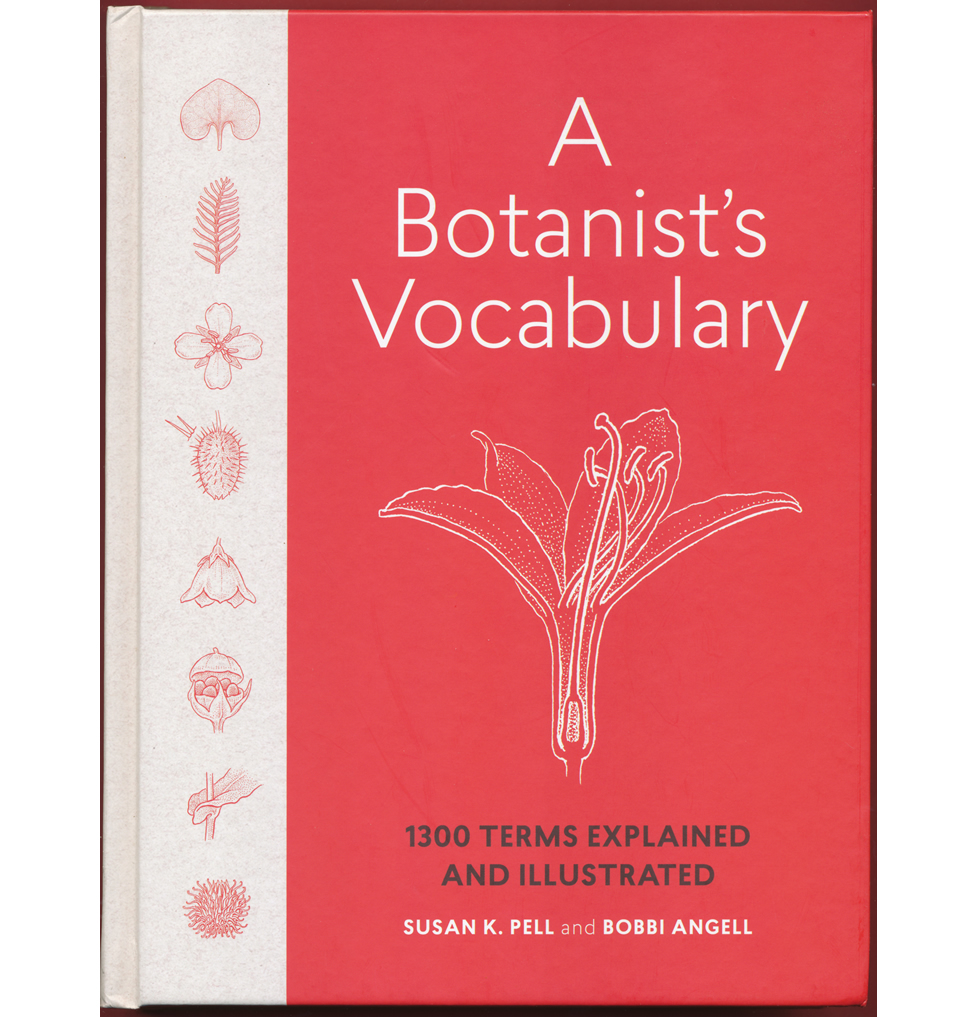
A Botanist's Vocabulary
1300 Terms Explained and Illustrated
By Susan K. Pell and Bobbi Angell
2016 | Timber Press Portland Oregon | 226 pages
A smartly designed compendium with superb botanical illustrations by New York Botanical Garden's Bobbi Angell, A Botanist's Vocabulary is ideal for browsing or for serious study of the plant kingdom. Ms. Pell's text is finely tuned in the style of a minimalist. The definitions use Latin names and/or common names where appropriate. “We describe the colors, shapes, and textures of the plants, the growth forms and fruit characteristics” in a successful attempt “to categorize and organize the incredible diversity of plants,” the authors write. The pages are airy and easy on the eye. All in all, A Botanist's Vocabulary is a well crafted work and a useful guide for the budding naturalist.
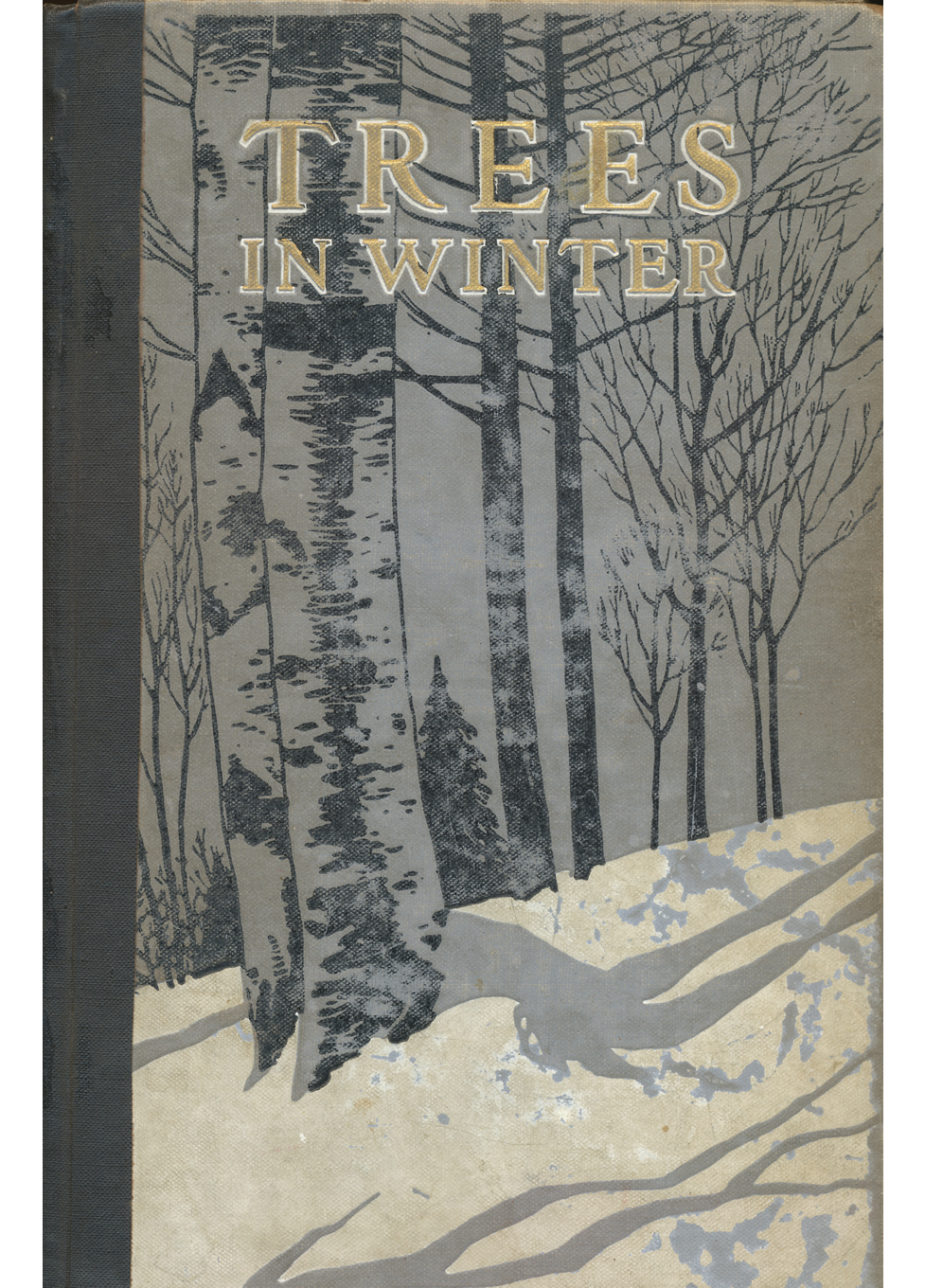
Trees in Winter
Their Study, Planting, Care,
and Identification
By Albert Francis Blakeslee and Chester Deacon Jarvis
1913 | The Macmillan Company New York | 446 pages
Signs and Seasons
By John Burroughs
1886
Talking to the Moon
Wildlife Adventures on the Plains
and Prairies of Osage Country
By John Joseph Mathews
1945 | University of Oklahoma Press Norman | 244 pages
“This is John Joseph Mathews' Walden. It is a book that a Thoreau or a Muir might write, but it is a Walden of the plains and prairies, of the 1930s and 1940s, by a Native American,” the author's wife, Elizabeth Mathews of Pawhuska, wrote in the FOREWORD. A bonus to the lyrical text is the author's line drawings, sprinkled like little early spring flowers throughout the book. We highly recommend it.
Roadside Flowers of Oklahoma
By Doyle McCoy
1976
A Field Guide to Climate Anxiety
How to Keep Your Cool
on a Warming Planet
By Sarah Jaquette Ray
2020 | University of California Press | 207 pages
Written as an antidote to the gloom and doom of contemporary climate change discourse, Ms. Ray's text speaks directly to iGen and Generation Z … and by way of aside to those “elders” given the responsibility to teach and counsel youngers “born between the early 1990s and the early 2000s.”
The author's experience as a university lecturer convinced her that Gen Z suffers from various forms of climate change anxiety, “including stress disorder, solastalgia, and eco-grief,” and that this anxiety has caused increased rates of suicide, depression, and anxiety. Anthropocene disorders, she contends, literally paralyze potential iGen activists, who lose the desire to step forward and embrace the positive aspects of climate activism. The antidote involves moving away from cold rationalism to embrace one's emotional responses to the environment and begin to believe again in the future … that environmental harmony between human and Planet Earth is entirely possible through positive, collective action. We like this book and see plenty of truth in Ms. Ray's argument — despite the generational divide that puts us on the far side of seventy.
From the book jacket: “Drawing on a decade of experience leading and teaching in college environmental studies programs, Sarah Jaquette Ray has created an 'existential tool kit' for the climate generation. Combining insights from psychology, sociology, social movements, mindfulness, and the environmental humanities, Ray explains why and how we need to let go of eco-guilt, resist burnout, and build resilience while advocating for climate justice. A Field Guide to Climate Anxiety is the essential guidebook for the climate generation — and perhaps the rest of us — as we confront the greatest environmental threat of our time.”
Ozark Highlands Trail Guide
Fourth Edition
By Tim Ernst
1988-1998
Buffalo River Hiking Trails
3.5 Edition
By Tim Ernst
1991-2007
Leaves and Flowers
or Object Lessons in Botany
By Alphonso Wood, Ph.D
1888
Old and New Plant Lore
A Symposium
The Smithsonian Series | Chase, Hitchcock, Mann et al
1931-1944
The Essential
Gilbert White of Selborne
A Godine Country Classic
By Gilbert White
1789 1985 | David R. Godine Publisher Boston | 361 pages
“Gilbert White's The Natural History of Selborne is one of the world's masterpieces of nature writing. It is the fourth most published book in the English language and has enjoyed great popularity since its first appearance in 1789,” Editor H. J. Massingham writes.
Mr. White's No. 4 ranking caught us by surprise here at the Cottage. Frankly, we had no idea that a work first published in 1789 could attain such a lofty place in the literary hierarchy two hundred and thirty years later. Some thinkers doubt the “fourth most published” claim, but it's a fact that the Godine edition is an abridgment of Mr. White's famous The Natural History and Antiquities of Selborne, which has never fallen out of print.
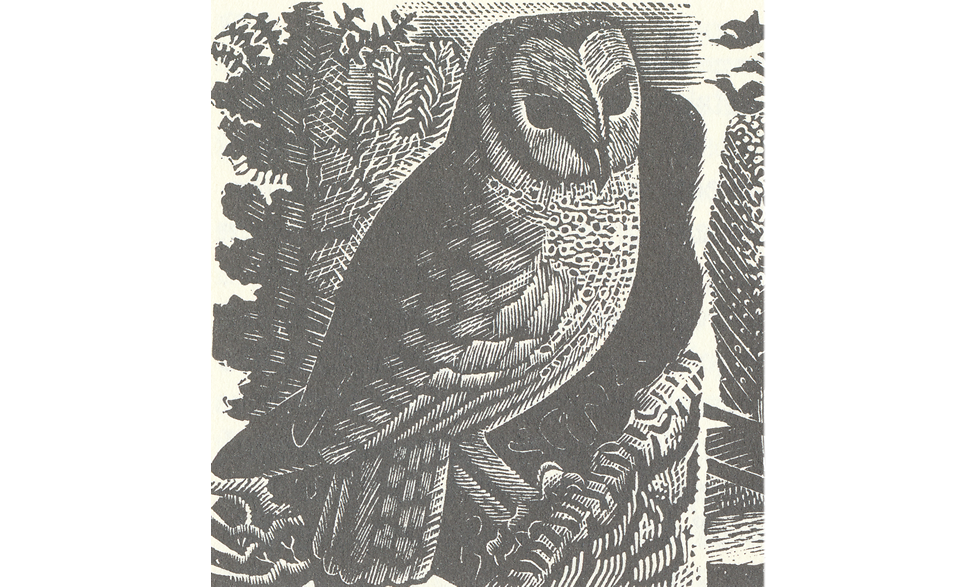
You can find a nicely scanned 1889 printing (Seventh Edition) of The Natural History on Google Books. The hard copy is held at the Harvard University Library. Mr. White's poetry is featured in the Google edition, but his central work was epistolary. He also kept a naturalist's journal, printed in the Godine version. We find the journal down-to-earth and totally interesting.
Let us close with a snippet from a letter written on September 2, 1774. It's immediately apparent that Mr. White (1720-1793) loved the birds of Selborne and wrote about them often:
The grasshopper-lark chirps all night in the height of summer.
Swans turn white the second year, and breed the third.
Sparrow-hawks sometimes breed in old crows' nests, and the kestrel in churches and ruins.
Hen-harriers breed on the ground, and seem never to settle on trees.
When redstarts shake their tails they move them horizontally, as dogs do when they fawn; the tail of a wagtail, when in motion, bobs up and down like that of a jaded horse.
Hedge-sparrows have a remarkable flirt with their wings in breeding time; as soon as the frosty mornings come they make a very piping plaintive noise.
Many birds which become silent about Midsummer, reassume their notes again in September; as the thrush, blackbird, woodlark, willow wren, &c.; hence August is by much the most mute month, the spring, summer, and autumn through.
Are birds induced to sing again because the temperament of autumn resembles that of spring? (page 121)
Geology Lab for Kids
By Garret Romaine
2017
Hiking the Wilderness
Guide to Wheeler Park, Pecos,
San Pedro Parks Wilderness Areas
By Kay Matthews
1999
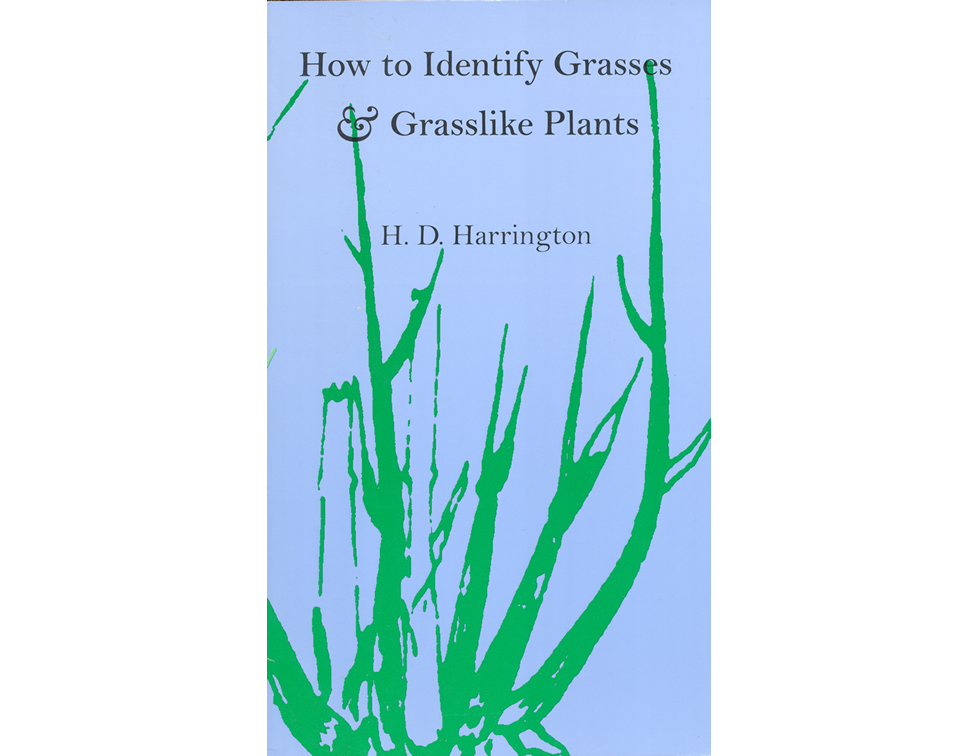
How to Identify Grasses
& Grasslike Plants,
Sedges and Rushes
By H. D. Harrington
1977 | Swallow Press / Ohio University Press Athens | 154 pages
Field Guide to the Grasses,
Sedges and Rushes
of the United States
By Bradlee Whidden
Revised by Edward Knobel and Mildred E. Faust
1899 1977 1980 | Dover Publications | 83 pages
Tallgrass Prairie Wildflowers
2nd Ed.
By Doug Ladd and Frank Oberle
2005
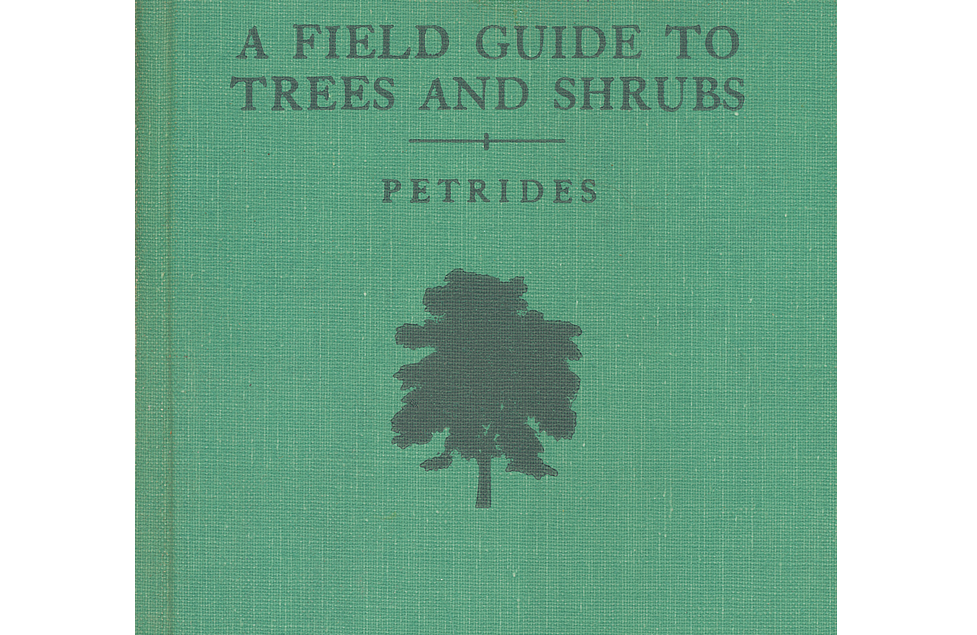
A Field Guide to Trees and Shrubs
By George A. Petrides
1958 | The Riverside Press Cambridge Massachusets | 431 pages
Striking illustrations of trees in black and white, and hundreds of crisply drawn leaves (646 species) in green and black combine to make this Peterson Field Guide a winner. The book features “field marks of all trees, shrubs, and woody vines that grow wild in the northeastern and north-central United States and in southeastern and south-central Canada,” the title page states. The authors take seriously the mission of creating “a pictorial key using obvious similarities and differences of form and structure by which the beginner can quickly run down his tree, shrub or vine.”
Professor Petrides became a Peterson Field Guide guru in the years following publication of the present volume, which rolled off the press as a Second Edition in 1972. He wrote a half dozen or more field guides for Peterson. A Professor Emeritus at Michigan State University, George A. Petrides passed away at age 95 in 2011.
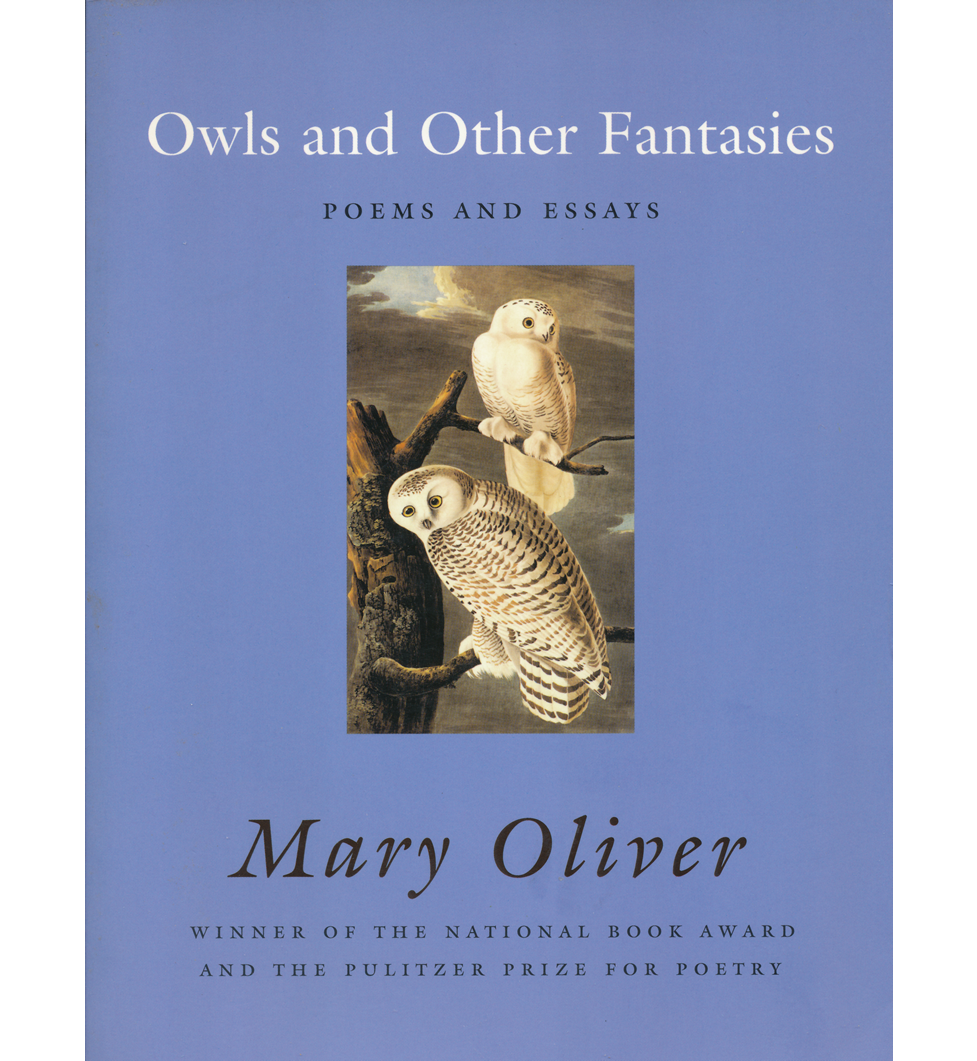
Owls and Other Fantasies
Poems and Essays
By Mary Oliver
2003 | Beacon Press Boston | 67 pages
Wrens
here I go
into the wide gardens of
wastefields blue glass clear glass
and other rubbishes blinking from the
dust from the fox tracks among the
roots and risings of
buttercups joe pye honey
suckle the queen's
lace and her
blue sailors
the little wrens
have carried a hundred sticks into
an old rusted pail and now they are
singing in the curtains of leaves they are
fluttering down to the bog they are dipping
their darling heads down to wet
their whistles how happy they are to be
diligent at last
foolish birds
Wonderful Life
The Burgess Shale
and the Nature of History
By Stephen Jay Gould
1989 | W. W. Norton & Company New York | 347 pages
Molecular Biology
A Very Short Introduction
By Aysha Divan & Janice A. Royds
2016 | Oxford University Press | 150 pages
The Borderplate Rhino
Nature in the Eye of the Beholder
By David Quammen
2000 | Scribner New York | 287 pages
A collection of 26 essays written for Outside magazine, The Boilerplate Rhino extends the naturalist's eye and creative voice to places far and near.
From the book jacket: “In lucid, penetrating prose, David Quammen takes his readers with him as he explores the world. His travels lead him to rattlesnake handlers in Texas, a lizard specialist in Baja, the dinosaur museum in Jordan, Montana, and halfway across Indonesia in search of the perfect Durian fruit. He ponders the history of nutmeg in the southern Moluccas, meditates on bioluminescent beetles while soaking in the waters of the Amazon, and delivers ‘the Dope on Eggs’ from a chicken ranch near his hometown in Montana.”
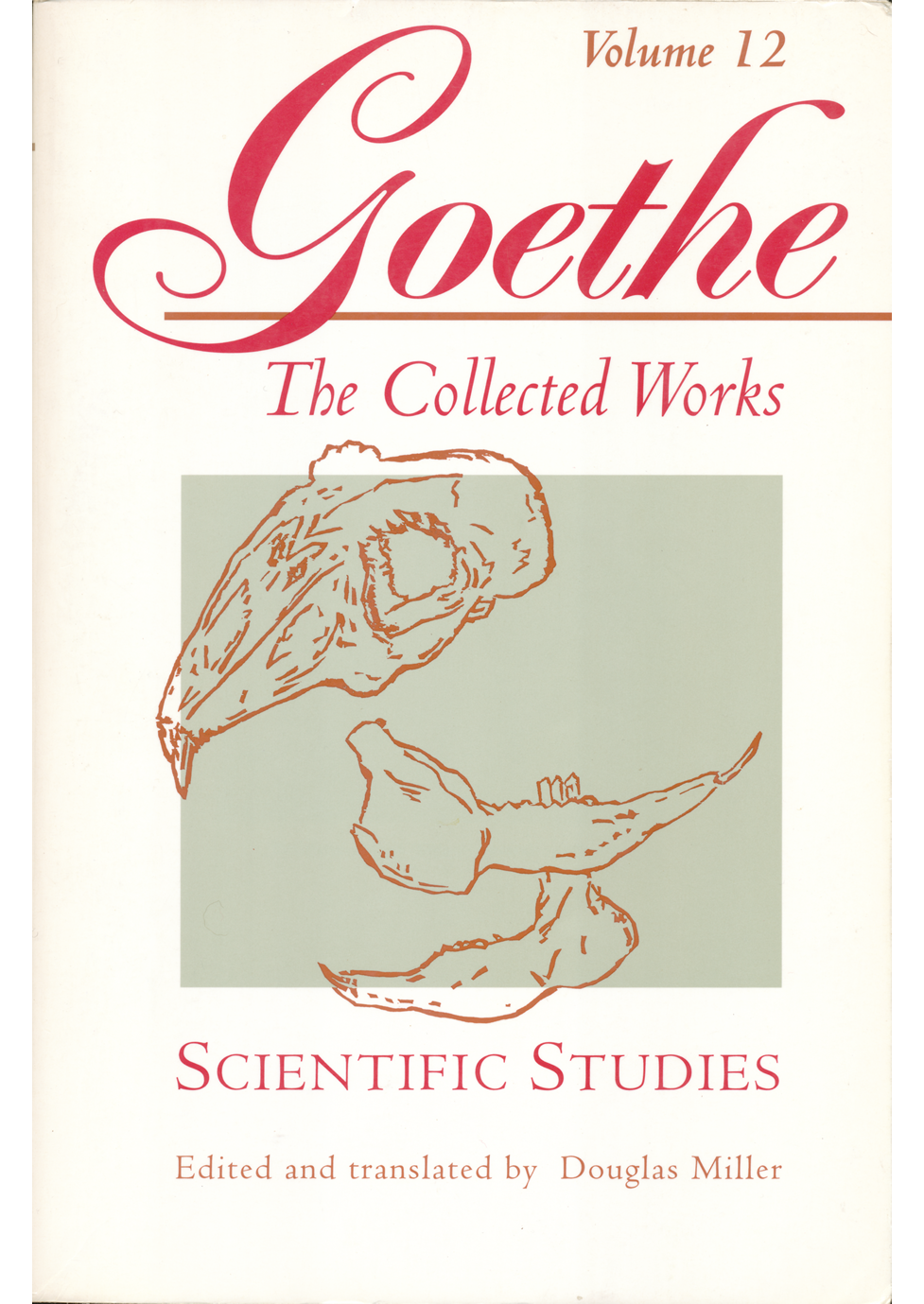
Scientific Studies
Volume 12 of Goethe's The Collected Works
By Johann Wolfgang von Goethe
Translated and Edited by Douglas Miller
1988 | Princeton University Press Princeton, N.J. | 344 pages
Reading Goethe can be a challenge, but if the reader enjoys a blend of scientific method, nineteenth century philosophy and physics, a splash of zoology, a bit more of botany, and a smattering of insightful narratives about the relationship of humankind to nature … then you'll find Scientific Studies to be an enjoyable and enlightening read.
We begin with his 1792 essay, “The Experiment as Mediator between Object and Subject,” Goethe (1749-1832) writes:
It is not hard for any well-organized person, moderate by nature or force of circumstance, to be clever, for life corrects us at every step. But if the observer is called upon to apply this keen power of judgment to exploring the hidden relationships in nature, if he has to find his own way in a world where he is seemingly alone, if he is to avoid hasty conclusions and keep a steady eye upon the goal by noting every helpful or harmful circumstance along the way, if he must be his own sharpest critic where no one else can test his work with ease, if he must question himself continually even when most enthusiastic — it is easy to see how harsh these demands are and how little hope there is of seeing them fully satisfied in ourselves or others. Yet these difficulties, this hypothetical impossibility must not deter us from doing what we can.
Chain of Creation without End
The sentence above, the one beginning with But if the observer, contains 115 words, typical of the writing style of one of Europe's great thinkers. Here in the library tonight, we read the passage, and it registers as smooth and ‘silky.’ We rather enjoy long and convoluted sentences done right because they demand our full attention — to find the kernel and then follow its many intricate branches makes for a mental exercise of the highest order. Why else would we care to read the old masters than for the challenges they present and the forgotten truths they uncoil?
Elsewhere in Volume 12, Dr. Goethe records his observations, theories, and detailed studies of plants; explores comparative anatomy in the animal world; and delivers an extensive treatise on the “Theory of Color.”
Published in 1891, “Morphology” addressed issues of unitary existance, living entities, and the concept of plurality:
No living thing is unitary in nature; every such thing is a plurality. Even the organism which appears to us as individual exists as a collection of independent living entities. Although alike in idea and predisposition, these entities, as they materialize, grow to become alike or similar, unalike or dissimilar. In part these entities are joined from the outset, in part they find their way together to form a union. They diverge and then seek each other again: everywhere and in every way they thus work to produce a chain of creation without end.

To Browse, Study, and Observe
Scientific Studies entered our library in 2007 during a sojourn in Santa Fe, and for over a decade now I've opened the book now 'n then to browse and sometimes study the text with my underline pencil in hand. Scientific Studies does not demand reading the text straight through from beginning to end. Instead, the editor weaves fragments of Dr. Goethe's writing into longer narratives to form a coherent survey of the author's extensive scientific writings. You can jump right in wherever you choose.
Dr. Goethe's writings about “The Metamorphosis of Plants,” written over one-hundred years ago, can stand on its own as a primer and refresher about the structure and life cycle of individual specimens in the plant world. Even today, an innovative teacher working with honors students could incorporate Dr. Goethe's botany writings into the course curriculum.
On another canvas, the “Theory of Color” covers 143 pages of fascinating data and observations, providing the reader with a vivid picture of the physical sciences of Dr. Goethe's era.
As for we humans, who amongst us does not want to be part of a chain of creation without end? Beautiful thought, Dr. Goethe. Let us work together in collective harmony for the greater good.
Descent of Man
By Charles Darwin
1871
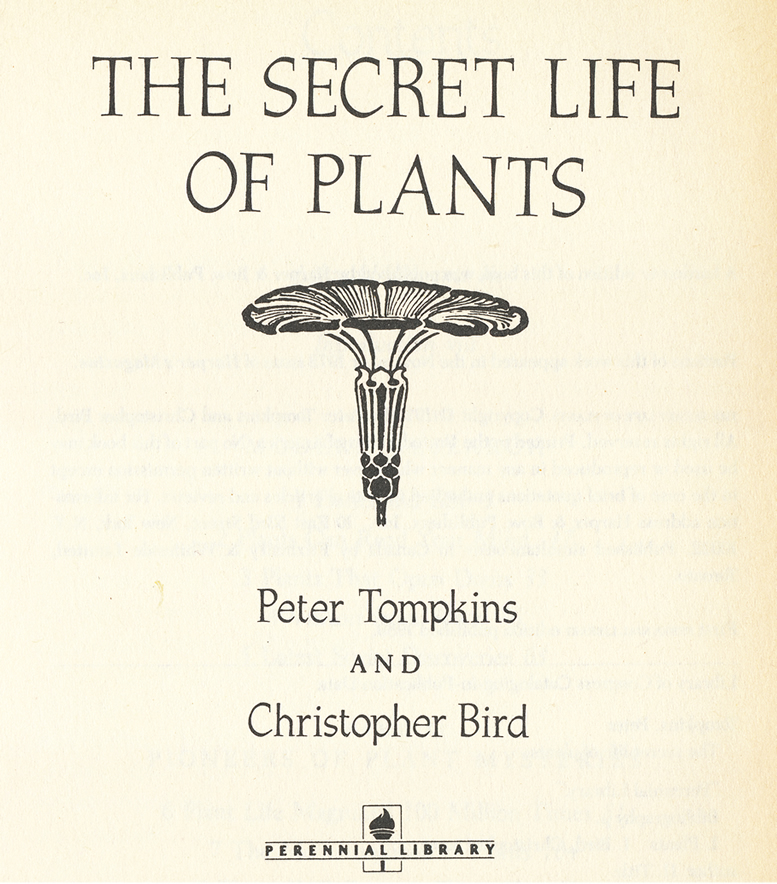
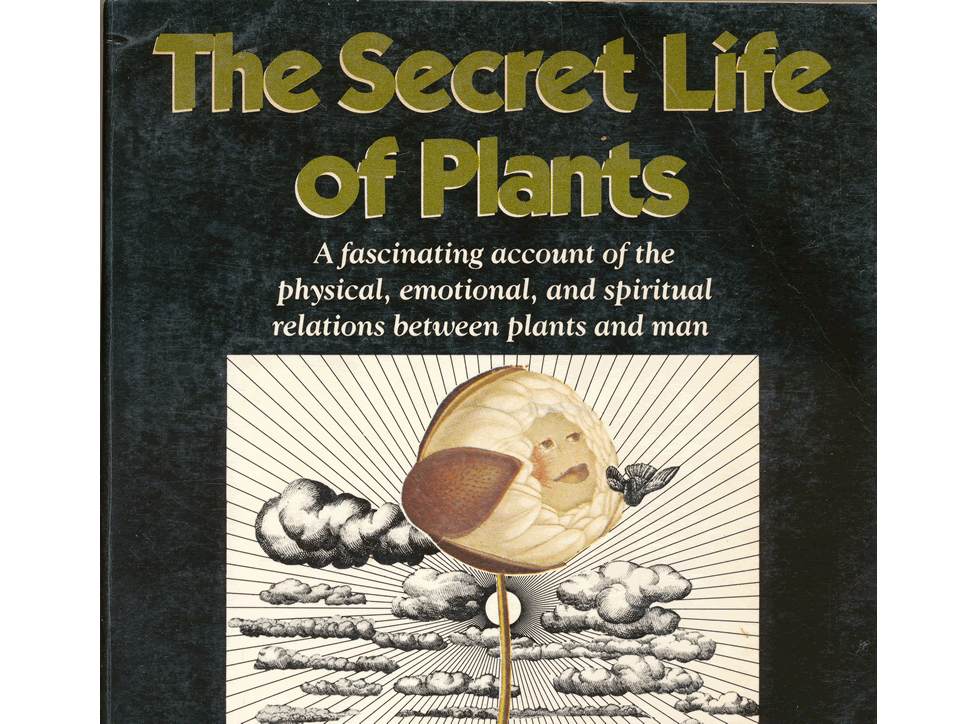
The Secret Life of Plants
By Peter Tompkins and Christopher Bird
1973 | Harper & Row New York | 402 pages
We first encountered this book as youthful students on a university campus where hippies roamed free, where professors and students smoked cigarettes during class and big fat joints at home, and where New Age harmonics infused the subculture with fits of public activism … countered and amplified by retreat into private passions. People were angry, too, and the culture was fractured but alive in the slow, waning wake of a failed war in Vietnam.
It was a hippie book through and through, this Secret Life, and the hippies we knew didn't give a hoot about the dominant culture's aversion to their lifestyle or reading habits. Conservative critics, including many influential botanists, branded it “pseudoscience.” Fans called it revolutionary. And some who read Secret Life simply decided to take up gardening.
A quick scan of the chapter titles reveals in an instant the counterculture bonafides embedded in The Secret Life of Plants. Despite the attacks on Mr. Tompkins and Mr. Bird, their work sold several million copies and stood tall on The New York Times bestseller list.
1. Plants and ESP
2. Plants Can Read Your Mind
3. Plants that Open Doors
4. Visitors from Space
5. Latest Soviet Discoveries
6. Plant Life Magnified 100 Million Times
7. The Metamorphosis of Plants
8. Plants Will Grow to Please You
9. Wizard of Tuskegee
10. The Harmonic Life of Plants
11. Plants and Electromagnetism
12. Force Fields, Humans and Plants
13. The Mystery of Plant and Human Auras
14. Soil: The Staff of Life
15. Chemicals, Plants, and Man
16. Live Plants or Dead Planets
17. Alchemists in the Garden
18. Dowsing Plants for Health
19. Radionic Pesticides
20. Mind Over Matter
21. Findhorn and the Garden of Eden
We thoroughly enjoy books like The Secret Life of Plants, whose practitioners thrive on the fringes of mainstream society, from whence they offer alternative solutions to age-old problems — best taken with the proverbial grain of salt. Tompkins and Bird employ radically different ways to extract truths from perceived knowledge. They challenge recognized experts and professionals to see the world differently. And their narrative, peopled by eccentrics and original thinkers, is downright amusing when engaged in the non-judgmental spirit of the explorer.
“Short of Aphrodite, there is nothing lovelier on this planet than a flower, nor more essential than a plant,” Tompkins and Bird write. “The true matrix of human life is the greensward covering mother earth. Without green plants we would neither breathe nor eat.”
Deep Green Resistance
Strategy to Save the Planet
By Aric McBay and Lierre Keith
2011
The Mountains of California
By John Muir
1894 and 2001 | The Modern Library | 284 pages
Renowned naturalist Bill McKibben tells us in the Introduction that Mr. Muir invented an entirely new language, “a language of ecstasy and exuberance” to describe his relationship with nature in the high mountains of the West. In The Mountains of California, Mr. Muir “invents, by sheer force of his love, an entirely new vocabulary and grammar of the wild, a language that powered the conversation, and later the environmental, movement through the first century of their respective existences.”
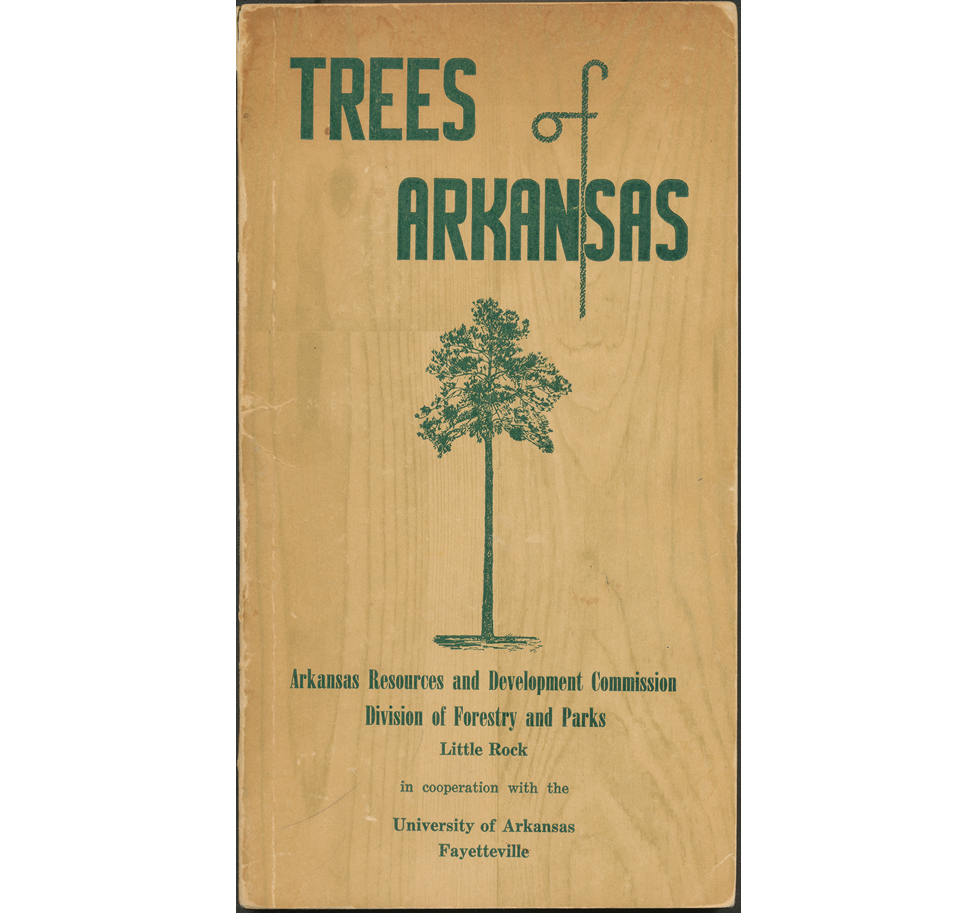
Trees of Arkansas
First Edition
By Dwight M. Moore
1950 | University of Arkansas Fayetteville | 119 pages
Gotta say I love this book. Why a First Edition, signed by Mary Jewell Moore ended up in a used bookstore mystifies me, but then we all have our ways with personal possessions. We obtained our copy as a birthday present way back in the seventies and have consulted it ever since.
The information is presented through the eye of a minimalist: one page of clean, austere scientific text with one piece of artwork for each species. Ninety-eight trees and bushes are featured by family name: Pine, Willow, Walnut, Birch, Beech, Elm, Mulberry, Magnolia, Custard Apple, Laurel, Witch Hazel, Sycamore, Rose, Pea, Holly, Rue, Mahogany, Maple, Buckeye, Buckthorn, Linden, Ginseng, Dogwood, Tupelo, Ebony, Sapodilla, Olive, Bignonia, and Honeysuckle. Seventeen oaks and eight hickories led the list with six ash and four pine not so close behind.
Professor Moore's 1950 First Edition revised two earlier works. Common Forest Trees of Arkansas was published in 1924 through a joint effort of the University of Arkansas College of Agriculture and the U.S. Forest Service, setting the stage for a 1937 revision by Lewis M. Turner of the UofA. The 1937 edition gave the collaborative work its present name, Trees of Arkansas.
Today's version of Trees of Arkansas became the Eighth Revised Edition under the editorship of Dr. Eric Sundell when it rolled off the presses in 2014, featuring artist's sketches and color photos of the trees, tree identification guides, a list of Arkansas champion trees, and biographies of Professor Moore (1891-1985) and Eighth Edition editor Dr. Eric Sundell. Published by the Arkansas Forestry Commission in Little Rock in 2014, the tree guide is no longer minimalist, reflecting through design and style the cultural norms of our time.
Trees of Arkansas
Eighth Revised Edition
By Dwight Munson Moore and Eric Sundell
2014 | Arkansas Forestry Commission Little Rock | 168 pages
The Gulf
The Making of
an American Sea
By Jack E. Davis
2017 | Liveright Publishing New York | 592 pages
Jack Davis won the 2018 Pulitzer Prize for History for The Gulf — an honor well deserved. In his Prologue, the author recalls the Gulf Coast paintings created by Winslow Homer in 1904. These paintings convey “an intimate and vital connection linking humankind, nature, and history. I call this triad Homer's truth, and it lies at the heart of this book,” Professor Davis writes.
Getting in the way of this intimate and vital connection are the champions of industry and commerce, whose do-what-I-may attitude has brought the ecological strength of the region to its bloody knees.
“Birds of the Gulf once fell from the sky in bewildering numbers to support commercial and recreational endeavors,” Mr. Davis writes. “The region became a favorite sandbox of the earth-sculpting US Army Corps of Engineers, and a sump for the nation's agricultural and industrial waste. Its magnificent estuaries have been so depleted that only a fraction of the schools of fish that swam waters in Homer's day remain — and waters not nearly as clean and clear.” Mr. Davis bemoans the fact that we humans “still insist on harnessing nature to our will, as we perpetuate waste and blight in the natural world.”
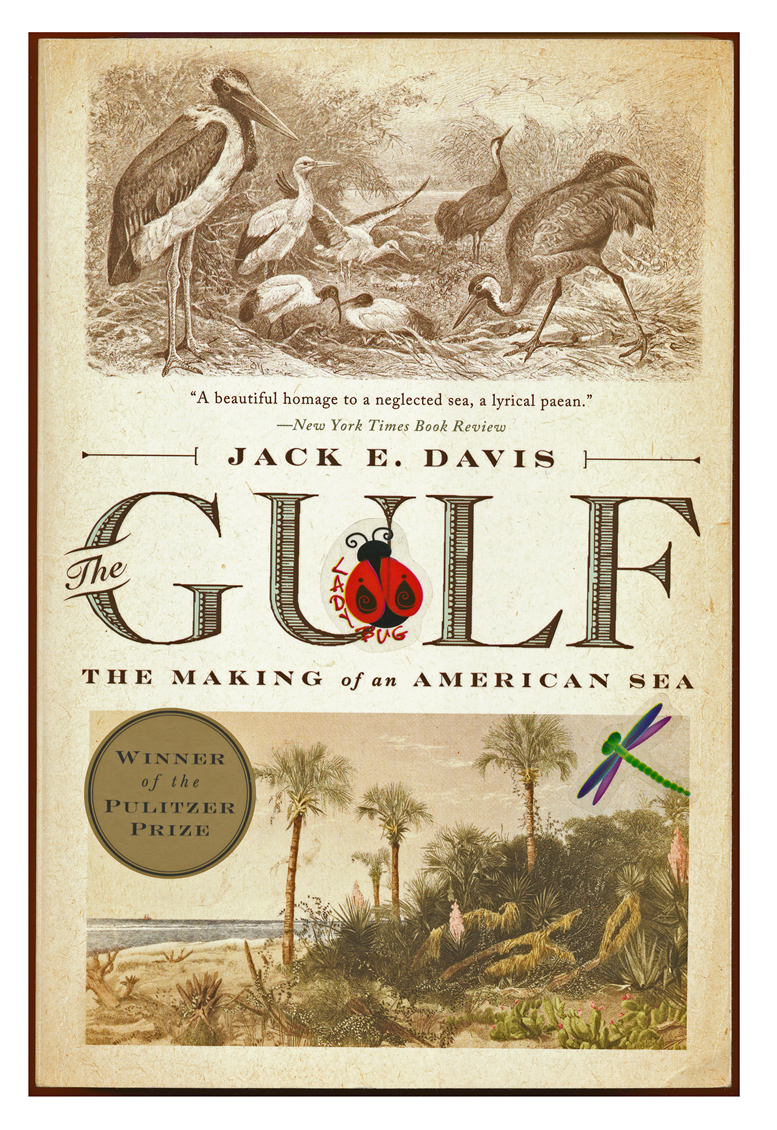
All too often nowadays, we read and hear tales of environmental catastrophe and doom from our writers, celebrities, and TV news stars. We are presented with a post-modern narrative of a dystopian future and present-day helplessness as we gaze into the cold face of perceived truths about climate change and existential environmental damage. True enough, but what's wrong needs to be balanced with what can be right. The professor in this passage alludes to what can be right:
The Gulf and its history — its biography, Braudel might say — should be celebrated, not mourned. The American Sea has long been and will continue to be a gift to humankind. It brings beauty into our lives and invigorates the human spirit. It gives us food, moderates our climate, removes carbon dioxide from the atmosphere, and puts oxygen we breathe into the same. There is a kind of nourishing energy out in the Gulf that doesn't pump from a well. It is the wholeness of living things, the dynamic energy moving from sun to plant to animal, a ceaseless flow that in the long scheme of things is far more important than mineral deposits to our future existence.
So, we have an implied solution based on dreams and hope, a solution linked to the wholeness of living things. Maybe the acts of remediation following the Deepwater Horizon disaster will turn the tide away from oil — but to where? Can we find a realistic alternative to fossil fuel? Can we find a new way to stabilize the shoals and banks of the Mississippi River without destroying the estuaries and marshes?
“Nature can do only so much for humankind,” Mr. Davis writes. “The marshes' filtering and sequestering capacities have limits. Human behavior sometimes knows none.”
What then? Mr. Davis tells us the Gulf is an ongoing story. “Our decisions and behavior, indeed, do matter with regard to existing life on Earth, including our own. We will live longer on this planet if we take command of our excesses, align ourselves with the natural balances that predate us and the biosphere that supports us, and understand that nature is most generous when we respect its sovereignty. We cannot destroy or control the sea, although we can diminish its gifts, and when we do, we turn away from our providence and diminish ourselves.”
Outdoorsman's Handbook
By Clyde Ormond
1990
The WPA Guide
to 1930s Arkansas
By Workers of the Writers' Program USA
1941
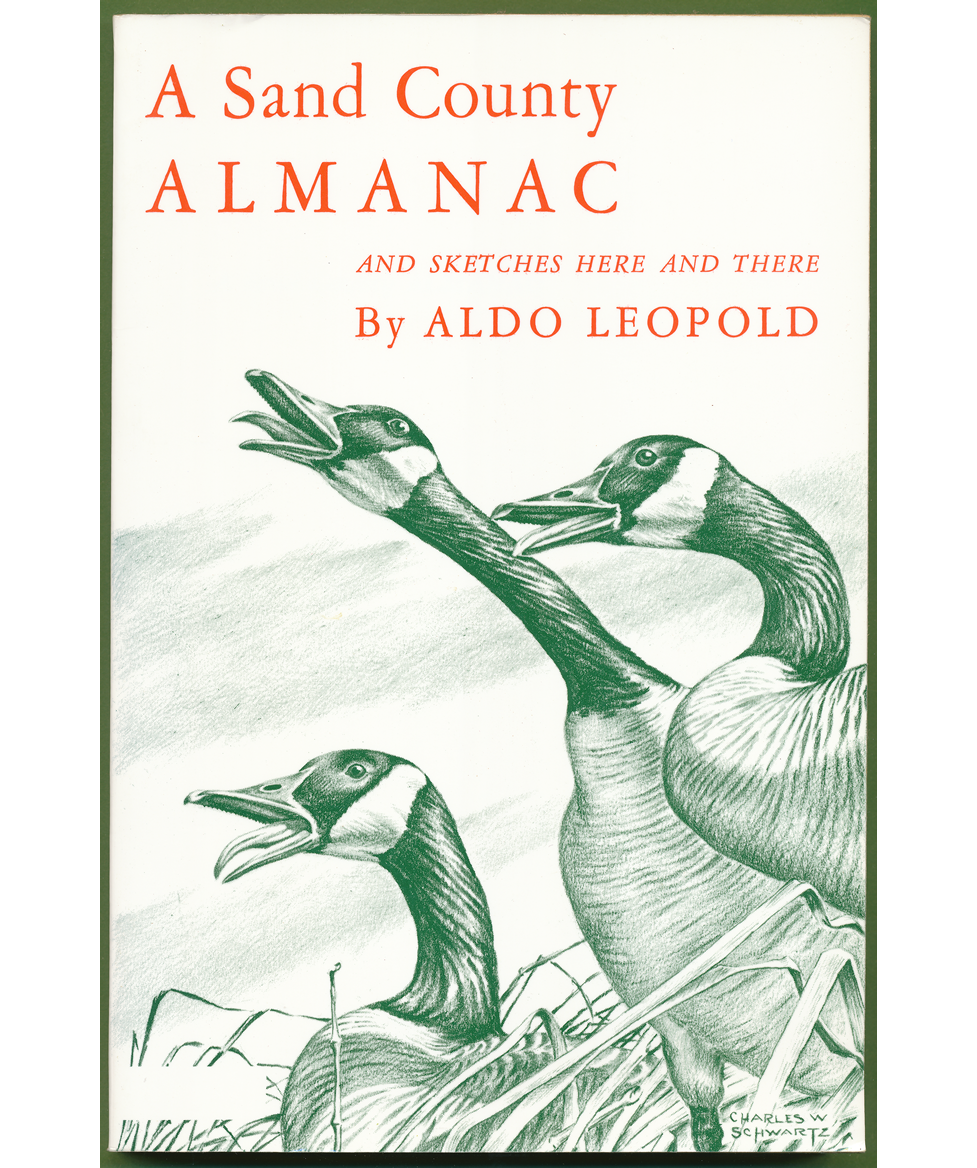
A Sand County Almanac
And Sketches Here and There
By Aldo Leopold
Illustrated by Charles W. Schwartz
1949 1968 | Oxford Unversity Press New York | 226 pages
Oklahoma Trees and Wildflowers
An Intro to Familiar Species
A Pocket Naturalist Phamplet
2004
The Simon and Schuster
Pocket Guide to Trees
By Keith Rushforth
1981
Ouachita Trail Guide #4
By Tim Ernst
1992 2006
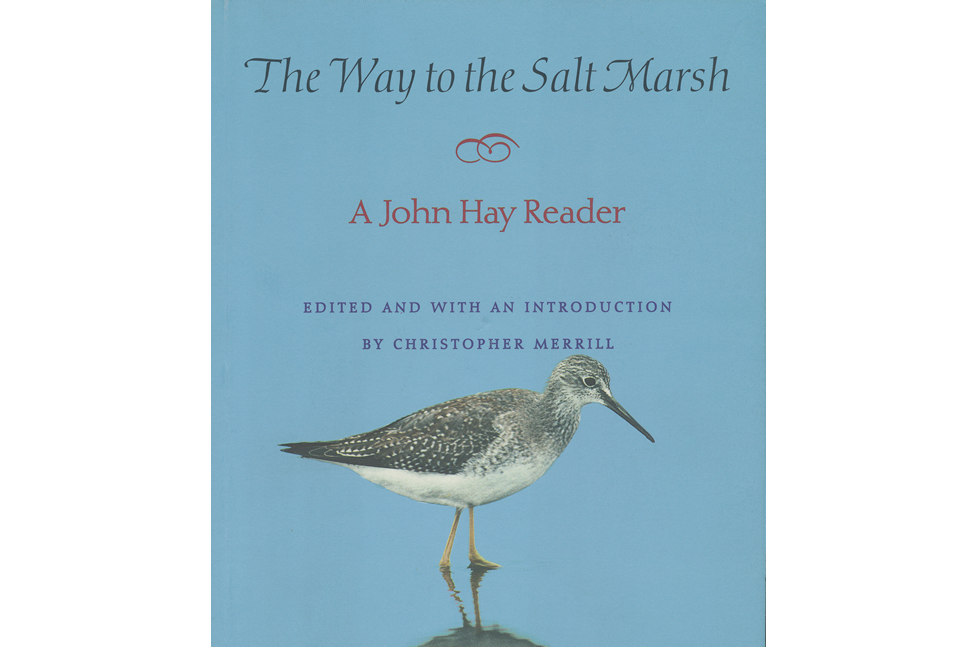
The Way to the Salt Marsh
A John Hay Reader
By John Hay
Edited by Christopher Merrill
1998 | University Press of New England | 256 pages
Roadside Trees
and Shrubs of Oklahoma
By Doyle McCoy
1981
Audubon Field Guide
to the Southwestern States
By Peter Alden etal.
1999

Shapes — Nature's Patterns
A Tapestry in Three Parts
By Philip Ball
2011 | Oxford University Press | 312 pages
Sometimes a book's Table of Contents offers a telling glimpse into what is to come. In the case of Shapes, the table is a good indicator of some interesting concepts … just around the corner from the next page. Philip Ball's Shapes is a deep study of nature's patterns and how they affect life and survival on Planet Earth. Have a look:
1. The Shapes of Things: Pattern and Form
2. Lessons of the Beehive: Building with Bubbles
3. Making Waves: Stripes in a Test Tube
4. Written on the Body: Hiding, Warning, and Mimicking
5. Rhythms of the Wild: Crystal Communities
6. How Does Your Garden Grow?: : The Mathematics of a Daisy
7. Unfolding the Embryo: The Formation of Body Plans
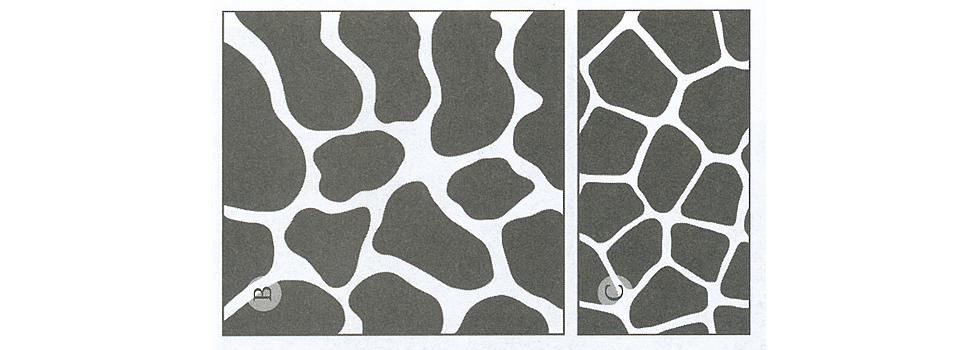
This is challenging stuff but worth the effort when you choose to dig in and study. You'll likely come across examples of beauty, symmetry, and elegance in nature's natural patterns. But once broken, the patterns dissolve into chaos, interjecting issues of extinction and species depletion into the natural order. The questions raised in Shapes are essential questions about humankind's role in shaping the environment, often to the detriment of species and often to the wonder of the artist.
Research into natural spatial patterning and dynamic spiral waves — arcane terms grafted onto discourse by hard science — reveals the presence of stable states among predator and prey in the wild, Professor Ball writes, delivering a key lesson to environmentalists who seek to manage wildlife habitats and ecosystems, and that is: space matters.
“Some ecosystems need space to spread, so that they can organize themselves into patchy communities that coexist where uniform ones cannot,” Professor Ball writes. “The more we carve up the environment into isolated parcels by building roads and other barriers to the dispersal of species, the more we destroy the capacity of populations and ecosystems to use spatial patterning as a means of survival.… Stability and survival depend in a simple way on habitat fragmentation.”
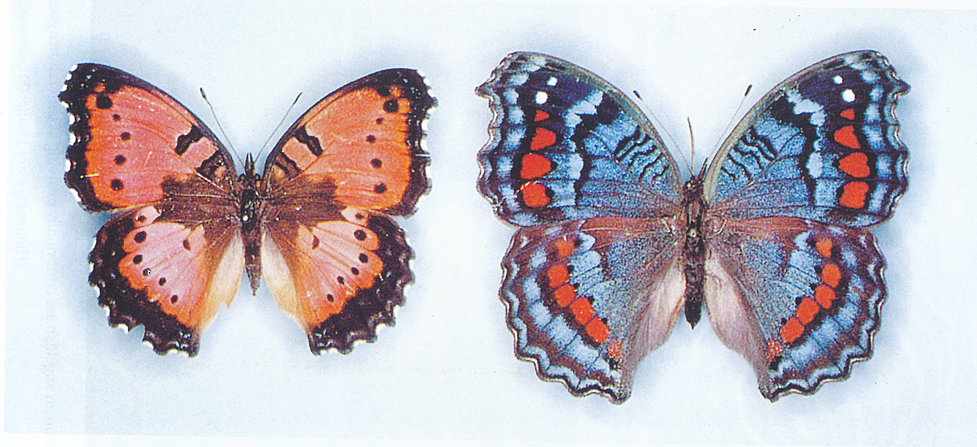
Imagine a spiral path that unwinds around and around, opening ever wider into a continuous, unbroken space. Now imagine wildlife following that path in the search for food or mates. What happens when a commercial entity erects a barrier across the path, sometimes through construction projects, other times through infrastructure projects? The path is suddenly blocked. “Once a community cannot spread in a connected domain across an entire territory — that is, once an individual organism cannot pass from one edge to another without stepping outside of a populated domain — the average patch size shrinks rapidly and the species struggles to survive.”
There we see one example of Professor Ball's deep study into the relationship between patterns and forms, species and humankind. Let it be illustrative of the diversity and beauty of nature and its will to survive. Space is one third and the first third of Oxford University Press' Nature's Patterns trilogy. The other two are Flow and Branches — each written by Dr. Ball. A fourth title, Patterns in Nature: Why the Natural World Looks the Way It Does, was published in March 2020, this time by the University of Chicago Press. We wonder under what circumstances Dr. Ball changed publishers.
Man's Place in Nature
By Thomas H. Huxley
1959
Man and the Natural World
A History of the Modern Sensibility
By Keith Thomas
1983 | Pantheon Books New York | 427 pages
Professor Thomas' aim, as he tells us in the Introduction, is to “reunite the studies of history and literature” toward the purpose of illuminating humankind's thoughts about plants and animals, our relationships to other species, and our concern for the natural environment.
Sensitive and compassionate, Mr. Thomas blends scientific observation and imaginative literature into a factual narrative anchored in history. He focuses on the Early Modern Period in the British Isles — that is, from 1500 to 1800, give or take a few decades in either direction. Here's an overview of the topics addressed by Professor Thomas:
Human ascendancy and the subjugation of the natural world
The effort to classify all the Earth's creatures
Men and animals as domestic companions with animal souls
Cruelty to the natural world and new sensibilities
Trees and flowers and the worship of trees
The human dilemma: conquest or conservation?
Do men and beasts inhabit the same moral universe? Does the systematic investigation of nature assume that plants and animals should be studied for their own sake, independent of their utility or meaning for man? What are those critters soaring through the night air: a pack of flying hounds or a flock of while geese? Cultivation or wilderness? Is the love of woodlands a passion implanted in our psyche? These are questions we face in thinking about the human dilemma and the natural world.
Let's close with this passage from a very good book:
For it was between 1500 and 1800 that there occurred a whole cluster of changes in the way in which men and women, at all social levels, perceived and classified the natural world around them. In the process some long-established dogmas about man's place in nature were discarded. New sensibilities arose towards animals, plants, and landscape. The relationship of man to other species was redefined; and his right to exploit those species for his own advantage was sharply challenged. It was these centuries which generated both an intense interest in the natural world and those doubts and anxieties about man's relationship to it which we have inherited in magnified form.
The Edge of the Sea
By Rachel Carson
Illustrations by Bob Hines
1955 and 1998 | Houghton Mifflin Boston | 276 pages
One of three masterworks Ms. Carson (1907-1964) wrote about marine life and coastal habitats, The Edge of the Sea can also double as a field guide to plants and animals who live by and in the sea. Other titles in Ms. Carson's “Sea Trilogy” are Under the Sea Wind (1941) and The Sea Around Us (1951).
The edge of the sea is “a strange and beautiful place,” Ms. Carson writes at the beginning of a book-length string of poetic expression about marine life, rocky shores, the rim of sand where the sea meets the shore, the coral coast, and the enduring sea of tides and fogs, schools of fish and flocks of birds, waves of living creatures — a place where “the meaning haunts and ever alludes us, and in its very pursuit we approach the ultimate mystery of Life itself.”
Forests
A Very Short Introduction
By Jaboury Ghazoul
2015 | Oxford University Press | 150 pages
Wildflowers of Arkansas
By Carl G. Hunter
1984 and 2001
The Audubon
Birds Coloring Book
By Arcturus
2016
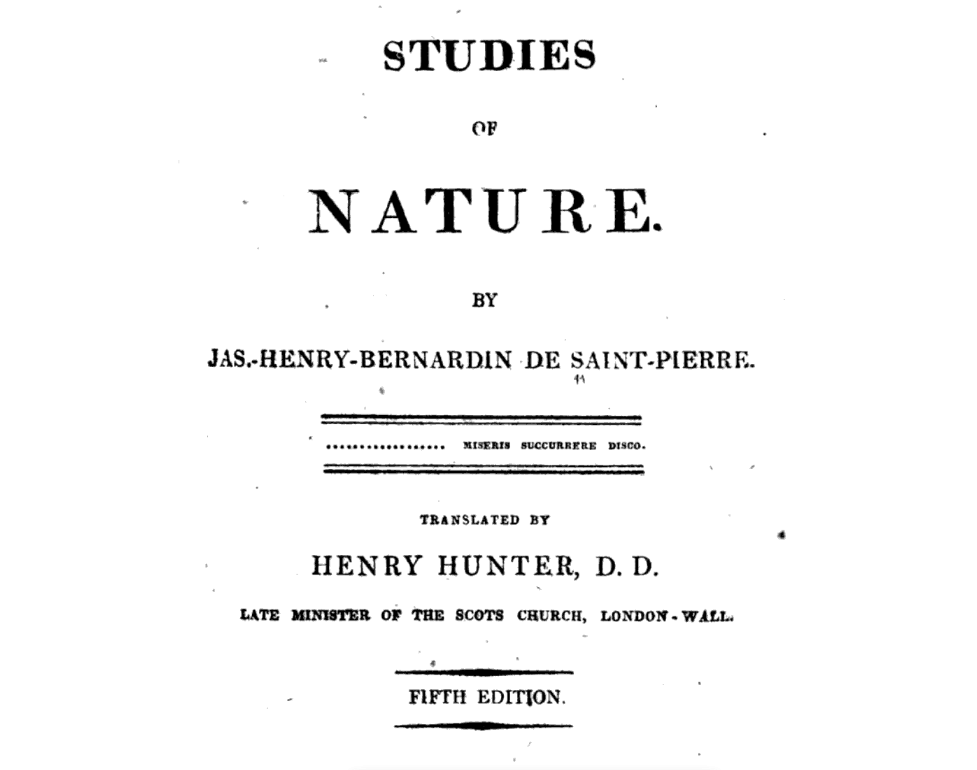
Studies of Nature
By Jacques Henri Bernardin de Saint-Pierre
Translated from the French by Henry Hunter
1784 etc.
Thanks to the wonderland that is Google Books, we have digital ownership (in a convoluted form) of all four volumes of Saint-Pierre's master work, shared by the New York Public Library (Volume II 1809 and Volume III 1801), the Berkeley Library (Volumes III 1809 and IV 1809), Princeton Library (Volumes I 1808 and II 1808), Library of the University of Virginia (one volume containing the entire work 1835 and Volume I 1809), and Harvard College Library (one volume containing the entire work 1836). Going that far back in time renders a fragmented scenario, but at the end of the search we are grateful to have the totality of Saint-Pierre's studies in a readily available format. BTW, the first printing rolled off the press in 1784. And St. Pierre (1737-1814) is better known today — if by a mere handful of readers — for the novel Paul et Virginie
Translator Henry Hunter writes in the “Advertisement,” aka Preface, of a 1836 edition held by the University of California:
I have read few performances with more complete satisfaction, and with greater improvement, than the Studies of Nature: in no one have I found the useful and the agreeable more happily blended. What work of science displays a more sublime theology, inculcates a purer mortality, or breathes a more ardent and more expansive philanthropy? St. Pierre has enabled me to contemplate the Universe with other eyes.… Unfettered by system, unawed by authority, he looks immediately into Nature: he observes, he thinks, he reasons for himself; and teaches his Reader thus to observe, think, and reason.
Some of Saint-Pierre's topics provide delightful insight into the world of the naturalist in late eighteenth century Europe. Study XI, for example, tells us about “Elementary Harmonies of Plants,” including how they enter into a harmonious relationship with the Sun, their flowers, the Water, and the Air — leading us, eventually, to a discussion of animal and human harmonies.
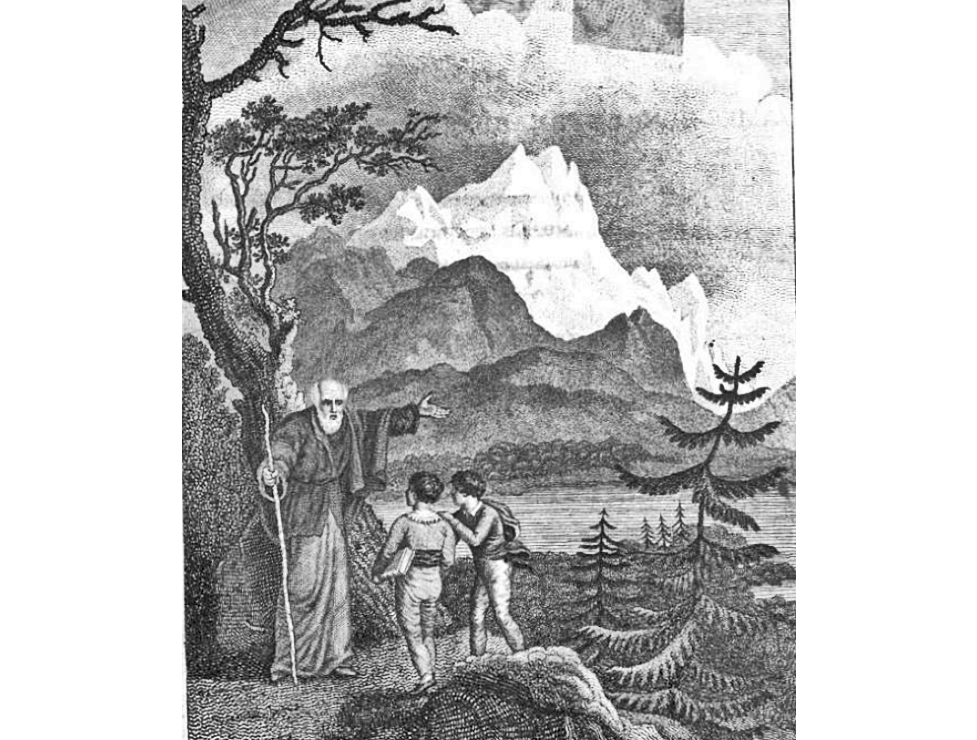
The frontispiece of most editions displays a black and white drawing intended to set the tone and tenor of the work to come, though the drawings vary from publisher to publisher. Above we see the wise old man, whose name is Experience, “directing youth to the contemplation of the wonders of Nature.” This volume has survived the intricacies of time for 212 years.
A dedicated observer of the natural realm, Saint-Pierre begins his narrative with a little tale about a strawberry plant in his window. He observed 37 species of insects who “visited my strawberry plant” over the course of three weeks. “However minute these objects may be, they surely merited my attention, as Nature deemed them not unworthy of hers. Could I refuse them a place in my general history, when she had given them one in the system of the Universe? … Plants are the habitation of insects; and it is impossible to give the history of a city, without saying something of its inhabitants.” Saint-Pierre employed the story of the strawberry and its visitors as the springboard to an extended and artful mediation of the insect world.
A Case for Diversity
Here at the cottage, we wrestle with the concept of “native” or “invasive” as it pertains to the Kingdom of Plants. It's among the hot topics of the day. Harvard botanist Asa Gray, as quoted elsewhere on this webpage, wrote about the issue of plant diversity, urging his students to find a balance between the “exotic” and the “native.” This proves, as always, there is nothing new under our Sun. The exotic/native conundrum was on Saint-Pierre's mind two-and-a-half centuries ago.
We rue hearing about folks we otherwise consider level-headed descending into pits of contentiousness when the question arises, “Is it native?” These well-meaning citizens have been known to form posses to trek into the wilds and “remove” what they call “non-natives,” slaying eastern red cedars by the thousands and digging up honeysuckle and privet with stolid determination.
To our dismay, many of these non-native warriors are women and men I hold in highest regard. I have watched them from afar offer a bounty for each slain Bradford pear tree in the city, or proclaim they'd like to take a chainsaw and cut down every Bradford pear in sight. Simply discussing the issues raised by this slash-and-burn policy can lead to an unpleasant conversation. As we've stated, questions about where a plant should sink its roots into Mother Earth are not new. Famed Harvard botanist Asa Gray raises the issue elsewhere on this webpage. Here's Saint-Pierre discussing the issue:
For my own part, if I might be permitted to hazard a conjecture, respecting the number of the distinct species of plants, spread over the Earth, such is my idea of the immensity of Nature, and of her subdivisions, that I am disposed to believe, there is not a square league of earth, but what presents some one plant peculiar to itself, or, at least, which thrives there better, and appears more beautiful, than in any other part of the world. This makes the number of the primordial species of vegetables amount to several millions.…
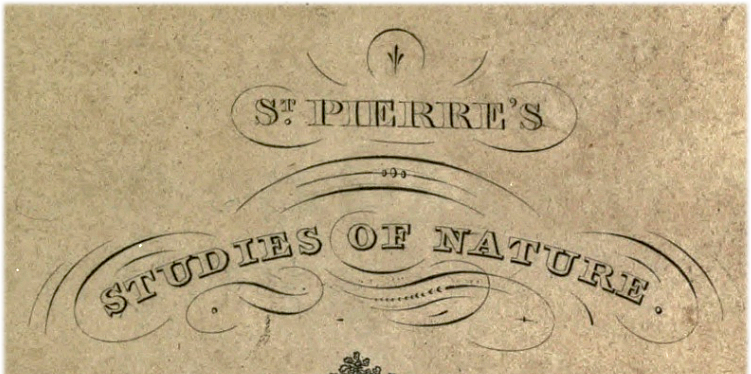
The Pathway of Seeds
We've probably dwelled too long on the issue of native/exotic, but a webpage can run right near infinity, so let's make room for one more tidbit, this one about propagation. Saint-Pierre writes:
Multitudes of berries and shell-fruits resow themselves; their seeds are enclosed in stony incrustations, not capable of being digested; they are swallowed by the birds, who carry them off, and plant them in the cornices of towers, in the clefts of rocks, on the trunks of trees, beyond rivers, nay beyond oceans. Thus a bird of the Moluccas repeopled with the nutmeg plant the desert islands of that archipelago, in defiance of all the efforts of the Dutch, who destroy those trees in every place where they cannot be subservient to their own commerce. On the relations between vegetables and animals, it is sufficient to observe, that most birds resow the vegetable which feeds them. Nay, we find quadrupeds which convey to a great distance the seeds of the grasses. Horses, who do not chew the cud, and whose dung is hurtful to the meadows, for an obvious reason, introduce into them a variety of foreign herbs, as the heath and short furze, the seeds of which they are unable to digest. They resow, besides, many others, which adhere to their hair, by the motion of their tail simply.
A Publishing Rock Star
Studies of Nature was a best-seller in its time. First published in December 1784, the English translation of the First Edition was sold-out by December 1785. Several versions were pirated by unscrupulous publishers and put on sale. “This success ought undoubtedly to have satisfied me,” Saint-Pierre wrote. “But I am no less so with the honourable professions of friendship which have been tendered to me, by persons of all conditions, and of both sexes, most of whom are unknown to me.” In other words, Saint-Pierre had become a publishing rock star.
Saint-Pierre's fame continues to this day. Studies of Nature rests in the public domain of the USA, having been “selected by scholars as being culturally important, and is part of the knowledge base of civilization as we know it,” reads the adverting text on Amazon. The 408-page hardcover, published by Wentworth Press, sells for $28.95 and the paperback for $18.95. Cyber-copies are available for free at Google Books and the HaithiTrust.
Oxford Dictionary
of Plant Sciences
Michael Allaby editor
1992 and 2006
The Hidden Life of Trees
What They Feel
and How They Communicate
By Peter Wohlleben
2015
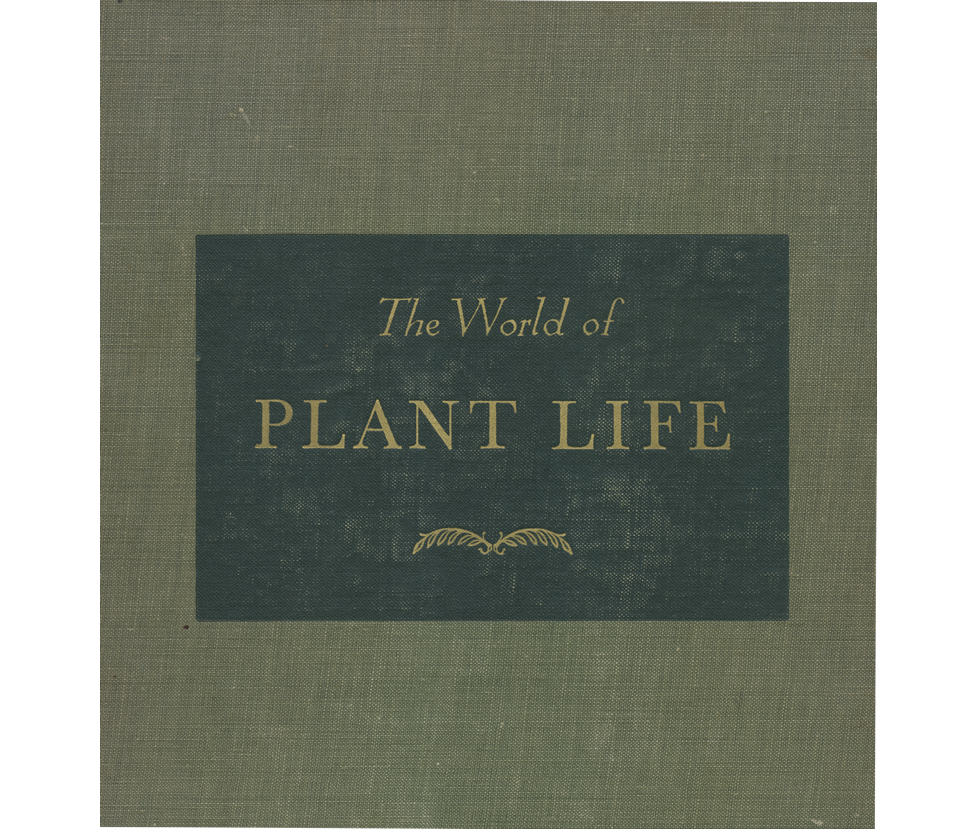
The World of Plant Life
By Clarence J. Hylander
1939 1944 1956 1968 | The Macmillan Company New York | 722 pages
A book “with legs,” Clarence J. Hylander's botany textbook earned four printings and two editions before it faded into the musty world of out-of-print back copies. Professor Hylander (1901-1964) firmly established himself as an authority in botany and biology, authoring several more textbooks under the Macmillan imprint: The Macmillan Wildflower Book (1954), Sea and Shore (1950), Animals in Armor (1954), and Wildlife Communities from the Tundra to the Tropics in North America (1966), the last published postumously.
We own up to our fascination with out-of-print textbooks devoted to the sciences. For one, it is way interesting to compare and contrast evolving trends, just as it is fruitful to see how scientific facts and perceived truths of yesteryear compare with contemporary knowledge. For two, a science book well-wrought, no matter its age, provides excellent source material for the lifelong learner.
The World of Plant Life is lavishly illustrated with photographs and line drawings — befitting of a leading-edge botany book published in the waning years of the Great Depression. Professor Hylander wrote with skill and clarity, thus his continuing success as an author for the Macmillan publishing house.
The Companionship of Plants
“Most of us have a deep-seated liking for the companionship of plants,” Dr. Hylander wrote. “Their bright and cheery colors, their comforting shade, their varied fragrance, their suitability to our every mood, appeal to us. We like to have trees and flowers around us, in pots and window boxes, in our backyards and along our city streets, in our parks and botanical gardens.”
Yes, we do! Here at Crow’s Cottage, we are surrounded by and engulfed in plants: great old trees, young saplings, flowering bushes, annual and perennial flowers, grasses and clovers of myriad shape and size. Their combined presence swaddles us in multiple shades of green and splashes of yellow, orange, red, blue, and violet. It's a wonderful scene.
Dr. Hylander organized his 700-page textbook in five major sections: 1) The Thallus Spore Plants (Thallophyta); 2) The Leafy Spore Plants (Bryophyta and Pteridophyta); 3) The Naked-Seed Plants (Spermatophyta: Gymnosperms); 4) The Fruit-Seed Plants (Spermatophyta: Angiosperm Dicots); and 5) The Fruit-Seed Plants (Spermatophyta: Angiosperm Monocots). Compare that to a lately published book (2012), Plants: A Very Short Introduction by Timothy Walker, who follows the contemporary pattern of attaching catchy titles to chapters: 1) What is a plant?; 2) Living on dry land; 3) Making more plants; 4) Moving around; 5) Making sense of plant diversity; 6) What have plants ever done for us?; and 7) Looking after the plants that support us. Dr. Walker's science compares favorably to The World of Plant Life, but perspectives, new developments, and fresh ways of thinking are apparent when the two books are placed side-by-side during a mental exercise of compare/contrast.
Warfare Among Plants
A strong reliance on narrative differentiates Dr. Hylander's approach to botany from that seen in present-day textbooks. In short, the professor was a skilled and engaging writer who began most chapters with a full-throated essay. For example, he began Chapter V, Warfare Among Plants, by focusing on the “life and death struggle for survival” among members of the animal world, who kill each other in a primal “fight for food and self-preservation.”
“Such behavior seems entirely lacking in the plant world,” he continues. “Here, we feel, is a realm where there is enough food and space for everyone, where organisms do not have to live in constant danger from natural enemies, where every bit of life may reach its fullest expression without injuring other life. But unfortunately for the idealist, this is not so. Underneath its placid exterior, the plant world is as rife with contest between individuals and species for survival, as is the world of animals. Most of this struggle is invisible, all of it is silent; yet it is a grim warfare without truce, with life as the reward to the victor and death to the luckless loser.”
A passage from Dr. Hylander's obituary in The New York Times of October 11, 1964, includes interesting commentary about the professor's botany textbook. “The World of Plant Life, first published in 1939, was described by one reviewer as ‘valuable to advanced botanists and amateur nature students alike,’ but another found it too technical ‘for the interested amateur and garden club member,’ and too superficial ‘for the college student or moderately trained scientist.’” Here at the Cottage, we take sides with all curious amateurs, especially those who aren't intimidated by college-level studies.
Let's Identify a Plant
And, since we're here, we might as well dig a little deeper and compare just how the two professors define a “plant.” Dr. Hylander writes:
In spite of the seeming idiocy of taking time to answer such a question, let us inquire “what is a plant?”
The plant is stationary, possesses no nervous system with which to react to changes in its surroundings, has no intelligence, and (most characteristic of all) develops green organs known as leaves.
Dr. Walker writes:
Plants, like love, are easier to recognize than to define.… A plant is often defined simply as a green, immobile organism that is able to feed itself (autotrophic) using photosysthesis. This is a heuristic definition for plants that can be refined if some more characteristics are added.
Both authors expand their definitions, citing certain ambiguities, exceptions, and shortfalls inherent in the task of defining complex creatures. Dr. Walker expands his definition with five technical bullet points, while Dr. Hylander digs deeper by artfully comparing the traits of plants with those of the animal kingdom.
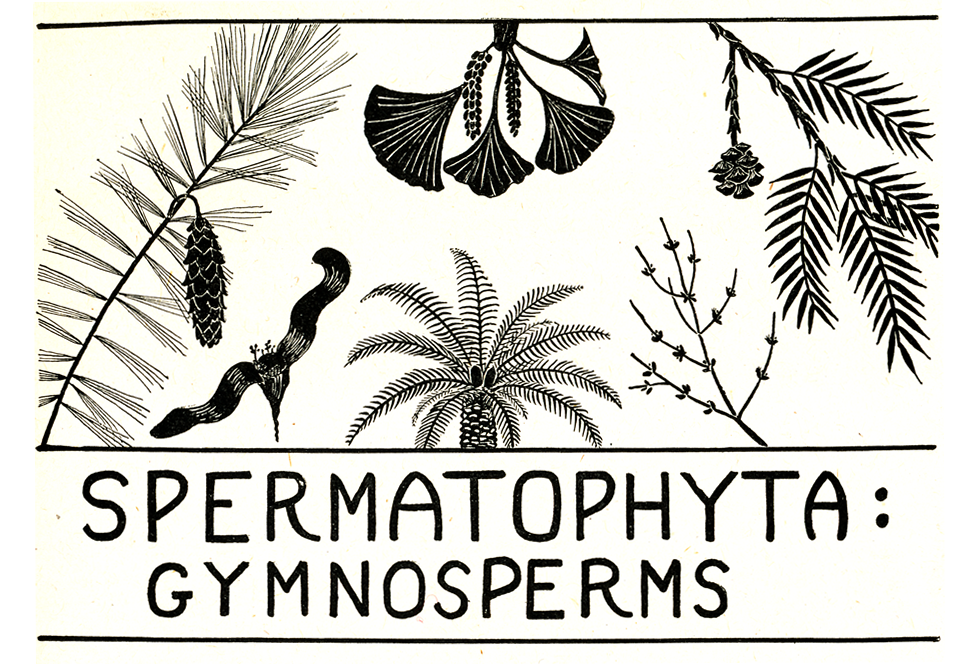
An Excursion in the Plant Kingdom
Let's close with a passage from the Introduction to The World of Plant Life, Dr. Hylander's way of setting the stage for the book that follows. After identifying the ten phylum around which the text will be presented, the Yale Ph.D. writes:
With such a preview of the whole plant kingdom in mind, realizing the unique activities which set plants apart from animals as well as the many basic processes which are common to both, and appreciating enough of the various habits and structures found among plants to understand the classification of plants, we can now set out upon an excursion into the realm of each of these phyla.
Let's begin! (Amazon on 30 May 2020 offered a hardcover of the 1944 printing for $19.96. A used copy of the 1939 first edition sold for $7.53)
Birds of North America
A Personal Selection
By Eliot Porter
1979
Marine Biology
A Very Short Introduction
By Philip V. Mladenov
2013 | Oxford University Press | 243 pages
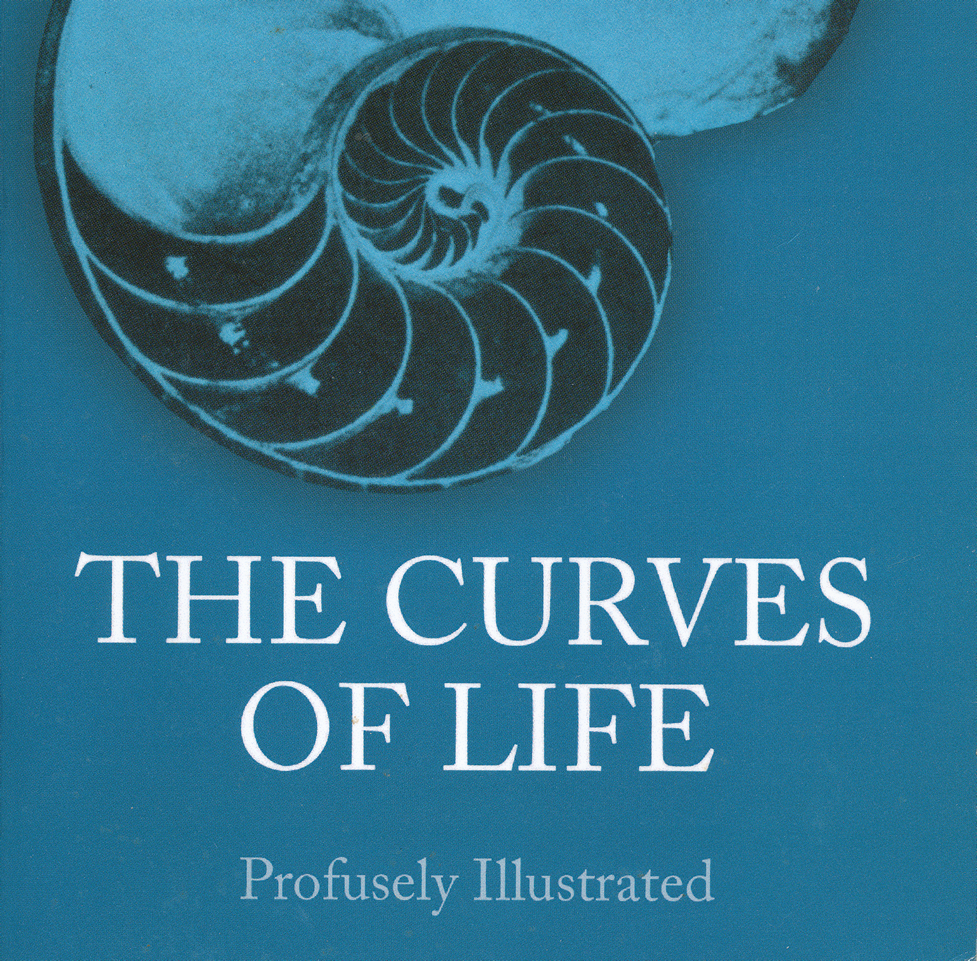
The Curves of Life
Being an Account of
Spiral Formations and Their Application
to Growth in Nature,
to Science and to Art
By Sir Theodore Andrea Cook
1914 and 1979 | Dover Publications | 479 pages
How to explain beauty? Can the spiral in all of its manifestations be a depository of truth and beauty? What does the tiny, microscopic foraminifera share with the vast mystery of the Andromeda Spiral Galaxy? As is our wont, we ask questions in our Socratic search for beauty here at Crow's Cottage. Sometimes the questions alone are sufficient.
Theodore Andrea Cook can gaze upon a seashell or a mature sunflower and discover “the marvelous constructive capacity of living matter.”
He can observe the leaf arrangement of a plant and determine its rightful place in the taxonomy of spiraling flora: 1) alternating, 2) decussate, 3) whorled, 4) quincuncial, or 5) multiple spirals.
He can apply Fibonacci numbers and other mathematical formulae to spiral leaf arrangement, or to the horns of animals, or to the spiral twist of feathers and wing — and by doing so impart meaning and purpose to how we embrace living things.
He was a serious man, Sir Cook, and his writing style is mature, sometimes dense, and always finely focused — and his digressions can be delightful. We should not speak rudely of an author who champions healthy growth as life's first principle. Not us.
Mathematics plays a significant role in Sir Cook's narrative, but not so much as to spoil the tale for math-challenged readers. More rewarding for the reader is the author's passionate quest for beauty, which permeates the entire book.
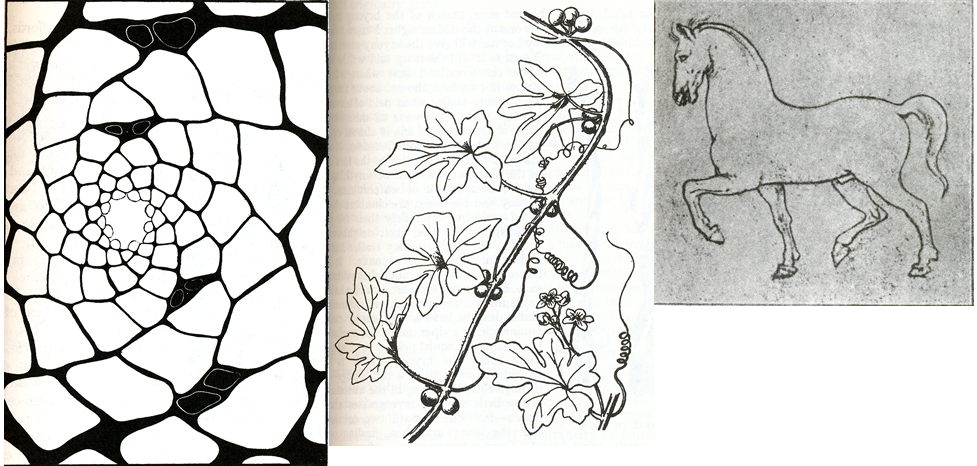
“Let us be careful in our use of words,” Sir Cook cautions in Chapter XIX. “‘Beauty’ is almost as humanly conventional and subjective as ‘spiral formation.’ Beauty, in fact, connotes humanity, and we call a natural object ‘beautiful’ because we see that its form expresses fitness, because we realize the perfect fulfillment of function in the lines of structure; as the orange and the pomegranate promise sweetness in every curve, or the horse shows strength and courage in every line and muscle, or the woman's graceful body offers the mate who shall be the mother. But we cannot say that any concrete thing or quality, called beauty, resides in any natural object, any more than we can say that shells or plants consciously assume the formation which we classify as spiral. We can only say that such objects rouse in us a pleasurable emotion stimulated by that sense of beauty which is the ancestral heritage of the human race.”
Does 2 + 2 Always Equal 4?
The Curves of Life demands from the reader more than a casual engagement. Original and rich with historical perspective, the narrative features passages loaded with mathematics — think Fibonacci series and pyllotaxis ratio — and densely orchestrated formulae and theory about phyllotaxis patterns, logarithmic spirals, orthogonal packing, quincuncial series.… You get the picture. You do.
Late in the narrative, Sir Cook calmly claims that “Nature abhors exact mathematics (if the phrase may be permitted me) and that no man who puts 2 and 2 together to make 4 will ever achieve art. But no finer instrument than the higher mathematics was ever conceived for enabling the human brain to grasp the unity of apparently complex phenomena.”
Bottom line: We highly recommend The Curves of Life to any reader who appreciates a psychic vortex where math, history, philosophy, biology, and natural science converge to dive deep into a unique story.
And if you enjoy imagery, then the Dover paperback is a real treat with 426 illustrations — and then there is quirky Chapter XIV, all about "Right and Left-handed Men.” Leonardo da Vinci, a right-handed man, appears often in the text to lend his insights and observations. The German master Dürer, visionary thinker Goethe, and Mr. Darwin also appear on the page, usually at just the right moment.
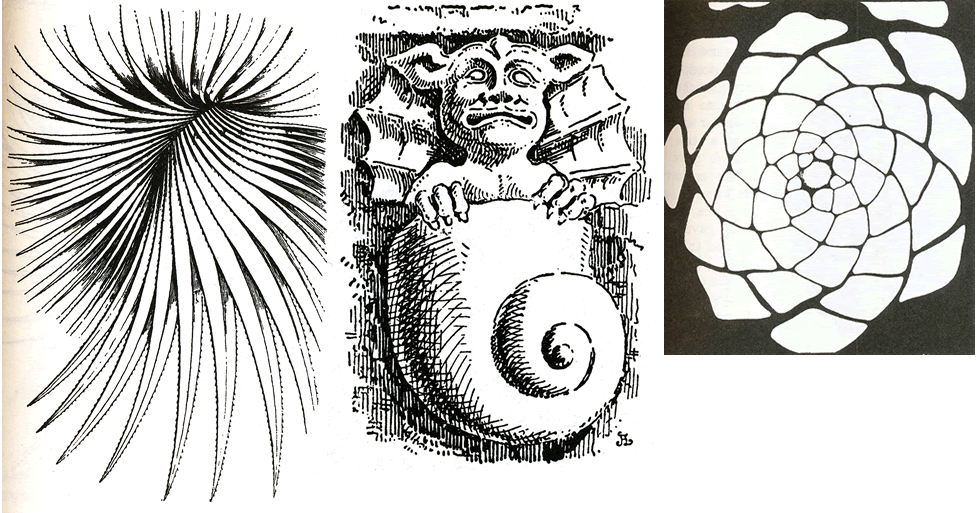
The Interpretation of Nature
and the Psyche
By C. G. Jung and W. Pauli
1955 | Pantheon Books New York | 247 pages
This volume contains two major essays: “Synchronicity: An Acausal Connecting Principle” by Dr. Jung and “The Influence of Archetypal Ideas on the Scientific Theories of Kepler” by Professor W. Pauli. Although these essays emphasize psychology and hard science, we include them in our Naturalist's Library because each deals with nature and natural law in ways sometimes obscure, sometimes theoretical, and always interesting.
“The experimental method of inquiry,” Dr. Jung writes, “imposes limiting conditions on nature, for its aim is to force her to give answers to questions devised by man. Every answer of nature is therefore more or less influenced by the kind of questions asked.” And from Professor Pauli: “The process of understanding nature as well as the happiness that man feels in understanding, that is, in the conscious realization of new knowledge, seems thus to be based on a correspondence, a ‘matching’ of inner images pre-existent in the human psyche with external objects and their behaviour.”
Flowers of the Countryside
By Philip and Marjorie Blamey
1980
Flowers and Herbs
of Early America
By Lawrence D. Griffith and Barbara Temple Lombardi
2008

Plants
A Guide to Plant Hobbies
By Herbert S. Zim
Illustrated by John W. Brainerd
1947 | Harcourt, Brace & World New York | 398 pages
Dr. Zim created Plants from the standpoint of an amateur, writing: “Perhaps it is fortunate that an amateur has attempted a book such as this. The professional botanist might have shied away from surveying the entire plant kingdom and suggesting activities for amateurs. If — to paraphrase the proverb — an amateur rushes in where professionals fear to tread, it is in full realization that the problems of collecting, studying, and experimenting with plants are indeed complex.”
Perhaps Dr. Zim (1909-1994) was stretching the truth about his amateur status — perhaps because he was a public school teacher for 30 years and classified himself as an amateur in deference to ‘professional’ botanists in his orbit of influence. But he did hold a Ph.D. from Columbia University. And he was a tireless and innovative writer and editor. He was also a visionary in the field of education, having founded the highly successful Golden Guides series in 1945. He served as its editor in chief for 25 years.
The Green Blanket of Earth
Imagine yourself flying high above the Earth at six miles up — and many years before humans experienced space flight. What do you see? Dr. Zim sees a planet “covered by a blanket of green .… We see the Earth's green blanket every day and take it so much for granted that, what is probably the most wonderful thing in the world, is generally ignored.” Fortunately, most anyone who arrives at this point of the narrative isn't inclined to ignore the blanket of green. You're here because, very likely, you share the same love of Mother Earth as did Mr. Zim when he completed Plants in August of 1947.
Good old books about flora and fauna fascinate me for several reasons. They represent a moment on the arrow of time that speaks to the prevalent thinking in the era of their creation. It's also enlightening to compare and contrast the knowledge of yesteryear with what's known (or supposed) today. For instance, a thoughtful survey of Mr. Zim's twenty chapters gives pause for reflection. Here goes:
I. The World of Plants
II. Identification and Classification: Twin Problems
III. The Plant Kingdom
IV. Plant Collecting and Collections
V. Collections that Are Different
VI. Algae
VII. Algae with a Microscope
VIII. Bacteria and Fungi
IX. Lichens
X. Liverworts and Mosses
XI. Ferns and Their Relatives
XII. The Seed Plants
XIII. Families of Seed Plants
XIV. Plants of the Past
XV. Domesticated Plants
XVI. Plant Experiments
XVII. Plant Propagation
XVIII. Chemicals and Plant Experiments
XIX. Plant Life and Plant Regions
XX. Plant Locations Worth Visiting
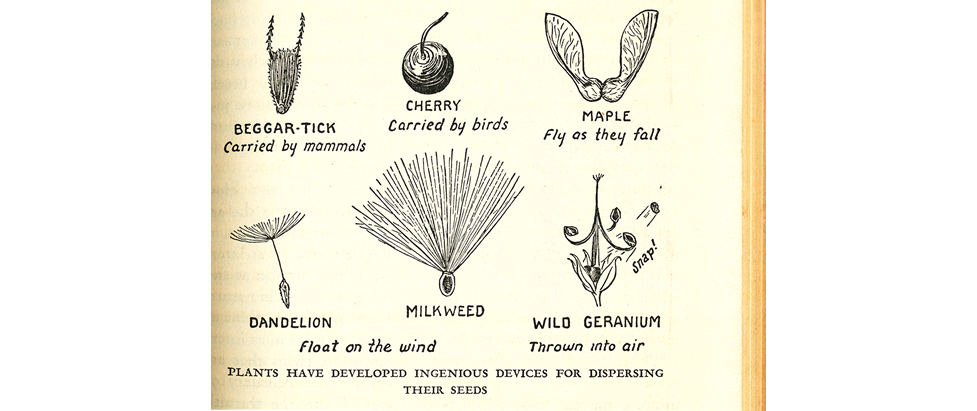
Nothing Dead about Collecting
Chapter XIV catches my eye. Speaking to “the hobby of fossil plants,” Mr. Zim encourages us amateurs to collect fossils. “Talk with anyone who has collected and studied these plants of the past and you will quickly discover that while fossils may be millions of years old, there is nothing dead about collecting and studying them.” Hear Hear!
We collect rocks here at the Cottage and have found a few fossils with imprints of plants. Our collection isn't scientific at all, although the study of geology is one of our favored sidelines, especially theories related to origin — something geology can help us understand. The artist in me simply appreciates a rock for its color and shape, jagged or smooth, orange or pale gray or creamy white. And we see every rock as a living organism with a story to tell.
It's unlikely you'll be able to find a copy of Plants for purchase. Oops! That's not true. I just pulled-up for viewing a used hardcover on Amazon for only $4.91. And, as I'm sure you know, there are similar books out there, eager to leap into your hands. Just keep your eyes sharp and your wallet at the ready.
The Third Dimension
Let's close with a passage from Chapter XIV, “Plants of the Past:
Looking at the plants of today is only skimming the surface. We cannot appreciate the vastness of the plant world without probing the third dimension of plant life: time. As we look back at the plants of the past, we find many of them even more interesting than the plants growing today. In addition, a knowledge of these early plants begins to throw light on questions that have troubled man since earliest times — such questions as ‘What is life?’ ‘How did life begin?’
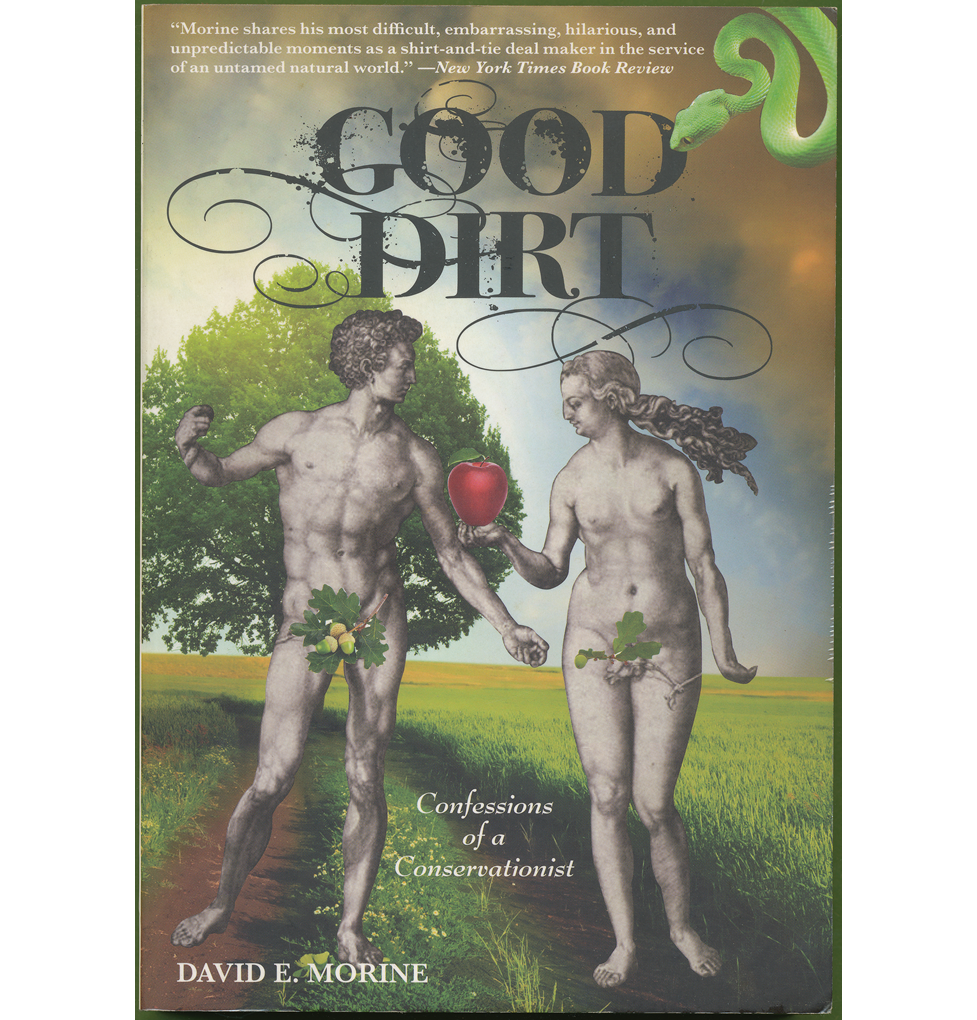
Good Dirt
Confessions of a Conservationist
By David E. Morine
1990 2012 | Lyons Press/Globe Pequot Guilford Ct. | 228 pages
Keeping a Nature Journal
By Clare Walker Leslie and Charles E. Roth
2000

The Psychic Power of Plants
By John Whitman
1974 | New American Library New York | 198 pages
Any practitioner who attaches electrodes to the leaves of plants to determine whether or not they practice extrasensory perception (ESP) is my kind of interrogator. Look no further than Central Intelligence Agency interrogation specialist Cleve Backster (1934-2013), who made his name in the 1960s by claiming that experiments with plants and polygraph machines proved that plants feel pain and show empathy to other plants through ESP.
In one of his experiments, Mr. Backster rigged the leaves of three philodendrons with electrodes, then fired up his polygraph machine to observe the philodendrons’ reaction to live brine shrimp being dumped into a pan of boiling water in another room. The plants, Mr. Backster determined, responded to the death of the shrimp by showing “acute stress curves similar to those shown by humans under intense pressure — either physical or mental,” John Whitman writes in The Psychic Power of Plants. “Through this experiment, Backster suggested that the dying shrimp were able to communicate ‘death signals’ to the plants in the other room.”
Writing with a sense of sober, New Age realism, author John Whitman tells a fantastic tale of emotional, tuned-in plants — no skepticism allowed. Is it possible that plants have feelings? he asks. “Was it really true that plants could respond to a man's thoughts through mental telepathy?” Can plants communicate with one another? Do plants have memory? What about emotions?
Maybe My Lantana Can Count
Yes, yes, yes, and yes our author contends. The narrative he spins tells us that plants show fear and can even count — “Ken Hashimoto, a polygraph expert from Japan, claims that his cactus can count and add up to twenty. He interprets the ability by peaks on polygraph or similar instrumentation charts,” Mr. Whitman writes.

The mysterious mandrake snared the attention of Mr. Whitman in a chapter entitled “Witchcraft.” The author devotes a couple thousand words, perhaps more, to a portrait of the mandrake. “Throughout its long history, the mandrake has been imbued with incredible power because of its reported ability to bring good fortune to its owner, to make him invisible, divine the future and hidden secrets, promote fertility and sexual desire, in short, do almost anything the possessor demanded. More than any other plant in man's history, the mandrake has been a symbol for the hidden and mysterious power of plants.”
The Psychic Power of Plants is a fun read for anyone who enjoys botany or late 60s New Age outbursts. It is jam-packed with reports about various experiments dedicated to uncovering arcane truths about the power and abilities of plants. And there's some practical advice to gardeners, too — about how to communicate with my droopy coleus to ease its fears after being liberated from the commercial nursery, or how to discover the emotional key that shall make my begonias bloom with riotous abandon — that, and much more, here on the outskirts of science.
Unfortunately, the book is currently out-of-print. Our paperback copy is slowly turning yellow but maintains its physical integrity — in other words, it's not falling apart … yet. Now I'm ready to go out into the world and find my mandrake.
Coming of Age in the Milky Way
By Timothy Ferris
1988 | Anchor Books Doubleday New York | 495 pages
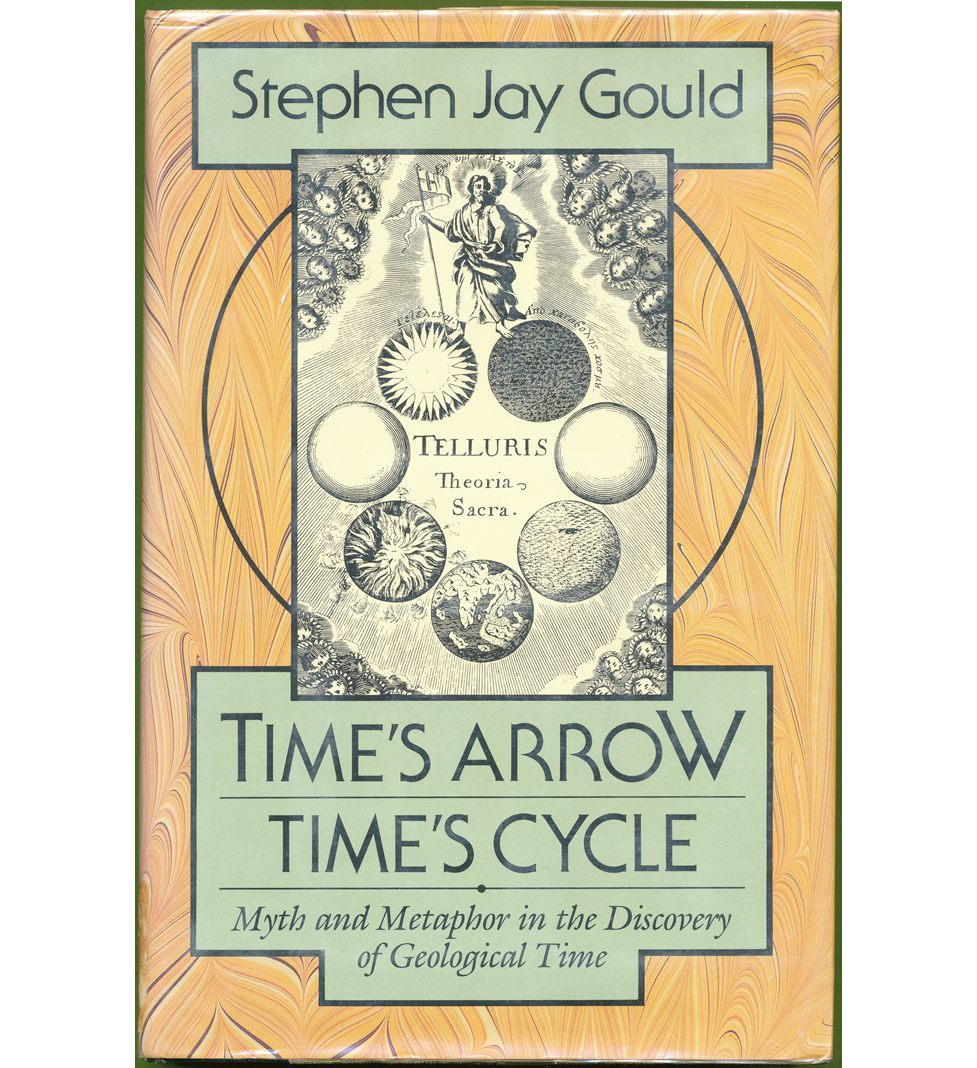
Time's Arrow Time's Cycle
Myth and Metaphor
in the Discovery of Geological Time
By Stephen Jay Gould
1987 | Harvard University Press | 222 pages
Concepts, Ideas, and Personalities in Dr. Gould's book include: Thomas Burnet; James Hutton's Theory of the Earth; Charles Lyell and the case of Professor Ichthyosaurus; systems of taxonomy and uniformity; and time's arrow of history and time's cycle of immanence.
Spaces of Capital
Towards a Critical Geography
By David Harvey
2001
The Ouachita Mountains
A Guide
By Milton D. Rafferty and John C. Catau
1991
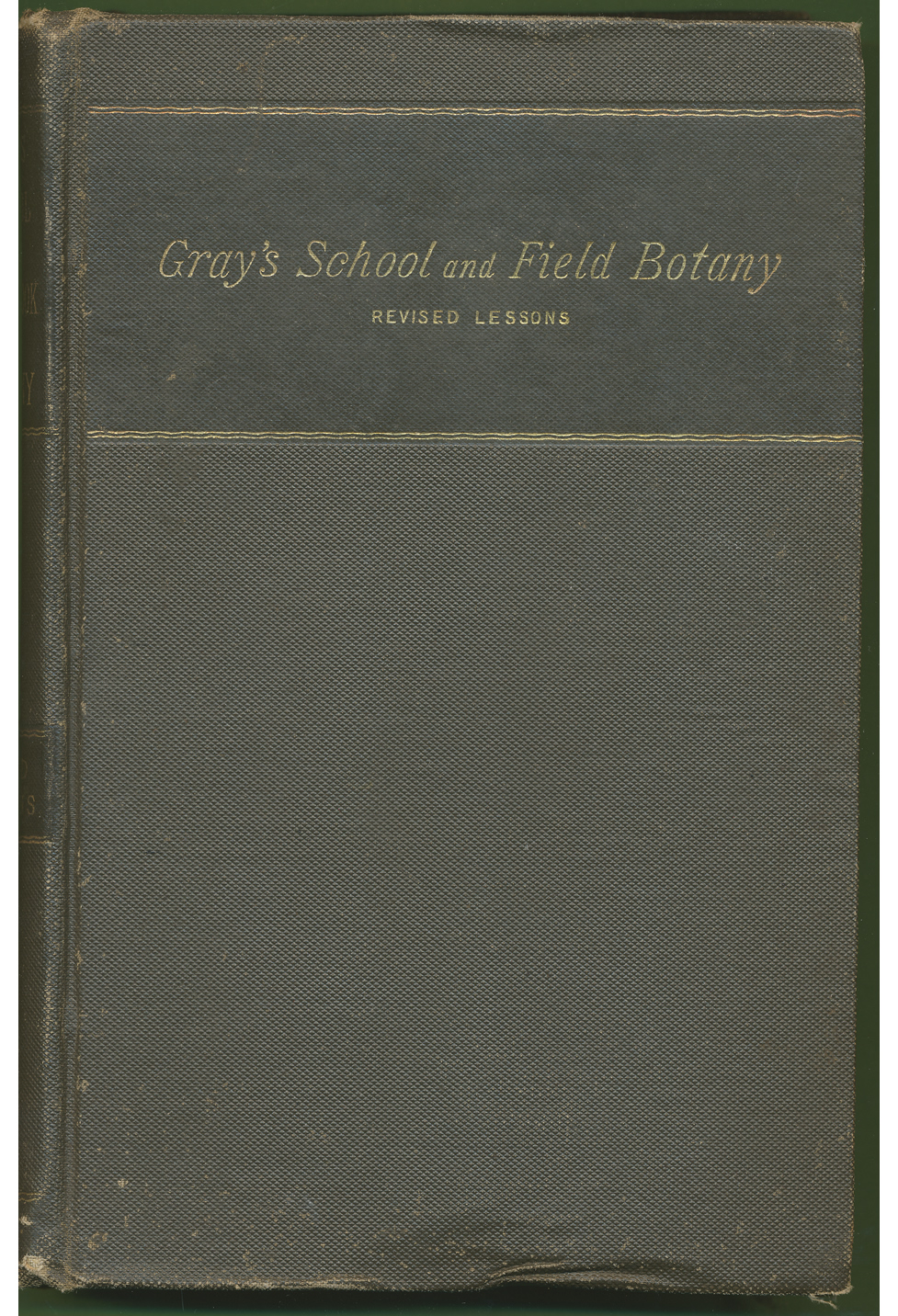
Gray's School and Field
Book of Botany
By Asa Gray
1887 | American Book Company New York | 386 pages
“The study of botany is not the learning of names and terms, but the acquisition of knowledge and ideas,” Professor Gray told his students. “No effort should be made to commit technical terms to memory. Any term used in describing a plant or exploring its structure can be looked up when it is wanted, and that should suffice. On the other hand, plans of structure, types, adaptations, and modifications, once understood, are not readily forgotten; and they give meaning and interest to the technical terms used in explaining them.” Now that's our kind of professor!
Studying a nineteenth century textbook from the Father of American Botany is quite the treat. The title, Dr. Gray tells us, is the same as his earliest publication from the year 1836. We wonder just how much botany has changed in the one hundred eighty-four years since that first publication or the one hundred thirty-three years since publication of the present object of study.
Simplicity rules throughout Dr. Gray's text. For example, his definition of botany is crisp and clean: “Botany is the name of the science of the vegetable kingdom in general; that is, of plants.” Let's take a look at how the professor organizes the study of botany:
I. Introduction
II. Flax as a Pattern Plant
III. Morphology of Seedlings
IV. Growth from Buds, Branching
V. Roots
VI. Stems
VII. Leaves
VIII. Flowers
IX. Stamens in Particular
X. Pistils in Particular
XI. Ovules
XII. Modifications of the Receptacle
XIII. Fertilization
XIV. The Fruit
XV. The Seed
XVI. Vegetable Life and Work
XVII. Cryptogamous or Flowerless Plants
XVIII. Classification and Nomenclature
XIX. Botanical Work

Gray's School and Field Book of Botany is actually two books in one. Leading the way is The Elements of Botany for Beginners and For Schools, a 226-page tutorial with an extensive glossary. Next is a book-length work, Field, Forest, and Garden Botany, A Simple Introduction to the Common Plants of the United States East of the Mississippi, Both Wild and Cultivated, devoted exclusively to providing an “Analytical Key to the Natural Orders or Families.”
Under the heading “Investigation and Determination of Plants,” Dr. Gray offers some practical advice to students. “In studying an unknown plant, make a complete examination of all its parts, and form a clear idea of its floral structure and that of its fruit, from pericarp down to the embryo, or as far as the materials in hand allow, before taking a step toward finding out its name and relationship by means of the keys or other helps which the Manuals and Flora provide. If it is the name merely that is wanted, the shorter way is to ask some one who already knows it.” In other words, just ask the expert!
Be Thee Well Studied
A total of 2,650 species and 947 genera are addressed in the keys and glossary, allowing students “who have well studied” the lessons to “find out the name, main characters and place of any of them.”
One last point: Dr. Gray makes an enthusiastic defense of exotic plants, which is much more in line with our thinking here at Crow's Cottage. Unlike the native enthusiasts of today, Dr. Gray the Harvard Don tells us to respect all plants no matter their origin. “It is very desirable that students should be able to use exotic as well as indigenous plants in analysis; and a scientific acquaintance with the plants and flowers most common around us in garden, field, and green-house, and which so largely contribute to our well-being and enjoyment, would seem to be no less important than in the case of our native plants.” Hear hear Asa Gray. Thank you very much.
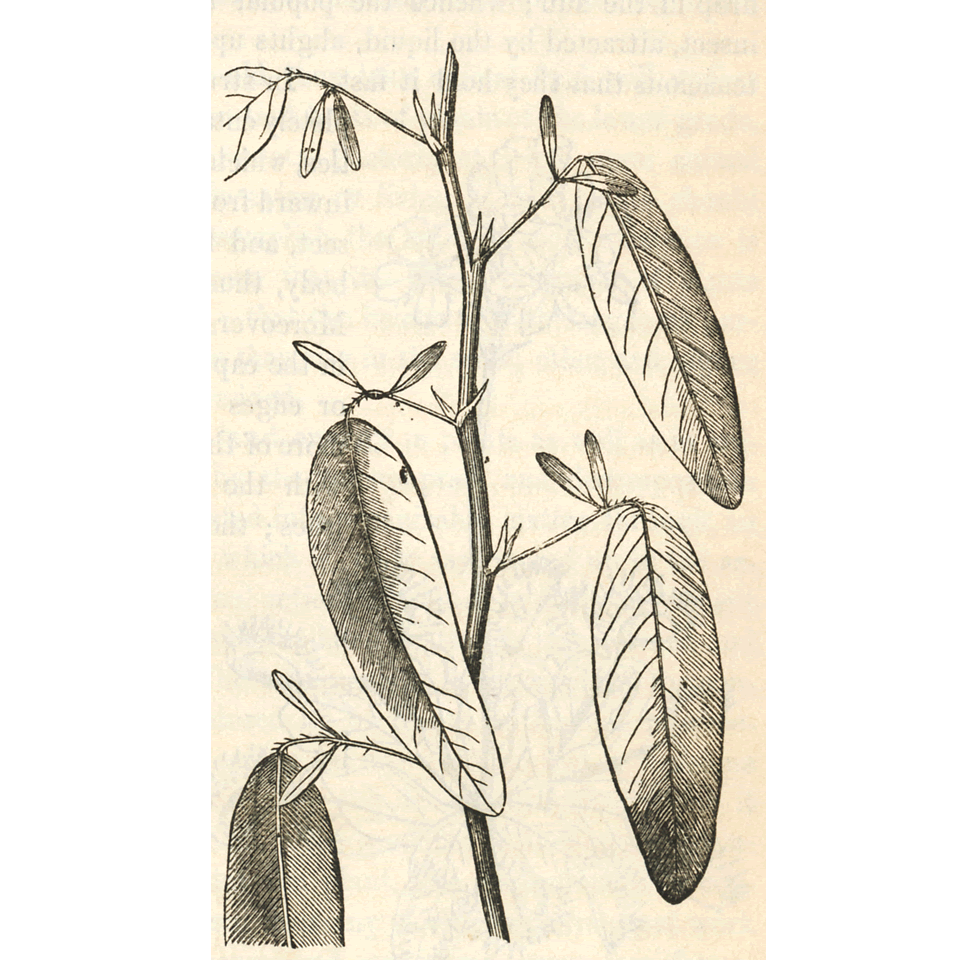
Braiding Sweetgrass
Indigenous Wisdom,
Scientific Knowledge,
and the Teachings of Plants
By Robin Wall Kimmerer
2019
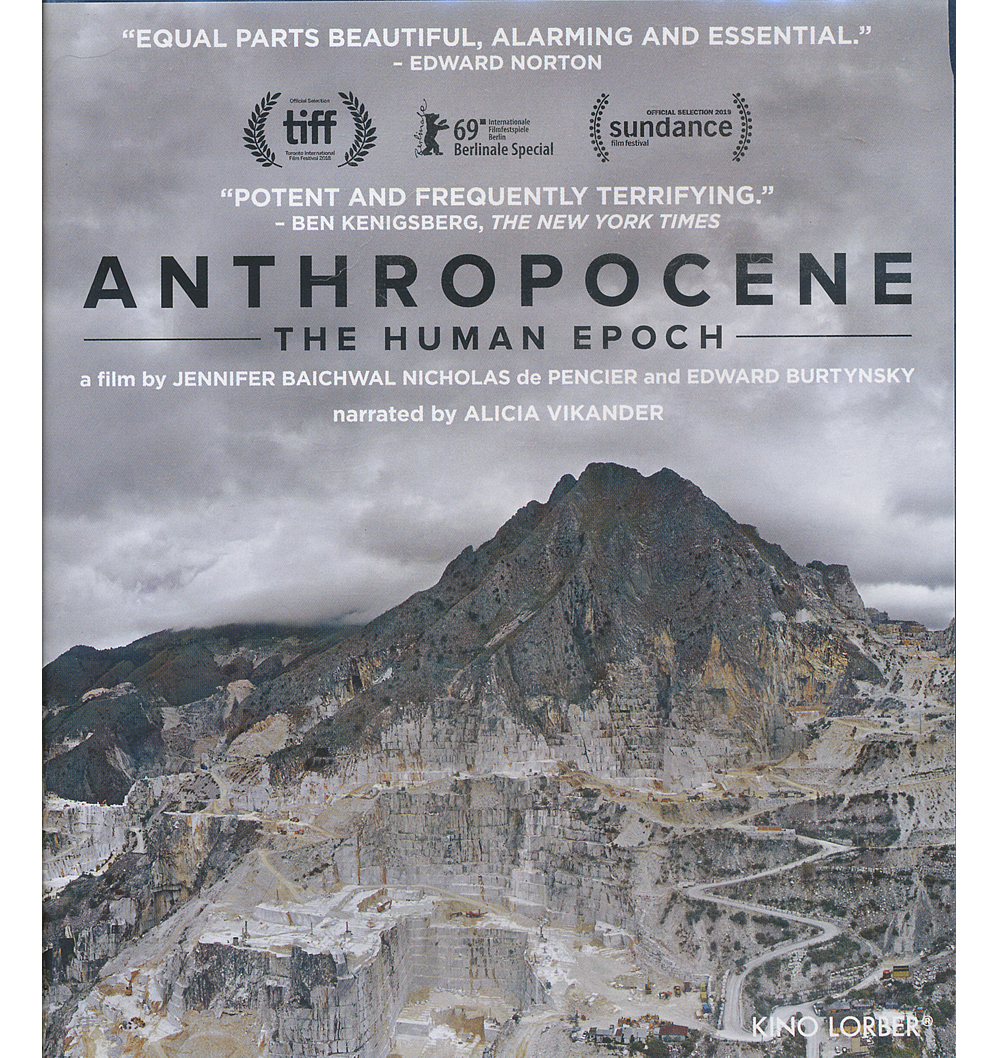
Anthropocene
The Human Epoch
A Film By
Jennifer Baichwal, Nicholas de Pencier and Edward Burtynsky
2018 | Anthropocene Films Inc. | 86 Minutes
Understated and somber, beautifully filmed and hauntingly written, Anthropocene: The Human Epoch makes the case for a new geological epoch, symbolized by the controversial designation of our present age as the Sixth Great Extinction — controversial for at least two reasons: first, conservative politicians and commentators refuse to accept the fact that human actions have wrought the ills of climate change and therefore fail to act; and second, professional geologists are unable to agree on when, if at all, the Holocene ends and the Anthropocene begins.
For many of us on the left side of the current political duality, the emergence of the Anthropocene from the smoke and detritus of the Industrial Revolution makes perfect sense by fact and by observation. The filmmakers take it for granted that the Anthropocene now lives among us, stating unequivocally that the Holocene has ended. Who are we to disagree?
“We live in the Anthropocene — a geological age marked by the irreversible ways in which human beings have affected the climate and environment,” Sarah Jaquette Ray writes in A Field Guide to Climate Anxiety, a refreshingly optimistic book about embracing life in the Anthropocene — quite the different approach from the message of doom portrayed in the film. We see merit in both perspectives … and wish we'd never gotten to this place.
Standing on the Arrow of Time
If we stand on the arrow of time and search for the Anthropocene as an epoch, we are confronted with a flurry of questions: 1) When did the Holocene, which has lasted for 11,700 years, come to an end? 2) Why does the film refer to the Anthropocene as an epoch while Sarah Jaquette Ray uses the term geological age? 3) Hasn't history shown us the folly of trying to place our own age in historical context? We're simply too close to the source — now — to accurately judge exactly where this present moment resides in geologic history.
Regardless of how we define it, The Anthropocene in the language of popular science is well-nigh upon us, a fact driven home with artful eloquence by the filmmakers. Truth is, humanity now dominates the Earth. Our actions — think fossil fuel, deforestation, and consumerism — directly influence the climate and the environment, usually in ways to the detriment of the planetary lifeforce. From this point of view, we are the Anthropocene.
Anthropocene the movie tours the planet to illustrate how human activity is tipping Earth in the direction of extinction. The film develops several major themes, including anthroturbation, technofossils, terraforming, and extraction — much of it new to us here at the Cottage.
The Concept of Technofossils
We travel to Kenya and the massive Dandora landfill site, surrounded by a quarter million souls, some of whom forage through the rubbish for a living. The rubbish, narrator Alicia Vikander tells us, speaks to the concept of technofossils, those “human created objects such as plastic, concrete, and aluminum that persist in the biosphere and eventually end up in the rock layers of the Earth. The technosphere, which is the entire aggregate of human created or altered material, is estimated at 30 trillion tons.”
Corporate agriculture and animal husbandry, we are told during visits to the Becezniki Potash Mine in Russia and a phosphate mine in Florida, have a seemingly limitless thirst for nitrogen, phosphate, and potash, the essential fertilizers for high-yield crops. The quest to feed a rapacious planet has fundamentally altered Mother Earth's ability to sustain many existing forms of life.
Eighty-five percent of the Earth's forests “have been cleared, fragmented, or degraded for human use,” we are told, underlining visits to a lumber mill in Lagos, Nigeria, and a tree-felling operation in a virgin forest in British Columbia, Canada. “The Earth's forests are home to eighty percent of terrestrial biodiversity and annually absorb thirty percent of anthropogenic carbon emissions,” the narrator says.
Digging, Drilling, Mining, Blasting
To illustrate anthroturbation, defined as damage to Earth's crust by human activity — digging, drilling, mining, and blasting — we visit the Gotthard Base Tunnel in Switzerland, at 57 kilometers the longest railway tunnel in the world. We also observe mining and milling at the industrial powerhouse of Norilsk, Siberia, 320 kilometers north of the Arctic Circle and the most polluted city in Russia — a forlorn metropolis without greenery. The film moves quietly through the sites chosen to illustrate the Anthropocene, delineating the beauty of form and color amidst incredible bouts of destruction. The quiet, steady pace of the narrative sets an eerie tone, discomforting and dispiriting to anyone devoted to Gaia.
There is a fine line between anthroturbation and terraforming. Anthropocene: The Human Epoch defines terraforming as “the act of altering the Earth's surface for human needs” to include mining, agricultural industrialization, and urban growth. To illustrate the point, the film takes us to an excavation site in Immerath, Germany — “expulsion, destruction, forgotten!” — where a twelve-thousand-ton excavation machine, the largest in the world, rips coal from the countryside like an insatiable beast from hell. Digging since 1978 at one of the largest open pit mines on Earth, the excavators have destroyed four little towns and surrounding countryside at a scale difficult to understand and too large to grasp.
To illustrate the extinction of species, the filmmakers display video portraits of the Sumatran tiger, a northern white-cheeked gibbon, an Okapi, a Père David's deer, a scimitar-horned oryx, an Egyptian tortoise, a mountain chicken frog, an axolotl Mexican walking fish, and a northern white rhino — some critically endangered, some extinct in the wild, and some functionally extinct.
In the Middle of an Extinction Event
“The Earth has had five major extinctions,” narrator Alicia Vikander says. “We are now in the middle of the Sixth Great Extinction, this time because of human impact. Extinction rates are up to ten thousand times higher than natural rates from habitat loss, poaching, pollution, climate change, and over-hunting.”
Dipping into the world's oceans, the film explores two stunningly beautiful coral reefs, the Batu Bolong Reef at the Komodo National Park in Indonesia and the Great Barrier Reef in Australia. Coral reefs, we learn, are home to 25 percent of all marine life and support one of the planet's most complex ecosystems. “Coral has existed for four hundred and fifty million years,” the narrator says, “but ocean warming and acidification have caused widespread bleaching and could eliminate all coral from the oceans before next century.”
Anthropocene: The Human Epoch takes us to several other locations and events indicative of a planet in trouble: the Carrara marble extraction site in Italy, lithium mining in a desert in Chile, the GM lithium battery assembly plant in Michigan, the Redeemed Christian Church of God in Lagos, the flooded city of Venice, the Gudong Seawall in China, and oil refineries in Houston, Texas.
Lagos is portrayed as an example of rampant population growth, having grown from two million to twenty million souls in just two generations. The narrator contends that the world's population will rise to ten billion by 2050 with most living in sprawling urban centers.
‘Ivory Belongs to Our Elephants’
The film closes with an ivory burning event in Kenya, a symbolic act intended to send a message to poachers and their customers the world over. Speaking before the ivory bonfires were ignited to destroy an estimated one hundred fifty million dollars in elephant tusks, Kenyan President Uhuru Kenyatta addresses the outdoor audience: “The last decade or so has seen catastrophic destruction of the African elephant. A new generation of poachers, armed with new weapons, connected to vast markets across the world, threaten to exterminate them. In destroying the ivory, we reject once and for all those who think our natural heritage can be sold for money. This is the largest haul of ivory ever to be destroyed. The principle is clear now: Ivory belongs to our elephants.”
What, then, can be done? Are we absolutely doomed because of our global climate crisis? “The earth is 4.5 billion years old and its history can be read in the rocks,” Alicia Vikander says. “Modern human civilization has developed within just 10,000 years. Yet our success as a species has tipped the planet's systems outside their normal limits. We are all implicated, some far more profoundly than others. But the tenacity and ingenuity that helped us thrive can also help us to pull these systems back to a safe place for all on Earth. Recognizing and reimagining our dominance signal is the beginning of change.”
I'll admit, the term dominance signal is new to me. As best I can learn, it refers to relationships with other creatures regarding social, territorial, and resource dominance — and in this case it must mean the dominance of homo sapiens over all the other flora and fauna of planet Earth. In that case, we for sure have entered the Anthropocene Epoch. We wonder if it is too late to overturn and outrun the Sixth Great Extinction.
NOTE: Anthropocene: The Human Epoch can be purshased from Kino Lorber in New York City. Our blue ray copy cost $25.48 shipping included. The company is trustworthy.
Philosophy of Biology
A Very Short Introduction
By Samir Okasha
2019 | Oxford University Press Oxford | 130 pages
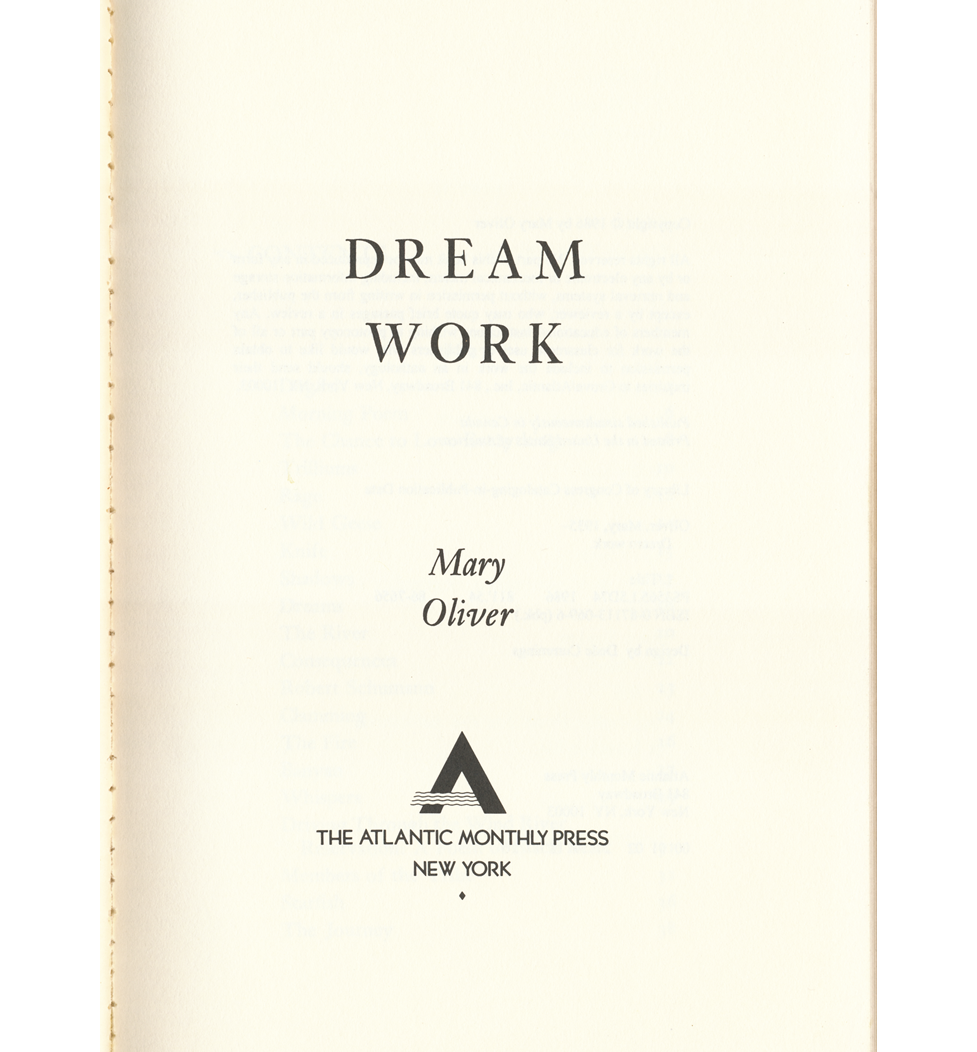
Dream Work
By Mary Oliver
1986 | Atlantic Monthly Press New York | 90 pages
Marsh Hawks
In the morning they glide
just above the rough plush
of the marshlands,
as though on leashes,
long-tailed and with
yard-wide wings
tipped upward, like
dark Vs; then they suddenly fall
in response to their wish,
which is alweays the same —br>
to succeed again and again.
What they eat
is neither fruit nor grain.
what they cry out
is sharper than a sharp word.
At night they don't exist, except
in our dreams, where they fly
like mad things, unleashed
and endlessly hungry.
But in the day
they are always there gliding
and when they descend to the marsh
they are swift, and then so quiet
they could be anything —
a rock, an uprise of earth,
a scrap of fallen tree,
a patch of flowers
casting their whirling shadow.
Geology
A Very Short Introduction
By Jan Zalasiewicz
2018
Plant Lore and Legend
The Wisdom and Wonder
of Plants and Flowers
By Ruth Binney
2006 and 2016
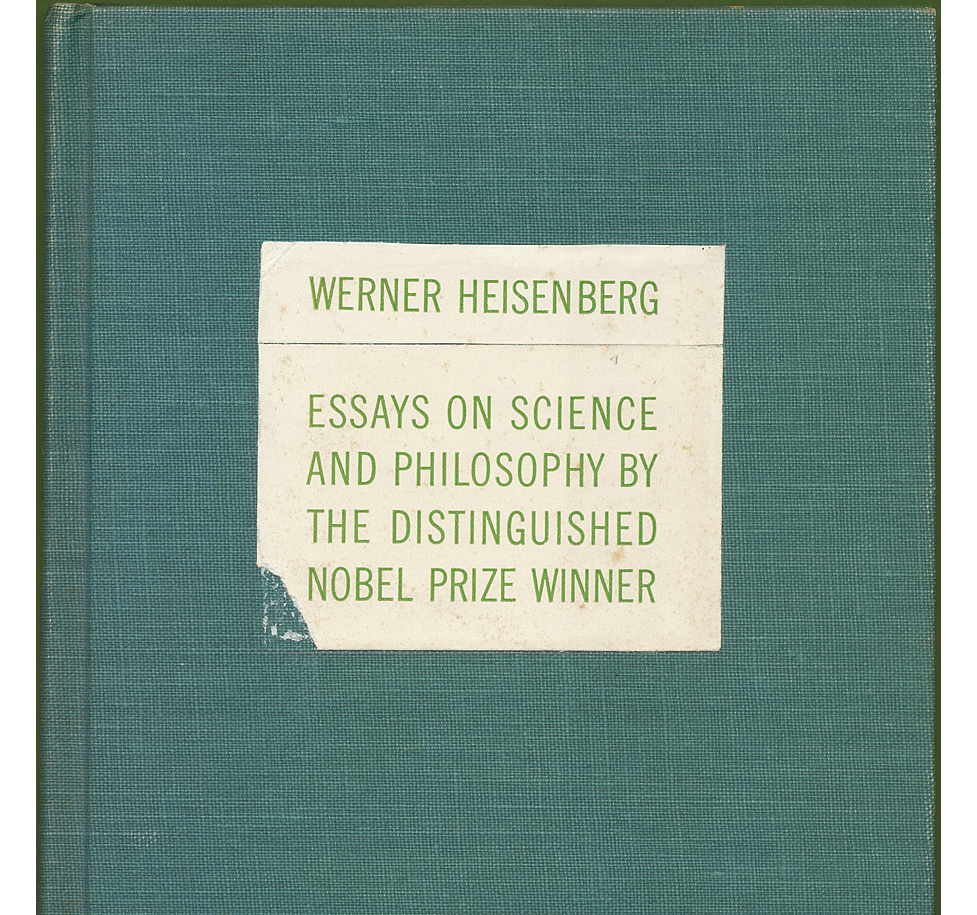
The Physicist's
Conception of Nature
By Werner Heisenberg
Translated from the German by Arnold J. Pomerans
1958 | Harcourt, Brace and Company New York | 192 Pages
Linking theoretical physics to the natural realm, Nobel laureate Werner Heisenberg breaks with centuries of scientific tradition by cleaving the object of study from the act of study, contending that the object of research is no longer nature itself. Instead, it is humankind's investigation of nature that prevails in an anthropocentric universe.
From this intellectual standpoint, we become snared in a trap of duality and uncertainty, in which nature no longer exists for its own sake. “Science, we find, is now focused on the network of relationships between man and nature, and which we as human beings have simultaneously made the object of our thoughts and actions,” Professor Heisenberg writes. “Science no longer confronts nature as an objective observer, but sees itself as an actor in this interplay between man and nature.
“The scientific method of analyzing, explaining and classifying has become conscious of its limitations, which arise out of the fact that by its intervention science alters and refashions the object of investigation,” Professor Heisenberg continues. “In other words, method and object can no longer be separated. The scientific world-view has ceased to be a scientific view in the true sense of the word.”
A Christian Form of Godlessness
Concepts and methods in the practice of the scientific method change constantly, but some changes are more profound than others. The gradual departure of deity from scientific discourse over the past four centuries has transformed a God-centered science into “a specifically Christian form of Godlessness,” Professor Heisenberg (1901-1976) writes in his essay, “The Idea of Nature in Contemporary Physics.” He continues:
Thus, there took place a slow change in the significance of ‘nature’ as a subject for investigation by science. It became a collective concept for all those realms of experience into which man could penetrate by means of science and technology, regardless of whether or not they appeared as ‘nature’ to his immediate perception. Even the phrase ‘description of nature’ lost more and more of its original significance of a living and meaningful account of nature. Increasingly it became to mean the mathematical description of nature, i.e. an accurate and concise yet comprehensive collection of data about relations that hold in nature.
Are We Better Off?
Are we better off with this sea change? Removing God from the equation of hard science in favor of over-simplified materialism, Professor Heisenberg contends, has brought about “the crisis of the materialist conception,” introducing an element of abstraction and lack of clarity into what appeared otherwise to be so reasonable a world-view.” This uncharted state of affairs has changed dangerously our ways of thinking, he writes, removing humankind's control of the environment — so that “for the first time in the course of history, modern man on this earth now confronts himself alone."
Five other essays in this deeply interesting book by the Nobel laureate add to our understanding of the relationship between physics and nature. It's rare to encounter a physicist who also masters the language of popular science — the late Dr. Lothar Schäfer comes to mind — but Professor Heisenberg meets the challenge eloquently. We won't say The Physicist's Conception of Nature is an easy read; however, if you enjoy a flight of the intellect powered by philosophy, we highly recommend it. Finding a copy may be a challenge. The book is out-of-print, and the least expensive used book offer we could find on 22 May 2020 was $77.47.
The Overstory
A Novel
By Richard Powers
2018 | W. W. Norton and Company New York | 502 pages
The Cherokee Herbal
Native Plant Medicines
By J. T. Garrett
2003
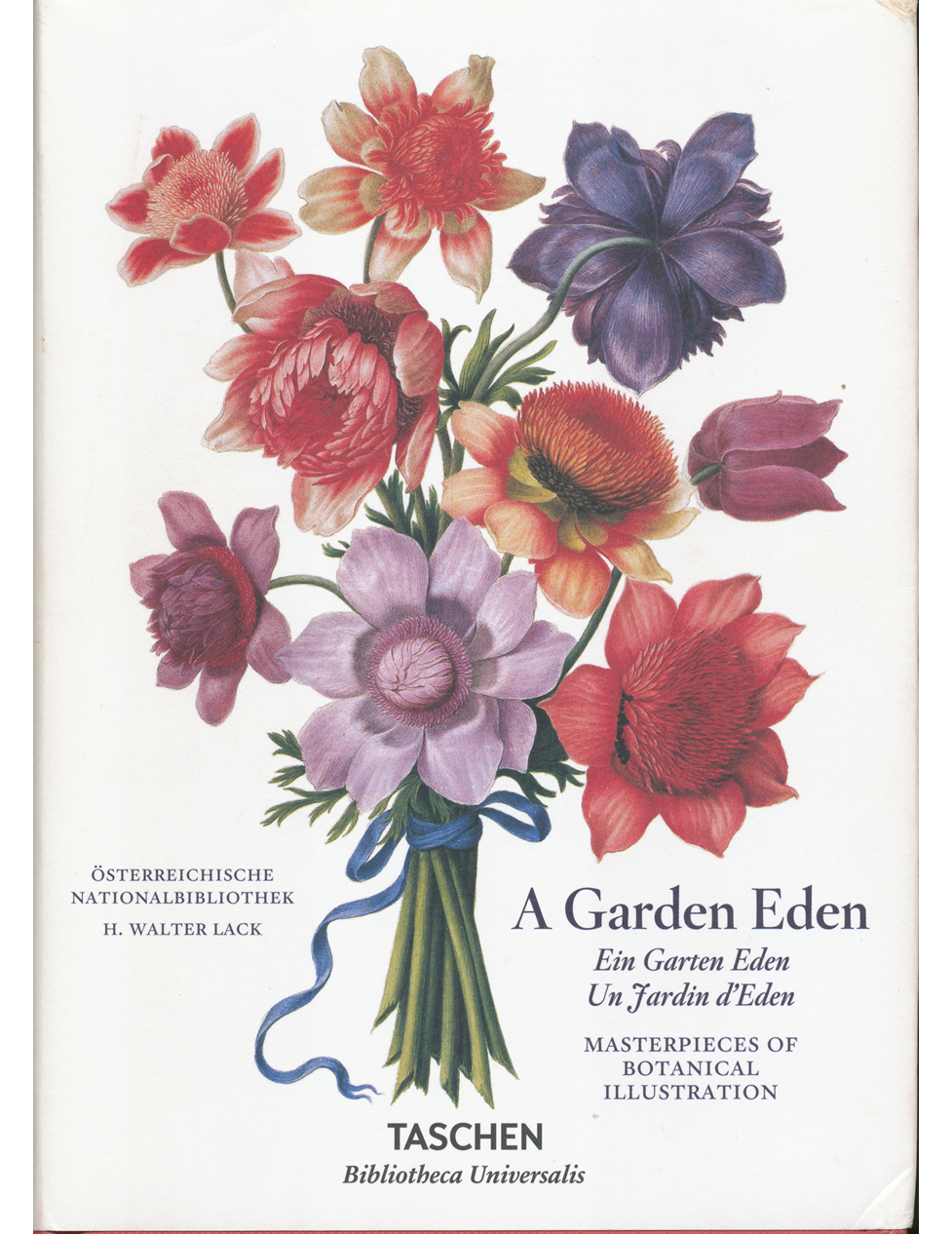
A Garden Eden
Masterpieces of Botanical Illustration
By H. Walter Lack
2016 | Taschen Verlag | 725 pages
Full and vibrant color… Sweet design by Birgit Eichwede… Illustrations dating all the way back to the sixth century… These traits come together to make a beautiful book devoted to the diversity of the plant kingdom and to the highest standards of printing craftsmanship. “It was decided that the project should give pride of place to the illustrations; that the texts should be printed in English, French, and German; and that the volume should above all convey pleasure in the diversity of the plant kingdom in general and in masterpieces of botanical illustration in particular.” So writes Johanna Rachinger in the Preface. Mission accomplished!
Florilegium
The Book of Plants
By Klaus Walter Littger and Werner Dressendörfer
2016 | Taschen Verlag | 541 pages
“A magnificent pictorial document of the flowers grown in the greatest German garden of its time, the Hortus Eystettenis is in a class of its own when it comes to the range of flowers engraved,” the book jacket states. First published in 1630, the 367 copperplate engravings by Basilius Besler (1561-1629) capture the spectacular diversity of the palatial gardens of Prince Bishhop in Eichstätt, Bavaria.” The book is surprisingly affordable, too. And the clarity, depth, and colors of the engravings remind us of how much we've lost in the gradual transition away from painting and drawing toward the inevitable flatness of photography.
Principles of Geology
9th Edition
The Modern Changes of the Earth
and Its Inhabitants
By Sir Charles Lyell
1858
The Life
of North American Insects
By B. Jaeger & H. C. Preston
1859

The Lorax
By Dr. Seuss
1971 1999 | Random House Children's Books New York | 61 pages
A children's book yes it is, and also a strong testament to the value of conservation and respect for nature. Dr. Seuss cleverly crafted a morality tale about the deforestation of the prolific, sweet smelling Truffula Tree forest, all in the name of progress and profit — “business is business! And business must grow regardless of crummies in tummies, you know.”
The Lorax mysteriously sprang from the first ax-felled Truffula, admonishing the businessman for destroying the tree. “I am the Lorax. I speak for the trees. I speak for the trees, for the trees have no tongues.” Unfortunately, the Lorax's plea fell on deaf ears.
Not wishing the vain attempt to encapsulate the entire story of The Lorax — the tale falls flat in a reviewer's prose — we will tell you that the greedy capitalist, named The Once-ler, destroys the forest, leaving behind a legacy of polluted skies, smog in the throat, an empty factory, degraded water, and the total decimation of the Truffula Trees.
Alas, at the end there arises a grain of hope from the ashes of environmental disaster. The Lorax has disappeared. All that remains is the industrial debacle of Once-ler's making. “Catch!” shouts Once-ler, tossing something to a young boy, the same young boy who paid fifteen cents to Once-ler to coax out the sorry tale. Maybe. It's all too mixed up for this old man. And then the seed falls to the ground.
It's a Truffula Seed.
It's the last one of all!
You're in charge of the last of the Truffula Seeds.
And Truffula Trees are what everyone needs.
Plant a new Truffula. Treat it with care.
Give it clean water. And feed it fresh air.
Grow a forest. Protect it from axes that hack.
Then the Lorax
and all of his friends
may come back.
We never managed to determine exactly who is telling the tale. Our best guess is a mysterious omniscient narrator. Not that it matters. The tale is told and told well. We see The Lorax as a teaching tool for tree huggers of all ages — environmentalism packaged in a children's book … with the iconic mantra I am the Lorax. I speak for the trees. I speak for the trees because the trees have no tongues. Waiting for the Lorax to return, we embrace his message and speak for the trees — the trees around us, we speak for the trees, the trees that remain. We speak for the trees.
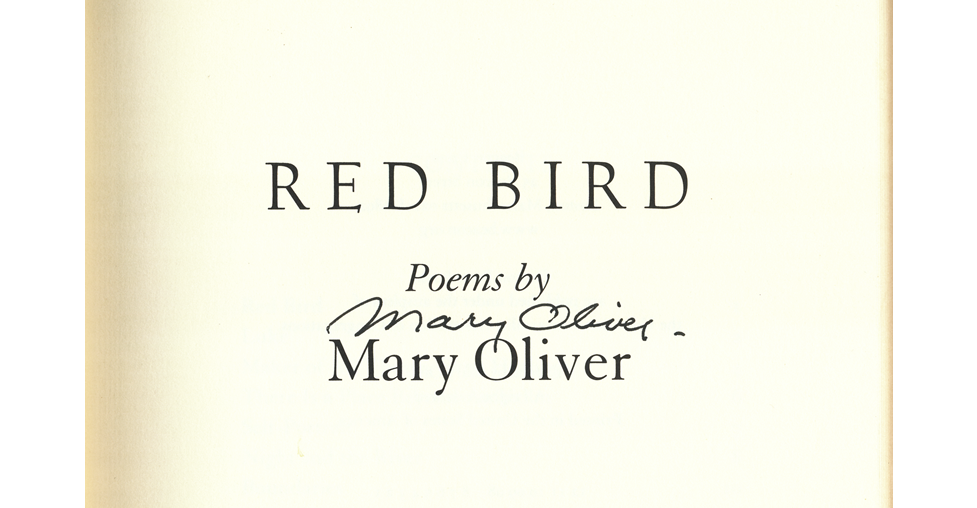
Red Bird
Poems by Mary Oliver
By Mary Oliver
2008 | Beacon Press Boston | 78 pages
Showing the Birds
Look, children, here is the shy,
flightless dodo; the many-colored
pigeon named the passenger, the
great auk, the Eskimo curlew, the
woodpecker called the Lord God Bird,
the…
Come, children, hurry — there are so many
more wonderful things to show you in
the museum's dark drawers.
Extinct. A tough word to type. Poet Oliver's gentle reminder of all that we've lost speaks through poetry a poignant reminder of extinct birds, the vanished ones who nest in the museum's dark drawers — forever lost through the actions of humankind.
The shy ivory-billed woodpecker, Isaac Anderson tells us, acquired the name Lord God Bird because of its size and beauty. “Great God, people were known to say,” Mr. Anderson writes on his website Image. “Lord God, look at that bird.” And what a bird she was, standing 20 inches tall with a 31-inch wingspan. The last known sighting — and that one in hot dispute — occurred in 2004 along the Cache River bottoms in eastern Arkansas.
Extinct: the Eskimo curlew, the new moon bird, last sighted in 1963. The flightless dodo, eaten to death by sailors, last sighted in 1681. The passenger pigeon, falling from a population of one billion to zero in just 50 years, last seen in the wild in 1901.
Synthetic Biology
A Very Short Introduction
By Jamie A. Davies
2018 | Oxford University Press Oxford | 126 pages
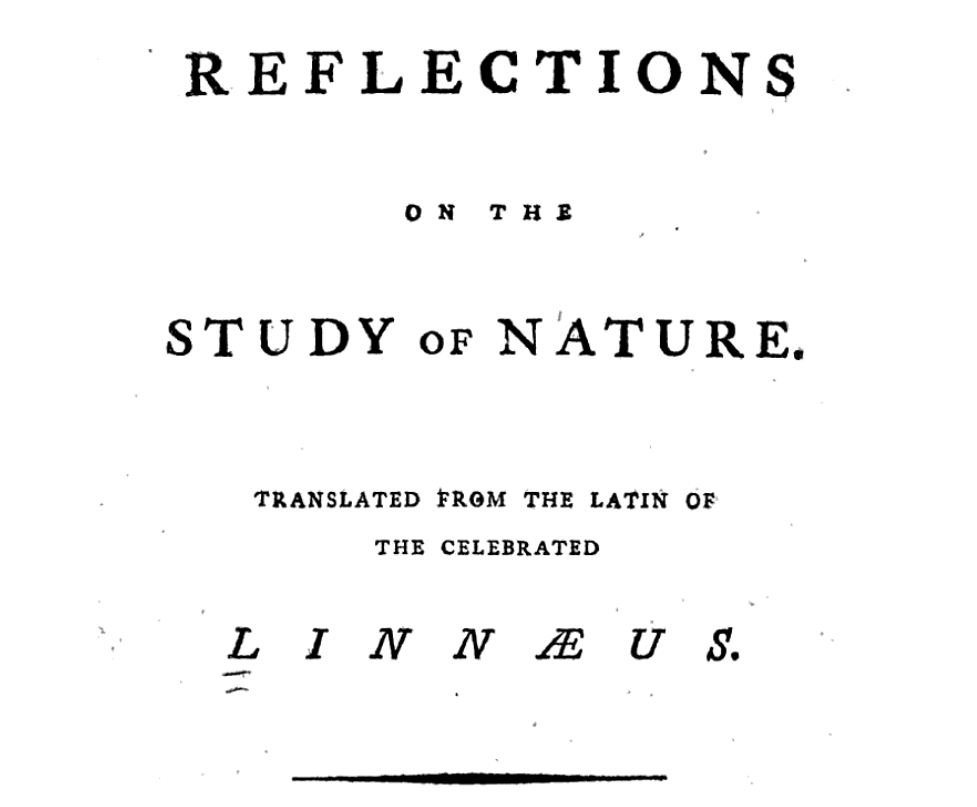
Reflections on
the Study of Nature
By Carl Linnæus
Translated by James Edward Smith
1785 | George Nicol Bookseller London | 44 pages
A fascinating little tract, Reflections on the Study of Nature made its appearance in the English language seven years after Mr. Linnæus (1707-1778) passed away. The Latin text — Mr. Linnæus wrote all of his works in Latin — came into the possession of translator James Edward Smith, who tells us that Reflections is the Preface to the Museum Regis Adolphi Friderici, a catalogue of the museum collections of the late King of Sweden.
“The Linnæan Library coming into the possession of the Translator,” Mr. Smith writes, referring to himself in the third person, “this publication particularly engaged his attention; as containing one of the best general views of the economy of Nature that he has met with, as well as the most candid and rational recommendation of the study of Natural History.”
Translator Smith's introduction is a little jewel of its own. And Mr. Linnæus’ observations about nature and humankind stand outside the work that made him famous, Systema Naturae, first published in 1735 and growing in bulk and reputation through a dozen editions as he came to be known as the Father of Taxonomy.
“The knowledge of one’s self is the first step towards wisdom: this was the favorite precept of the wise Solon, and was written in letters of gold on the entrance of the temple of Diana,” Mr. Linnæus wrote. “A man surely cannot be said to have attained self-knowledge, unless he has at least made himself acquainted with his origin, and the duties that are incumbent upon him.”
We could go on — Reflections is a very good read once you get past the eighteenth-century typesetting … but the hour is way late on this warm Saturday night in the Ozark Highlands. We're eager to visit Dreamland, so let us leave off with this passage about origins from Reflections on the Study of Nature:
Men and all animals increase and multiply in such a manner, that however few at first, their numbers are continually and gradually increasing. If we trace them backwards, from a greater to a lesser number, we at length arrive at one original pair. Now mankind, as well as all other creatures, being formed with such exquisite and wonderful skill, that human wisdom is utterly insufficient to imitate the most simple fibre, vein, or nerve, much less a finger, or other contriving or executive organ; it is perfectly evident, that all these things must originally have been made by an omnipotent and omniscient Being; for “he who formed the ear, shall he not hear? And he who made the eye, shall he not see?”
PS: Reflections on the Study of Nature is available for free at Google Books.
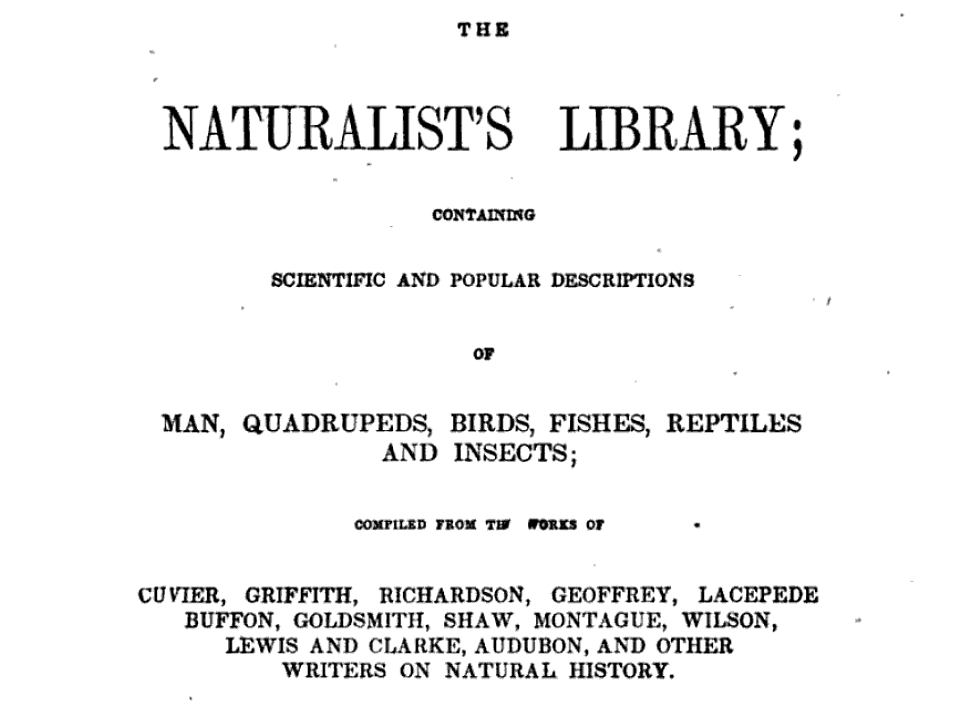
The Naturalist's Library
A. A. Gould Editor
1854 | Phillips, Sampson, and Company Boston | 880 pages
Province of the Naturalist
“The object of Natural History is the material world, and the various classes of organized and inorganic bodies which form its component parts,” editor A. A. Gould writes. “To examine and arrange these in connection with the laws by which they are governed, to investigate their structure, their history, and their uses, is the province of the Naturalist.
“In its most extended sense, Natural History embraces all of the visible creation, and includes every object in that creation, from the most magnificent of the celestial bodies, to the smallest insect or particle of dust, which is found in the globe inhabited by men.”
Animal, Vegetable, Mineral
“Animal life is distinguished from vegetable life, by the power of locomotion and sensation; the first is active — the other passive. The nourishment of plants is derived through the medium of their roots; that of animals, through a central organ of digestion, destined to receive food.… The mineral kingdom is distinguished from the other two great divisions, by the absence of vitality and organic structure. Forming the solid crust of the globe, the mineral kingdom, in its various compounds, affords support and sustenance to the organized beings existing on its surface.”
Wisdom and Power and Goodness
“To Man alone, as the intelligent head of the whole, is given the dominion over the inferior creatures; his reason has enabled him to apply to his use the whole of the organized and inorganic bodies around him, and left him, within certain limits, the accountable Master of the creation.… there is something in the study of Nature which approaches to philosophy of a higher kind — something that, while it teaches man his place in this Creation of Wonders, infallibly leads him to admire the wisdom, and power, and goodness, displayed by the Great Author.”

Geology
A Golden Guide
By Frank H. T. Rhodes
1972 and 1991

Rocks and Minerals
(Pocket Genius)
2012 | DK Publishing New York | 156 pages
At 5 x 3 3/4 inches, this handy booklet is ideal as a reference for field work. To my misfortune, the type is very small and challenging to read. To my good fortune, the images of rocks and minerals and the places where they're found are well done — full color, sharp, and easy on the eyes. Rocks and Minerals is part of DK Publishing's Pocket Genius series.
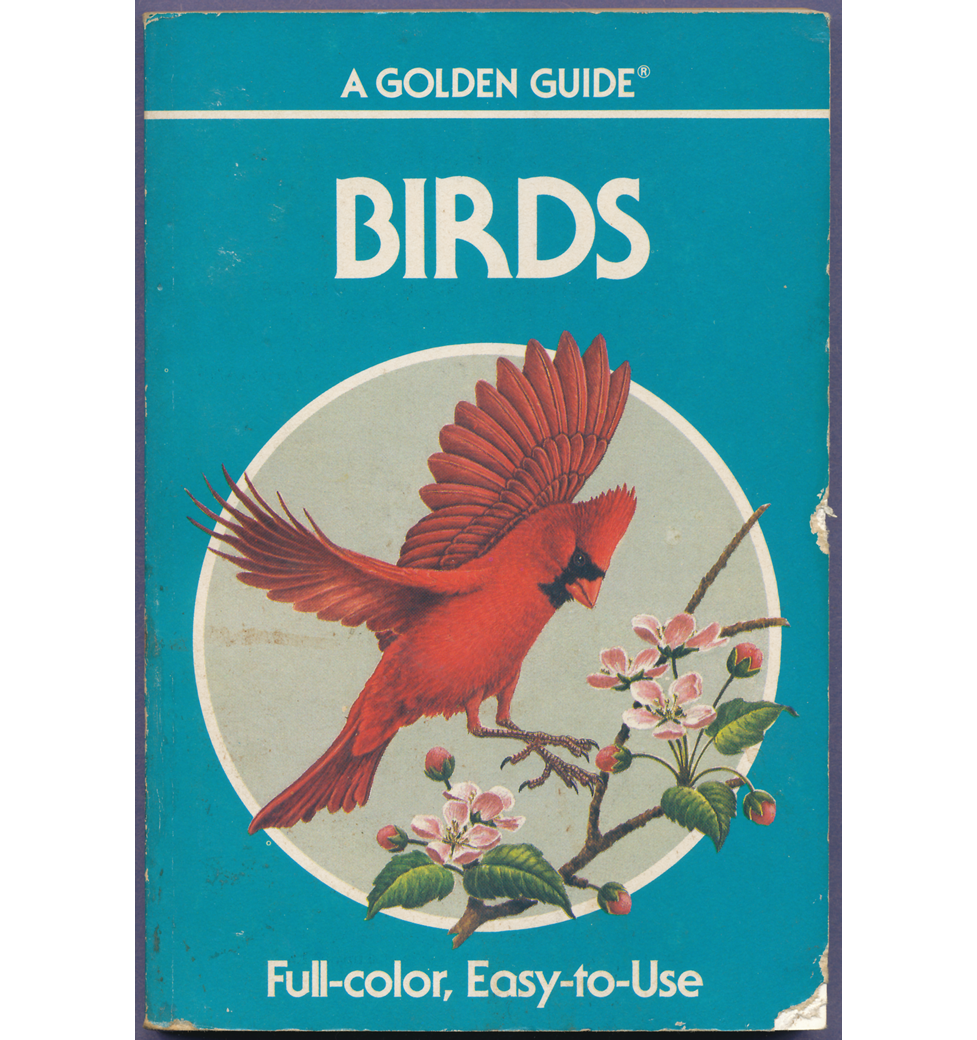
Birds
A Golden Guide
By Herbert S. Zim and Ira N. Gabrielson
1949 1987 | Golden Press New York | 160 pages
“This is a field book made to fit your pocket when you go looking for birds,” the authors write, wasting no words. Thanks to illustrator James Gordon Irving, the book is also downright beautiful. In addition to gorgeous watercolors of more than one hundred birds, Birds includes mini lessons on bird watching, a methodology for finding and identifying birds, a bird anatomy lesson, and amateur activities. Birds is definitely a winner. The 1987 Revised Edition here on my desk is no longer available, but the 2001 edition should well serve a budding birder. Both have 160 pages, but the latest is published by St. Martin's Press and measures 6 x 4 inches.
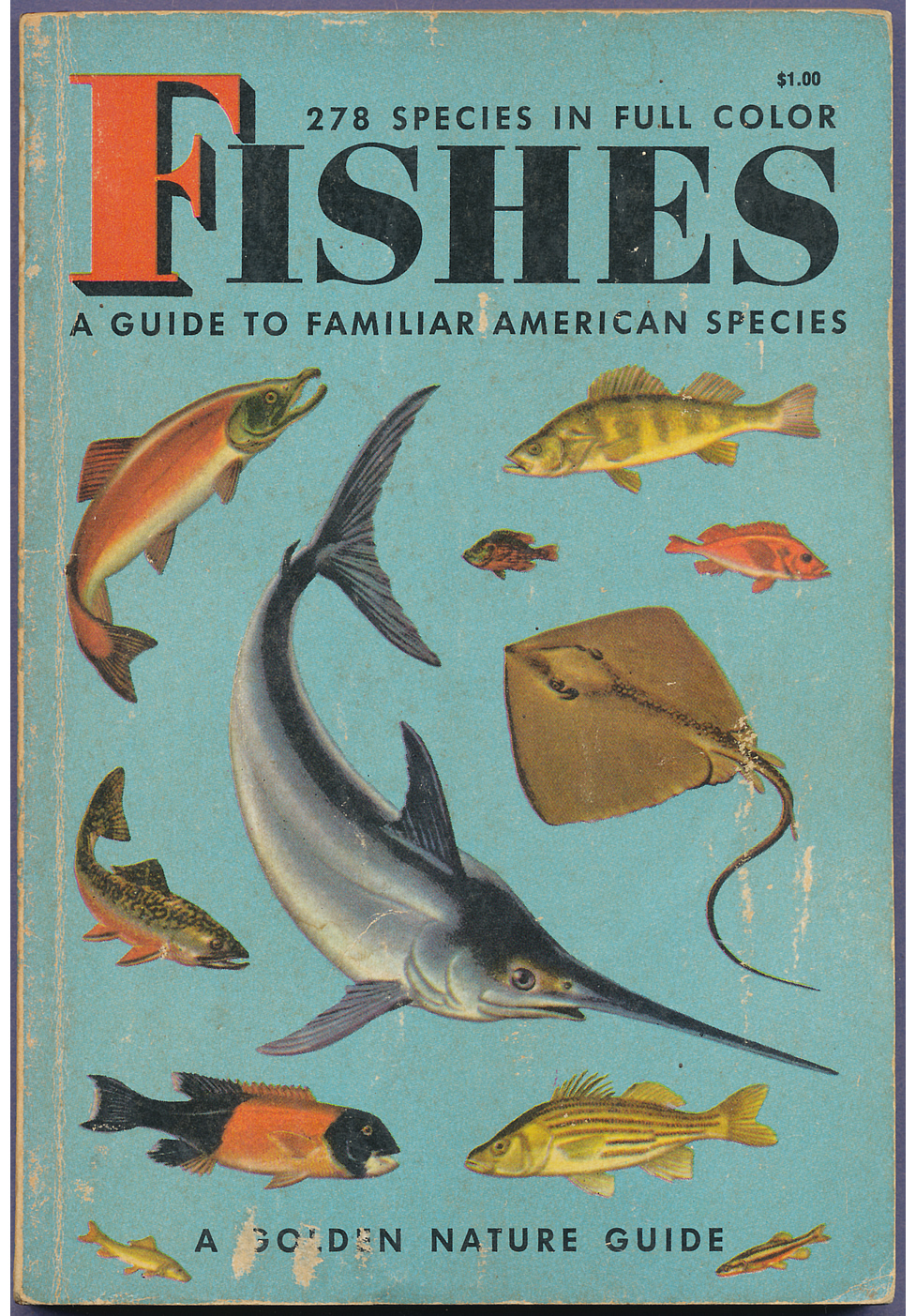
Fishes
A Guide to Familiar American Species
By Herbert S. Zim and Hurst H. Shoemaker
1955 | Golden Press New York | 160 Pages
“This book is an introduction to the world of fishes — an important part of the greater world of aquatic life,” the authors of 1955 write in the sparse style typical of Golden Books. “It is primarily a guide to fishes as living animals and hence attempts to include most of the common fresh- and salt-water fishes of North American waters.” James Gordon Irving's illustrations add a strong touch of excellence to the presentation. Our 1955 edition, we suspect, is much different than the 2001 “First Edition” from St. Martin's Press, featuring a “modern, new cover as part of a multi-year, million-dollar program to revise, update, and expand the complete line of guides for a new generation of students.”
My First Book
about Backyard Nature
By Donald M. Silver and Patricia J. Wynne
2016
The Story of the Rocks
Fourteen Weeks in Popular Geology
By J. Dorman Steele, Ph.D.
1877
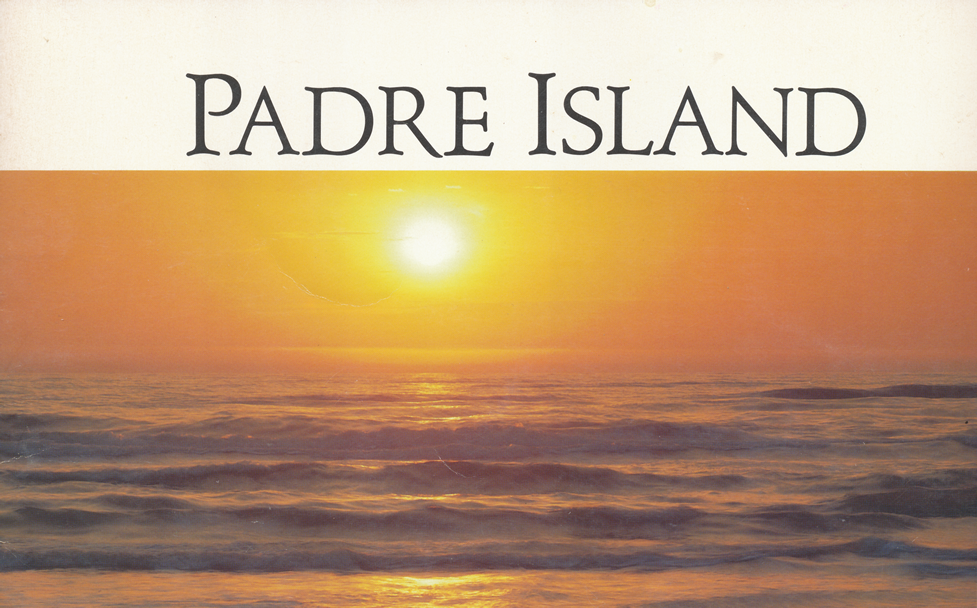
Padre Island
The National Seashore
By Joseph E. Brown
Photography by George H. H. Huey
1991 | Southwest Parks & Monuments Association | 62 pages
Most of the time when someone speaks of Padre Island, they add a direction and call it South Padre Island, a notorious spring break destination for the young and bold along the Texas coast of the Gulf of Mexico. For the naturalist, however, Padre Island is The National Seashore, one of the longest undeveloped barrier islands in the world — seventy miles of protected environment administered by the National Park Service.
Geologists estimate the age of the island to be between three thousand and five thousand years. Only thirty-five to forty feet thick from the sea to the foredune ridge, the sandy beach is favored by shore birds — sandpipers, sanderlings, godwits, plovers, stilts, willets, snipes and scores of others — and decorated by sesuvium, beach morning glory, and railroad vine. Fauna who inhabit the thin stretch of sand include the ghost crab, the bean clam, and beach flea. On the grassland interior beyond the foredune ridge are found the Padre Island kangaroo rat, the Ridley turtle, the eastern mole, the ground squirrel, the Texas pocket gopher, the racoon, the jackrabbit, and the coyote.
What about the other creature, homo sapiens? “Man's involvement with Padre Island is a fascinating, exciting drama of adventure, intrigue, and romance whose players are seafarers, Spanish conquistadors, Indians, oilmen, cowboys, combatants of several wars … and a goodly number of people who, over the centuries, have come seeking peace, escape, and solitude,” Joseph E. Brown writes.
Me and Our Old Dog Buck
We can attest to the peace and solitude of this remote Texas seashore, having spent a midweek of peaceful nights and days there with our old dog Buck, who was dying of cancer. A mere handful of seashore visitors passed our way during Buck's final sojourn with his master. Our time there remains one of my most poignant memories.
Mr. Brown's Padre Island is a beautifully written paean to a special place on the road less traveled. “Padre Island is above all a magnificent natural laboratory, a place where all the various forces affecting barrier islands can be studied and appreciated,” he writes. “Not only is it America's longest barrier island, it also is the longest section of undeveloped coastal wilderness, island or mainland, in America outside Alaska.… To many visitors to Padre Island, the meeting place of the land and sea holds a special magic.… This is part-land, part-sea, sometimes wet, sometimes dry, and constantly shifting from one to the other as the tides ebb and flood.”
The Beekeeper’s Lament
How One Man and a Half Billion
Honey Bees Help Feed America
By Hannah Nordhaus
2011
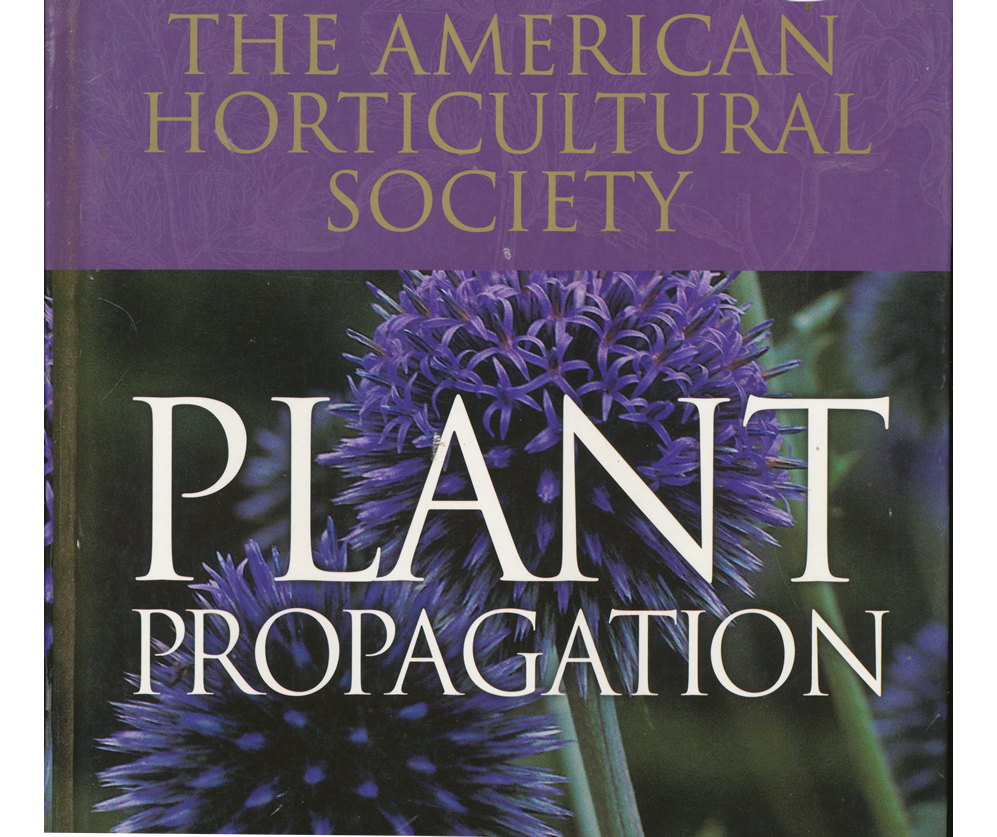
Plant Propagation
American Horticultural Society
Alan Toogood Editor & Peter Anderson Photography
Illustrations by Karen Cochrane
1999 | DK Publishing New York | 320 pages
The art of propagation is as old as civilization.…
Profusely illustrated and splendidly photographed, Plant Propagation takes on the mantle of a one-volume encyclopedia — and wears it very well. It's smartly organized, too, with a top-notch narrative presented along these lines: Garden Trees, Shrubs and Climbing Plants, Perennials, Annuals and Biennials, Cacti and Other Succulents, Bulbous Plants, and Vegetables.
The author doesn't lack confidence, either, as indicated in this passage from the Introduction: “An understanding of the ways in which plants grow and reproduce, and of the relevance and application of practical techniques, will allow the gardener to propagate plants with ease and confidence.”
We've come across large-format books like Plant Propagation in the past — and most are ephemeral tomes good for the coffee table but lacking in useful or lasting content. This book breaks the mold, offering the reader much more than beautiful images. The information is incisive with how-to-do-it explanations that are easy to grasp and practical to put into action. The tone of the narrative is upbeat, realistic, and down-to-earth.
Book about Birds
By Rufus Merrill
1850
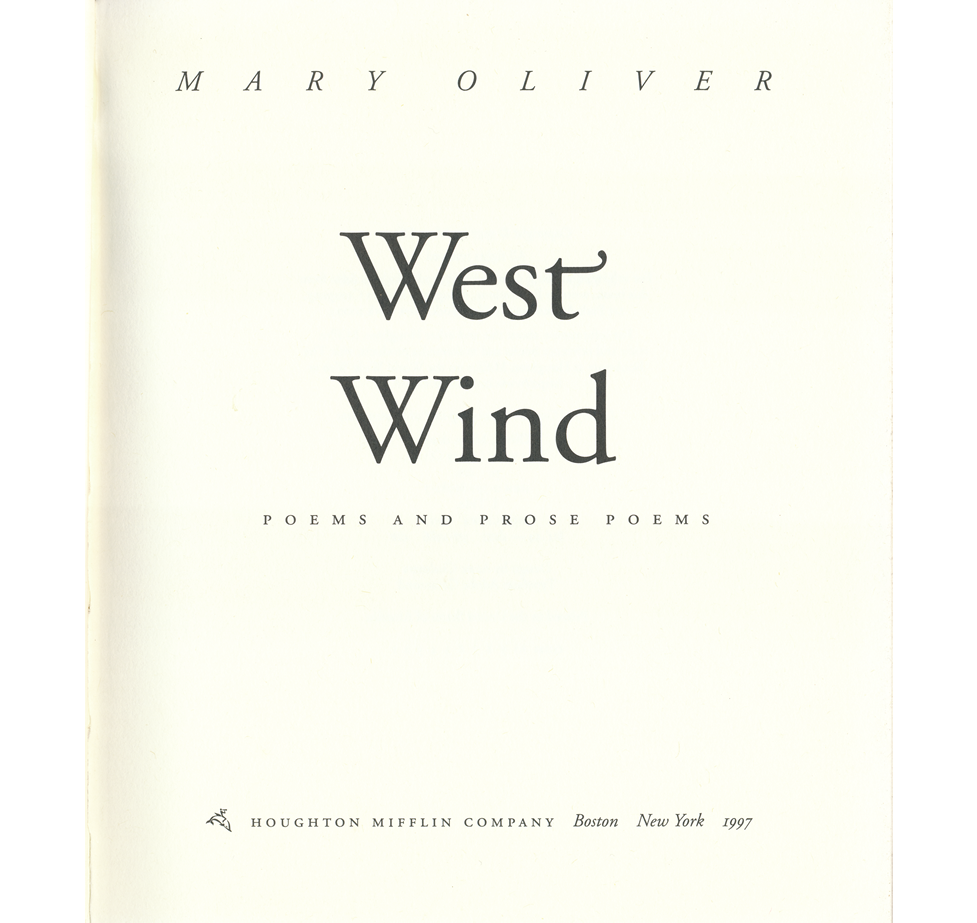
West Wind
Poems and Prose Poems
By Mary Oliver
1997 | Houghton Mifflin Company Boston | 63 pages
Maples
The trees have become
suddenly very happy
it is the rain
it is the quick white summer rain
the trees are in motion under it
they are swinging back and forth they are tossing
the heavy blossoms of their heads
they are twisting their shoulders
even their feet chained to the ground feel good
thin and gleaming.
nobody can prove it but any fool can feel it
they are full of electricity now and the shine isn't just pennies
it pours out from the deepest den
oh pretty tres
patient deep-planted
may you have many such days
flinging your bodies in silver circles shaking your heads
over the swamps and the pastures
rimming the fields and the long roads hurrying by
The Triumph of Seeds
How Grains, Nuts, Kernels
Shaped Human History
By Thor Hanson
2016
The Ladies' Flower Garden
of Ornamental Annuals
By Mrs. Loudon (Jane)
1840
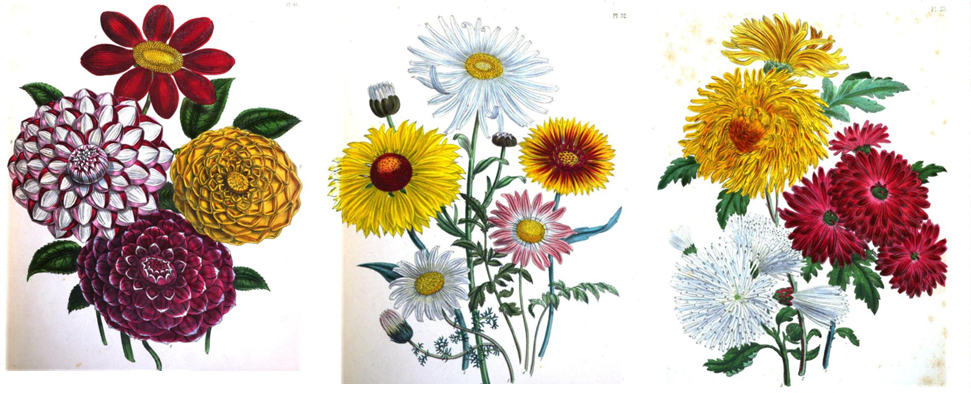
The Ladies' Flower Garden
of Ornamental Greenhouse Plants
By Mrs. Loudon (Jane)
1858
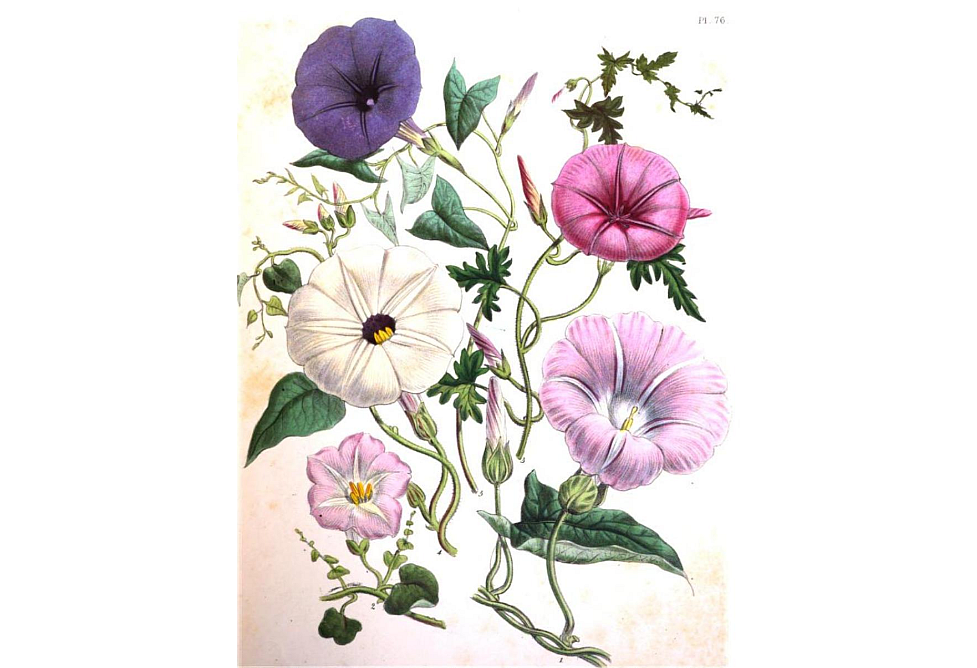
The Ladies' Flower-Garden
of Ornamental Perennials
By Mrs. Loudon (Jane)
1844 | William Smith London | 342 pages
A typical passage: “In 1807, Mr. Salisbury tried some Dahlias for the first time upon open ground in his garden at Mill Hill. About this time Professor Willdenow attempted to change the name of Dahlia into Georgina, in honour of a Russian botanist named Georgi, under pretense of a similar name to Dahlia having been previously given to another plant by Thunberg. Thunberg's plant was, however, named in honour of an English botanist, Mr. Dale, and was called Dalea.… When the Continent was thrown open in 1814, the British amateurs and florists who visited it were quite astonished at the beauty of the Dahlias in the French gardens; and since that period, many hundreds of Dahlias have been raised in Great Britain of great beauty of form and brilliancy of colour.”
Mrs. Loudon (1807-1858) continues her analysis and social history of the Dahlia for several thousand more words. She wasn't shy writing about her beloved flowers, and the Dahlia obviously was one of her favorites. “Few flowers are now better known, or more generally cultivated, than the Dahlia," she writes, “but, notwithstanding its present popularity, its early history is not generally known.”
One reason we enjoy Mrs. Loudon's books is her confident, often casual, and quietly authorative style; and the colorful paintings of flowers that grace each volume. Full-color plates were a publishing rarity in mid-nineteenth century Britain. But the William Smith publishing house in London decorated Mary Jane Loudon's floral books with dozens of full-color images — and they're downright beautiful. You might call Jane Loudon the George Eliot of botanists in her era — a brilliant woman making soft but lasting waves in a publishing scene dominated by men.
The four books featured in our library are available for free at Google Books. And, if you're a science fiction fan, we recommend her tale of supernatural horror, The Mummy! A Tale of the Twenty-second Century published in three volumes in 1828 when she was a young lass of twenty-one.
British Wildflowers
By Mrs. Loudon (Jane)
1846
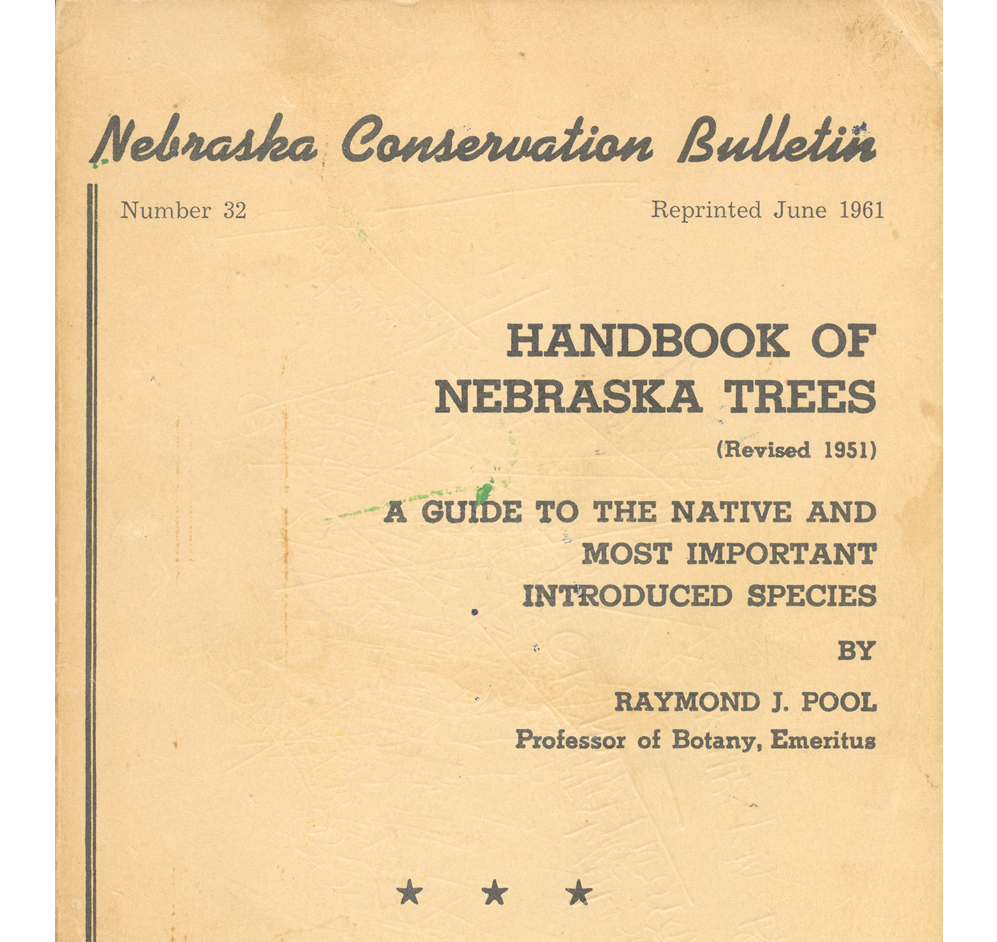
Handbook of Nebraska Trees
A Guide to the Native
and Most Important Introduced Species
By Raymond J. Pool
1951 1961 | University of Nebraska Press | 179 pages
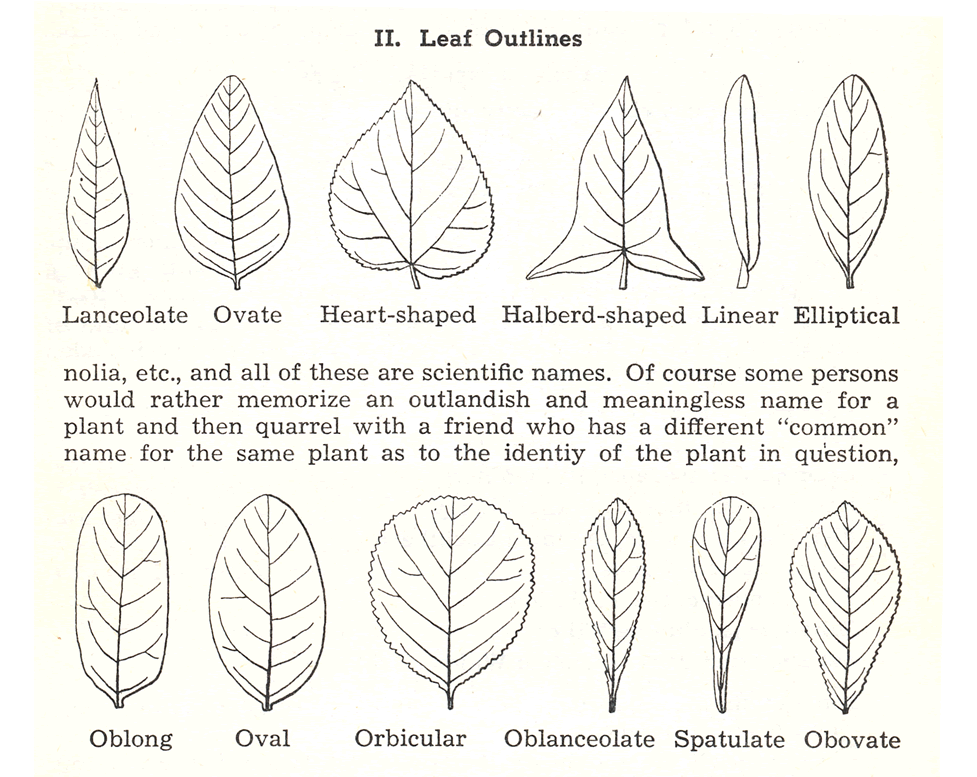
“The primary purpose of this handbook is to enable the people of this state to identify our native trees and the common introduced species of trees as well.” —Professor Raymond J. Pool
Professor Raymond J. Pool's Handbook of Nebraska Trees has a publishing history dipping back to the early 1900s with ties to a 1913 book about the trees of Michigan. The Michigan guide book featured illustrations drawn by Professor Chas. H. Otis, and those illustrations were loaned to the Nebraska tree project. The First Edition appeared in 1919, the Second Edition in 1929, and the Third in 1951 when Dr. Pool (1882-1967) was Emeritus Professor of Botany at the University of Nebraska.
Most of the trees presented in the Nebraska handbook will be found in many other states, which is one good reason I keep it handy here in the Ozark Highlands. The simple act of reading about trees is also rewarding — we like to compare and contrast entries about individual species in one handbook and then another. For instance, the Nebraska handbook lists 10 oaks while the Arkansas handbook lists 17. I guess you could call me a tree nerd. And you'd be right, too.
Cambrian Ocean World
Ancient Sea Life of North America
By John Foster
2014
Oceans
A Very Short Introduction
By Dorrik Stow
2017 | Oxford University Press | 184 pages
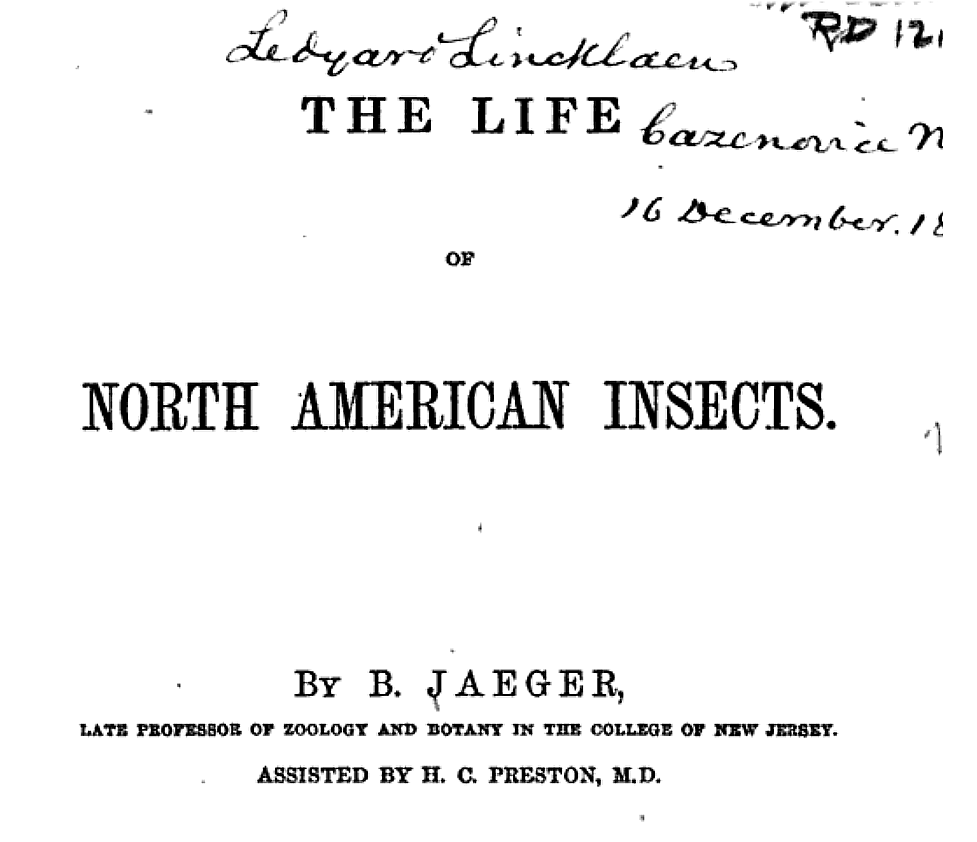
The Life of
North American Insects
By B. Jaeger
Assisted by H. C. Preston, M.D.
1859 | Harper & Brothers New York | 426 pages
Why study insects? “Philosophy has invested even the commonest objects of Nature with charms unknown to the uneducated,” Mr. Jaeger wrote. “The conditions of our being are such, that we are tied by destiny to every object; and the more interesting and important to us becomes a full understanding of our mutual relations and dependencies in the vast arena of life. No part of Natural Science, therefore, can be considered unimportant or devoid of interest. Still there are differences in our appreciation of its individual parts, as there are differences in our tastes and mental capacities. If we are accustomed, like the sportive birds in their splendid plumage and graceful motions, to look down upon the mammalia as the real laboring class in the dominion of the Animal Kingdom; if we despise the Reptiles on account of their ugliness and the deadly venom which they contain, still we may approach with pleasure the class of Fishes, the greatest part of which are excellent food, a valuable article of commerce, and a great source of wealth to many nations.”
OK, Professor Jaeger, but why study insects? “No branch of Natural History deserves a more careful and thorough study than the class of Insects, because none is more abounding in use or injury to man,” Professor Jaeger (1789-1869) replies. “The study and knowledge of the companions that swarm around us on every tree and flower, in the air about us, and on the earth beneath us, must be important and interesting to everyone, of whatever mental capacity or taste. And it has been very generally so considered, for the rich and poor, lettered and unlettered, the statesman and the philosopher, manufacturer and merchant, husbandman and horticulturist, clergyman and physician, have often made this study the principal occupation of their leisure hours.”
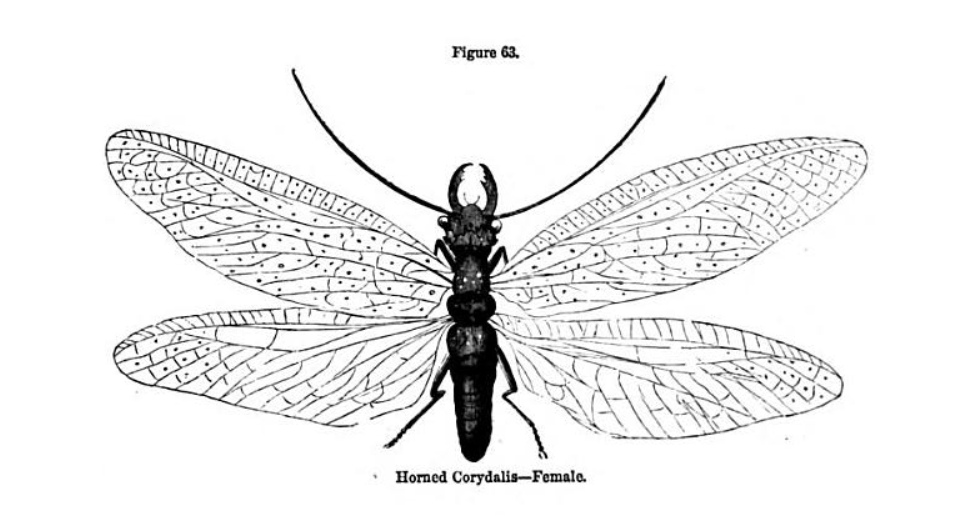
Our professor tells us that Beetles and Butterflies attract “universal admiration” — and that those humans to “whom the Book of Nature is a sealed book have to be enticed, by the splendor of their color and their fairy-like motions, to hunt for them in meadows, fields, and woods, to place them as ornaments in rich frame-work upon the walls of their parlors, or to nourish them with the greatest care in their rooms, that they may not lose a single hair of their magnificent, variegated dress.”
Carry on, Professor Jaeger. This is interesting stuff. “No class of animals presents so great diversity of occupation and so many grades of society as the Insects. Here we see the industrious laborer busy at his work, there the lazy lounging beggar; here upon the leafy boughs, or before the gates of their subterranean abodes, myriads of musicians are playing their fiddles, and there the skillful artist is building his wonderful dwelling; while above in the blue sky flutters a high nobility, clad in gold, silver, purple, and silk, fed on the nectar of flowers; and on the earth below are lurking troublesome drones and disgusting parasites.”
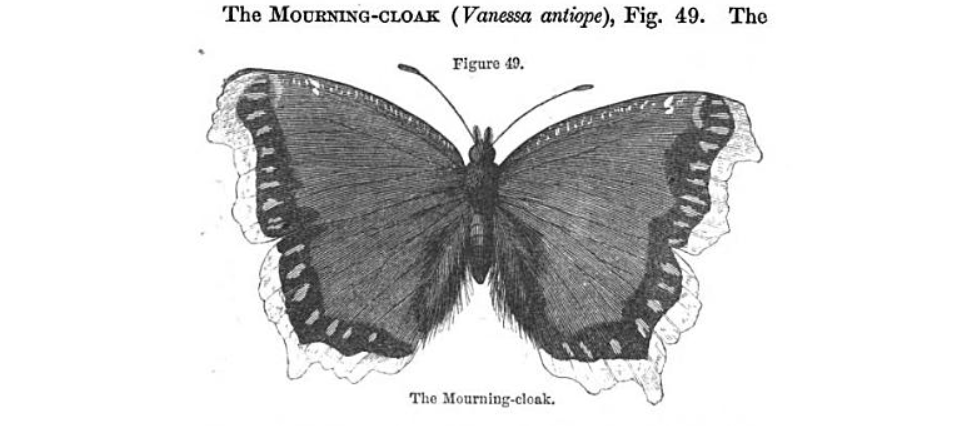
This style of writing, elegant always and at times romantic in the character of the age, appears more oft than not in Nineteenth Century books of natural history and scientific inquiry, usually in the Preface by way of setting the stage for the drier science soon to follow. Professor Jaeger's writing style makes this dusty old book worth our while. His most widely distributed work (1849) was the Class Book of Zoology: Designed to Afford to Pupils in Common Schools and Academies a Knowledge of The Animal Kingdom with a List of the Different Species Found in the State of New York. The Whole Scientifically and Systematically Arranged. Whew!
Now it's back to the insects: “In order to perfect the task, I have rambled many sunny days and many tropical nights, guided by the dim and twinkling lights of heaven, through open fields, dark woods, and damp meadows, stimulated by the satisfactory assurance that these labors can not fail of being useful to students of Nature, and encouraged by the hope that thus a way may be opened to a more general knowledge of Natural History, and a deeper admiration of the ten thousand sublime and beautiful creatures that, in one common song of praise, pour out their gratitude and proclaim their dependence upon one common Father.”
The Life of North American Insects can be found on Google Books free of charge.
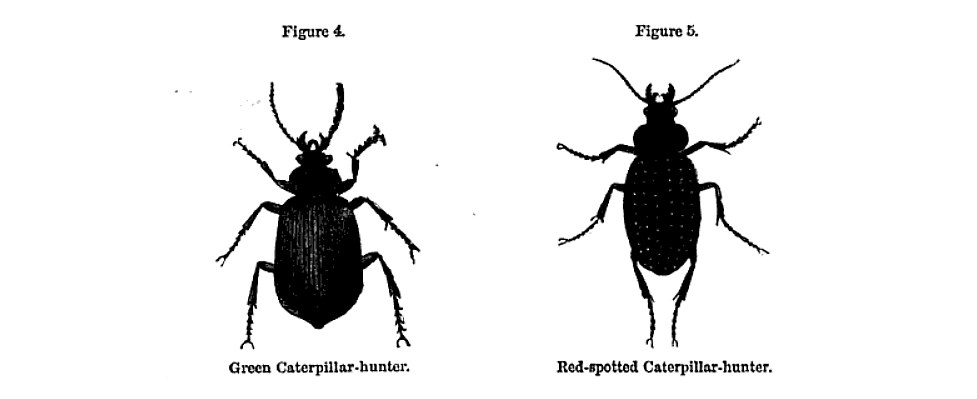
Greenhouse Gardening
How to Build a Greenhouse
and Grow Vegetables
By Richard Bray
2018
Sibley Birds East
Field Guide to Birds
of Eastern North America
By David Allen Sibley
2016 | Alfred A. Knopf New York | 439 pages
Atlas of a Lost World
Travels in Ice Age America
By Craig Childs
2018
Origin Story
A Big History of Everything
By David Christian
2018
Beyond Words
What Animals Think and Feel
By Carl Safina
2015
The Work of Nature
How the Diversity of Life Sustains Us
By Yuvonne Baskin
1997 | Island Press Washington D.C. | 263 pages
The Idea of Wilderness
From Prehistory to the Age of Ecology
By Max Oelschlaeger
1991 | Yale University Press New Haven | 477 pages
Three chapters are devoted to the icons of nature writing: Henry David Thoreau, John Muir, and Aldo Leopold. We learn about the nature poetry of Robinson Jeffers and Gary Snyder. Other chapters take us back to ancient times as we pass from myth to history. The author also delves into philosophy and the alchemy of modernism.
Mr. Oelschlaeger digs deep into the roots of a concept harder to sustain than it is to identify. He writes: “I wish to explore what remains for most — and has been for me — a terra incognita, a forbidden place, a heart of darkness that civilized people have long attempted to repress — that is, the wilderness with the human soul and without, in that living profusion that envelops all creation.”
The Idea of Wilderness is considered essential reading in some circles of the university intelligentsia, especially those concerned about wilderness preservation. The author, a professor of philosophy and religious studies, has created “a densely absorbing book, rich in ideas and information,” according to one critic. Yes, the text can be dense at times, but it also soars elegantly into the realm of ideas, filling a useful place in the canon of nature writing.
Plants of the
Lewis and Clark Expedition
By H. Wayne Phillips
2003
The Practice of the Wild
Essays
By Gary Snyder
1990
The Annihilation of Bitterness
Philosophical Speculations
By Walt McLaughlin
1996 | Wood Thrush Books St. Albans Vermont | a chapbook of 24 pages
“The urge to wildness can be readily found among the people who inhabit so-called higher civilizations,” the philosopher writes. “Quite often, the word ‘wild’ is associated with savage, barbaric or unruly behavior. But in its purest form, the urge to wildness is simply an urge to interact with nature — to spend time in the place that we once called home.”
Mr. McLaughlin has crafted a little jewel of poetic prose in his chapbook, a comfortable place where the concepts of wildness, wilderness, and wild nature receive creative treatment. “Only civilized people have any concept of wilderness,” Walt writes. He contends that the urge to wildness in the heart of man should be universal, asking, “How can a human being possibly reach its full potential if it can't run?”
The Annihilation of Bitterness presents the reader with a series of aphorisms linked to brief essays about death, God's role in the wilds, the Apocalypse, alienation, morality, progress, utopia, civilization, mankind's place in nature, and “an intoxicating brew of bitterness and hatred.” Walt's philosopher’s cynicism is tempered with the hope (implied) nature offers to humankind. “Immersion in the utterly un-human world of wild nature may be the quickest way to grasp the nature of humanity,” he writes.
A naturalist of the highest order, Mr. McLaughlin runs a very special bookstore in St. Albans, which is also home to Wood Thrush Books, a publishing venture specializing in nature writing and nature-related topics. Having purchased several dozen used books from Wood Thrush, we can attest to the excellent quality of the product he sells — the books are reasonably priced, too, with free shipping for all. Look him up on the Internet if you are so moved. And, BTW, I've an extra copy of The Annihilation of Bitterness. It's free to the first wild man or wild woman to ask.
The Efficacy of Wild Nature
A Deep Woods Philosophy
By Walt McLaughlin
2004 | Wood Thrush Books St. Albans Vermont | a chapbook 34 pages
The Lost Notebooks
of Loren Eiseley
Edited by Kenneth Heuer
1987
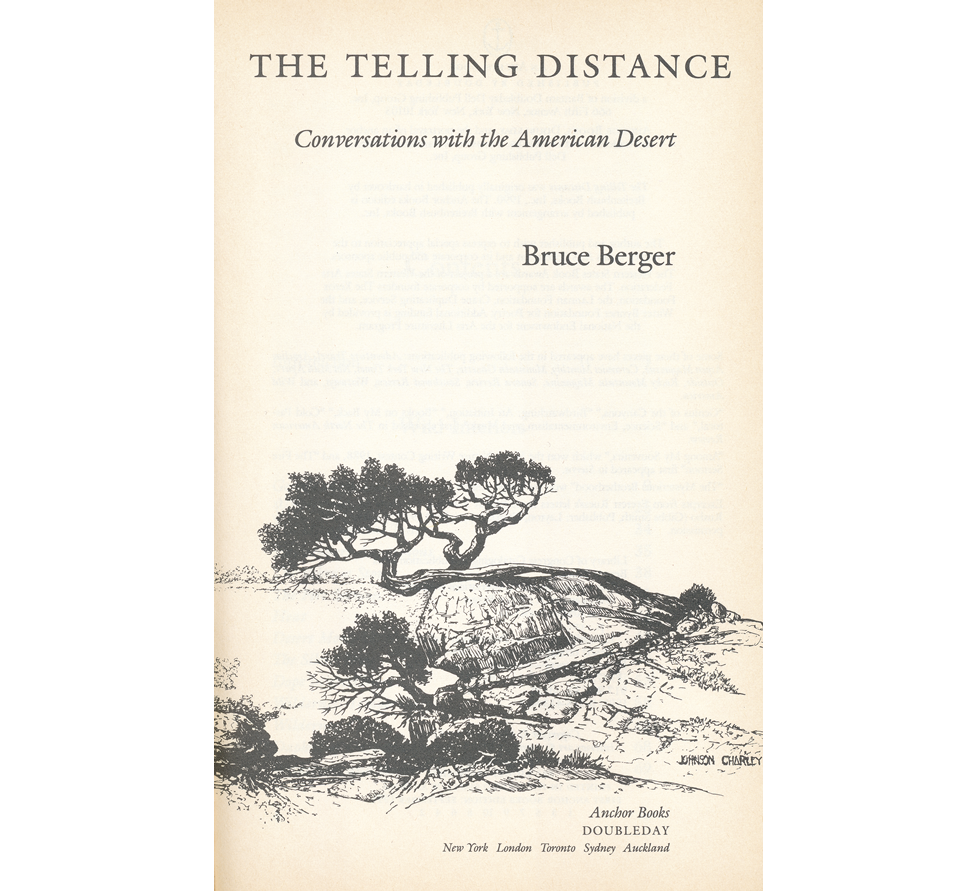
The Telling Distance
Conversations with the American Desert
By Bruce Berger
1990 | An Anchor Book Doubleday New York | 243 pages
Organized into five cleverly defined sections and a postlude, The Telling Distance gathers together the author's finest essays from a career sharply defined by his passion for the desert. The section titles provide clues to the writer's sensibility: Wild Interiors; Designer Deserts; Pinions, Piñons, and Opinions; Pursuit and Flight; and The Uses of Emptiness.
The Land of Journey's Ending
By Mary Austin
1924 1985
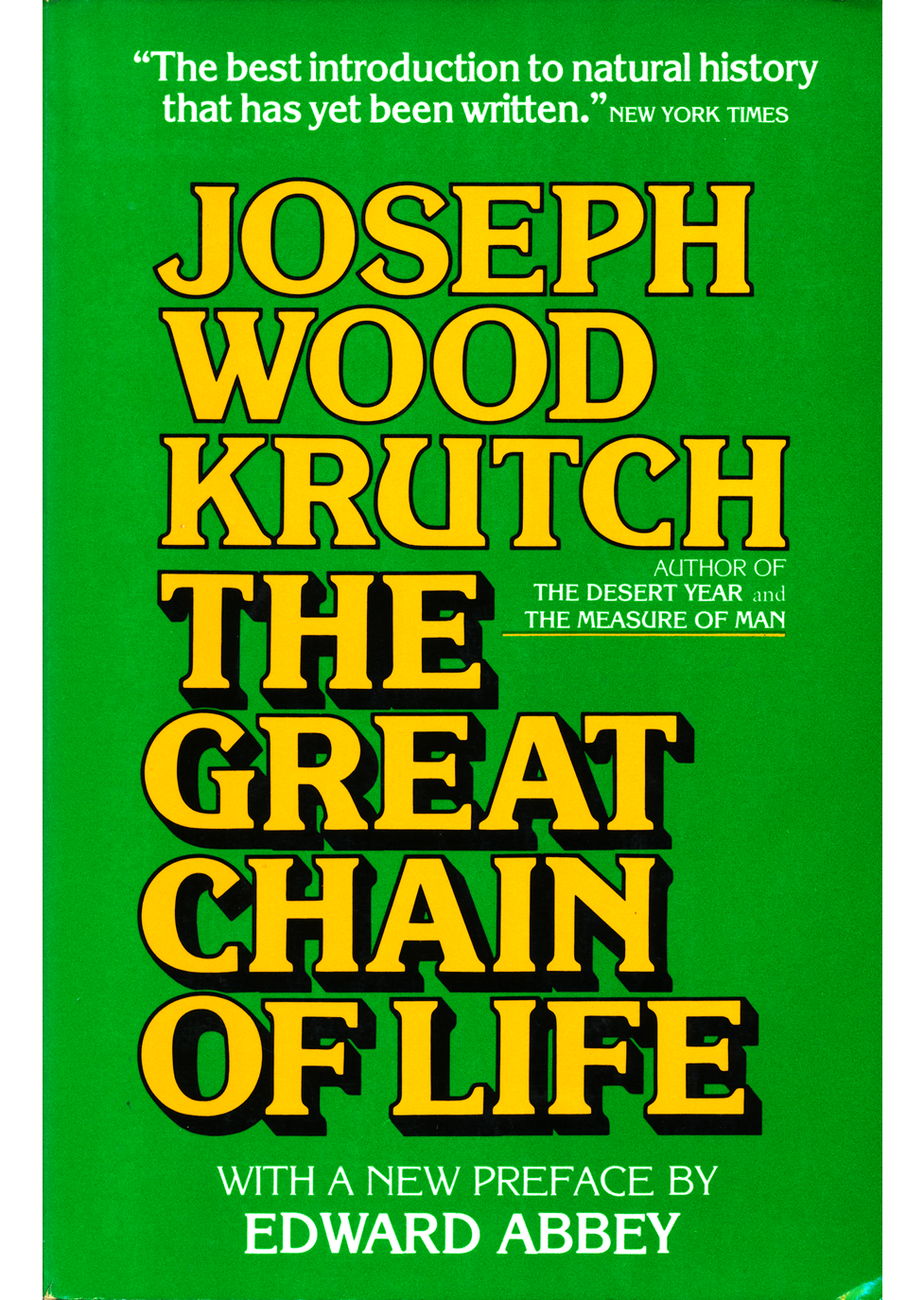
The Great Chain of Life
By Joseph Wood Krutch
Illustrations by Paul Landacre
1956 | Houghton Mifflin Company Boston | 227 pages
Loon Wisdom
Sounding the Depths of Wildness
By Walt McLaughlin
2014
The Control of Nature
By John McPhee
1989
The Essential
Aldo Leopold
Quotations and Commentaries
By Aldo Leopold
Edited by Meine and Knight
1999
How to Know the Wildflowers
By Mrs. William Starr Dana
1893 1989
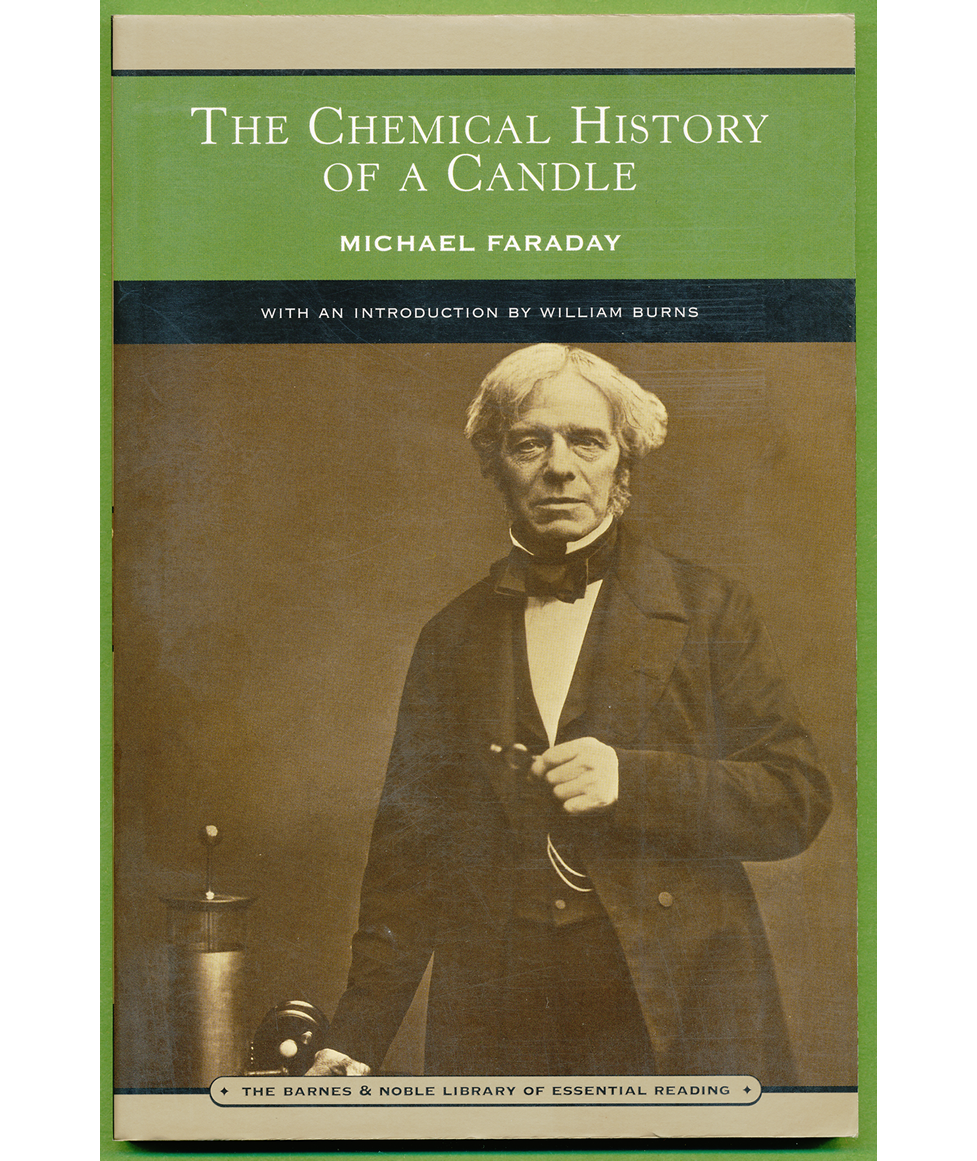
The Chemical History
of a Candle
By Michael Faraday
1861 2005 | Barnes & Noble New York | 117 pages
If a naturalist considers it de rigueur to search for beauty in natural phenomena, then the aesthetics of The Chemical History of a Candle should intrigue her. Mr. Faraday, considered by some to be the most enlightened experimental physicist of the nineteenth century, sees more than a flicker of light in the commonplace candle; rather, he sees interconnections — “atom by atom, link by link, has the reasoning chain been forged” — between all known sources of light on the one hand, and the life of the mind, the comfort of the hearth on the other. “All have their stories to tell,” Mr. Faraday (1791-1867) writes about the sources of light. “All, if they could speak (and after their own manner they can), might warm our hearts in telling how they have ministered to man's comfort, love of home, toil, and devotion.” At the center of it all comes the mystery of fire.

In the villa of Ormen, in the villa of Ormen
Stands a solitary candle, ah ah ah ah
In the centre of it all, in the centre of it all
Your eyes
So sings David Bowie in the final album of a life well-lived. But we digress and must turn away from the music. Plums and brandy, carbonic acid and charcoal, salt and potassium — each found their place in Mr. Faraday's innovative laboratory. In his lectures, Mr. Faraday sought “to arouse a sense of wonder in his listeners, and to show how the most commonplace things could arouse inspiration,” William Burns writes in the Introduction. The master scientist of the Royal Institution of Great Britain was less interested in the abstract, mathematical nature of his work, preferring instead to demonstrate to his students and colleagues the practical, oft mysterious nature of physics.
Here at Crow's Cottage, we contend that a grounding in the fundamentals of physics and chemistry makes the naturalist more aware of the dynamic, multi-faceted nature of life on Planet Earth. Ultimately, each of the sciences relate, in one way or another, to the stewardship and understanding of our shared environment, including the wild places where flora and fauna thrive ’neath the nurturing Sun.
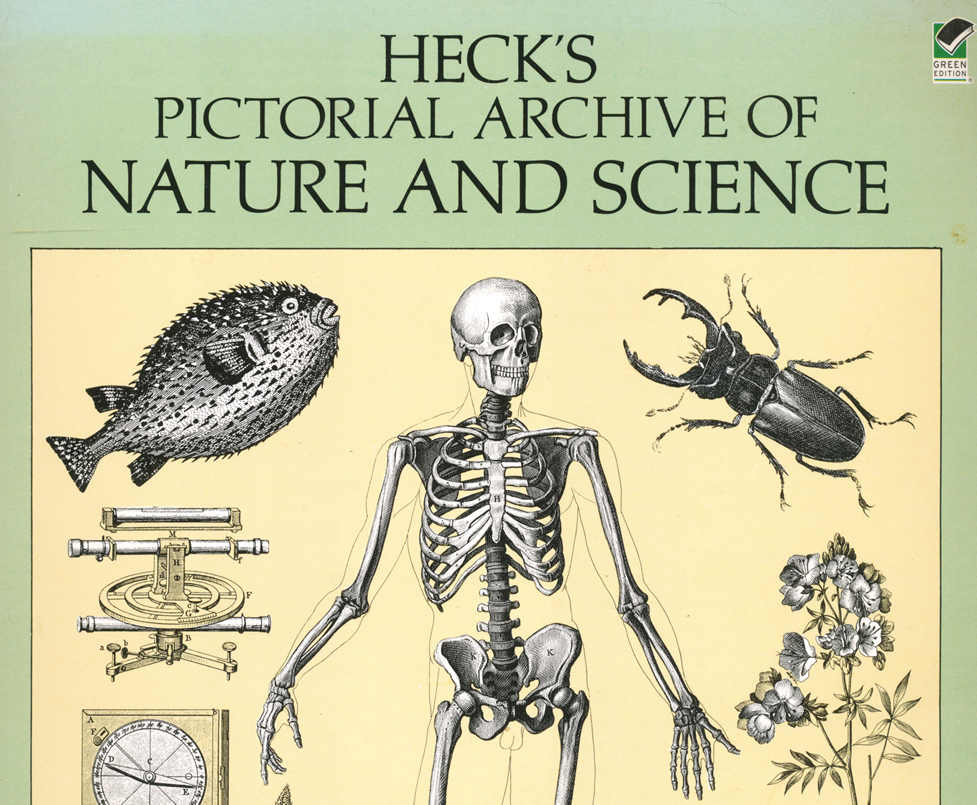
Heck's Pictorial Archive
of Nature and Science
By J.G. Hicks, Editor
1994 | Dover Publications New York | 174 pages
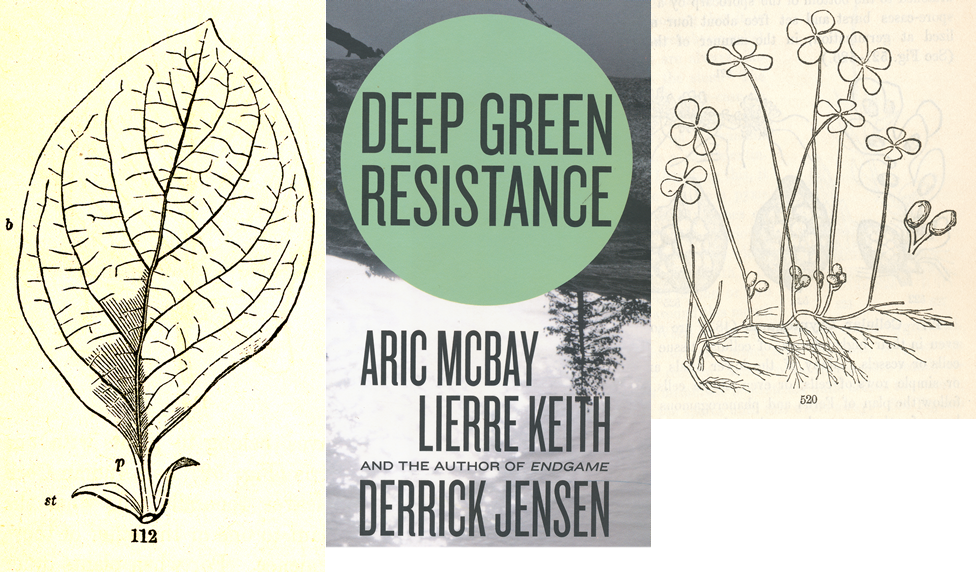
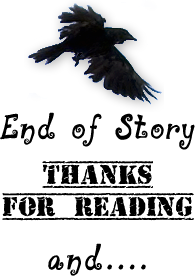


Plant of the Week: Petunia
Who doesn't like local? During our research, we found an article from March 5, 1999, by Gerald Klingaman, retired, former “Extension Horticulturist - Ornamentals” at the University of Arkansas Cooperative Extension Service, whose offices are a short journey east of Crow's Cottage. In a “Plant of the Week" feature, Professor Klingaman spins a sweet little tale, especially when he ruminates about early hybridization.
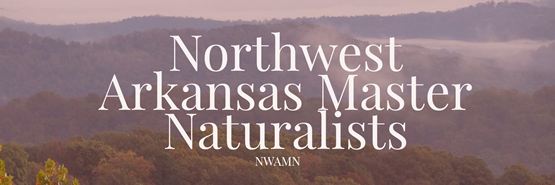
My Peeps
The Northwest Arkansas Master Naturalists are my favorite environmental, ecological, and altruistic organization — and not only because I'm a member. Not to brag, but we do good work. (OK, that is bragging — the street boy in me comes out now 'n then.) JB Portillo and Cheryl Larson are busy managing the website for NWAMN, who have members in Benton County, Washington County, Madison County, and Carroll County. No other organization in our state provides more volunteers in service of the natural world than the statewide Arkansas Master Naturalists. We invite you to take and look and think about adding your labor and expertise to the cause.

A New Home for a Rare Species
“Family, Fellowship And Rare Dogbane: A Rescue Mission” is the Crow's Cottage feature about an expedition by the Arkansas Native Plant Society to find a new home for a rare plant under threat from the mower's blades. The story was engendered by an especially mellow day at the end of May when family, botany, idealism, collective action, and comradeship came together to create a special memory.

Kids Fishing Derby
“Let's Go Fishing!” is Crow's Cottage feature about the 2019 Lake Wedington Kids Fishing Derby. If you like happy kids and big fish, you'll enjoy this photo essay about a two-hour adventure along the gently sloping shores of Lake Wedington, where about fifty youngsters, parents, grandparents, and U.S. Forest Service volunteers experienced the joys and rewards of fishing during a mellow Saturday morning in the lush and wilding hills of the Ozark Highlands.

“A Natural Promise: Embracing Hope” is the Crow's Cottage feature about the Arkansas Native Seed Program. Inspired by the Beaver Watershed Alliance's Quarterly Speaker Series at the West Fork Library in February, the essay calls on environmental leaders Jennifer Ogle, Clell Ford, Dave Leisure, and Jonathan Young to tell the story of a very important initiative of conservation and preservation.
As always, we invite you to write us letter of encouragement or correction. You can even chastise us if you're respectful. Expect a courteous and timely reply. And let us know if you'd like to receive a notice about new features. Our address is ebenezer@crowscottage.com


